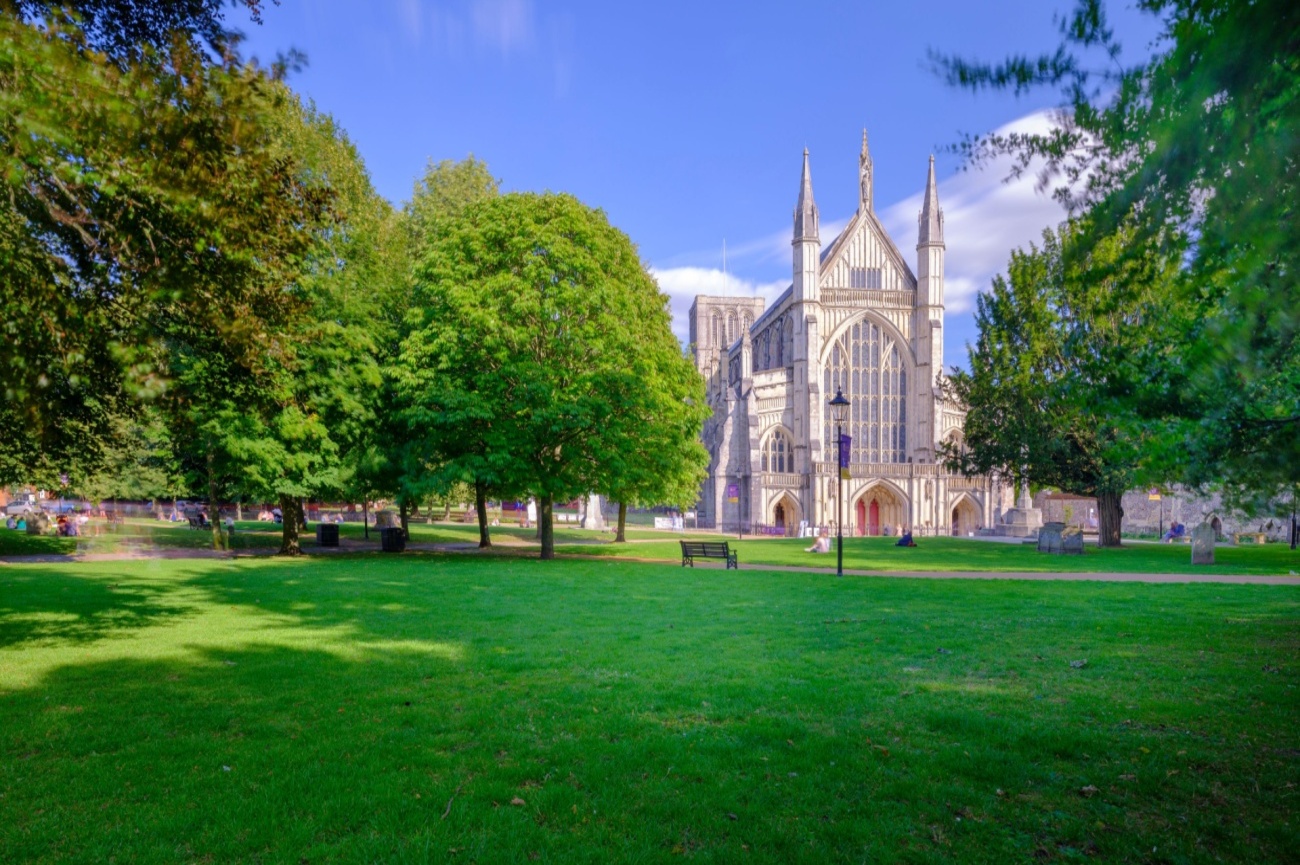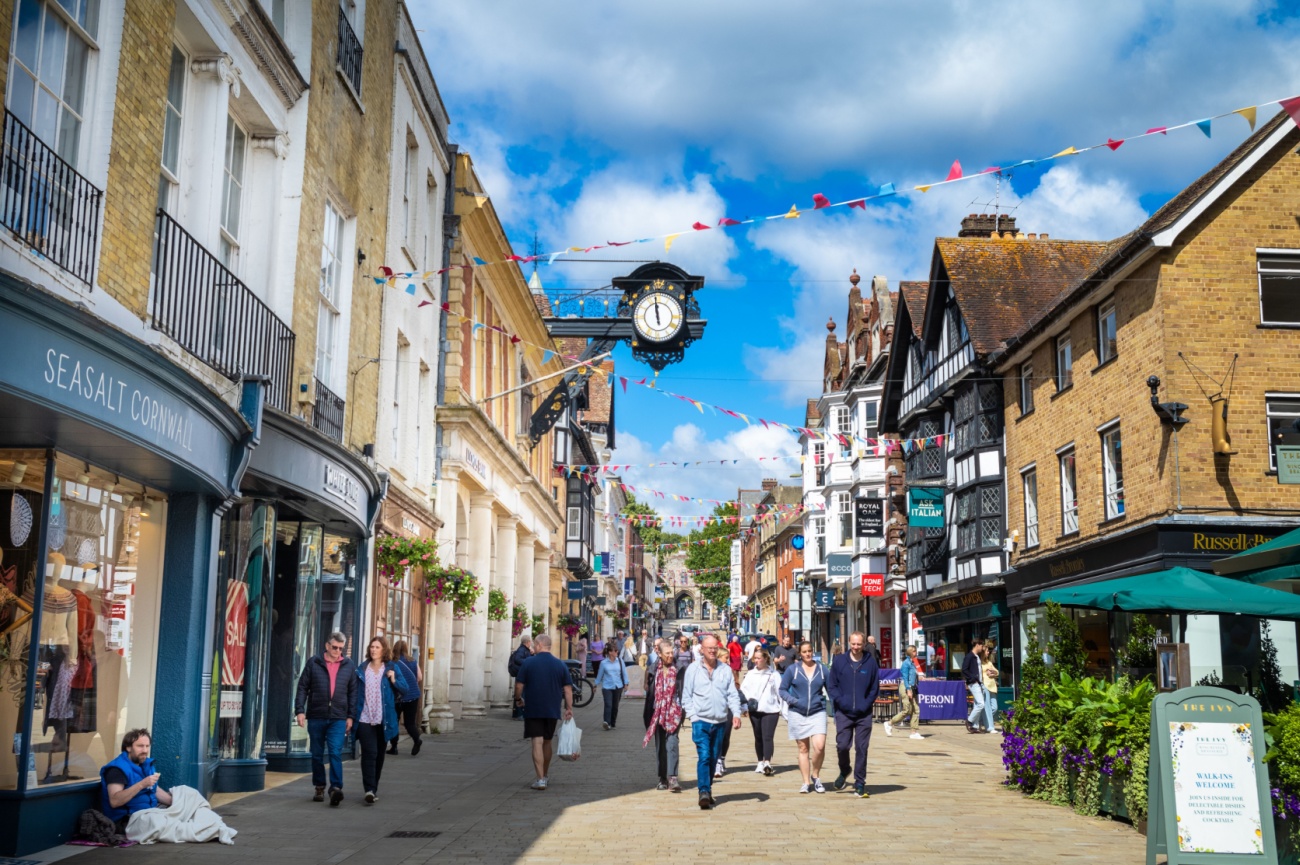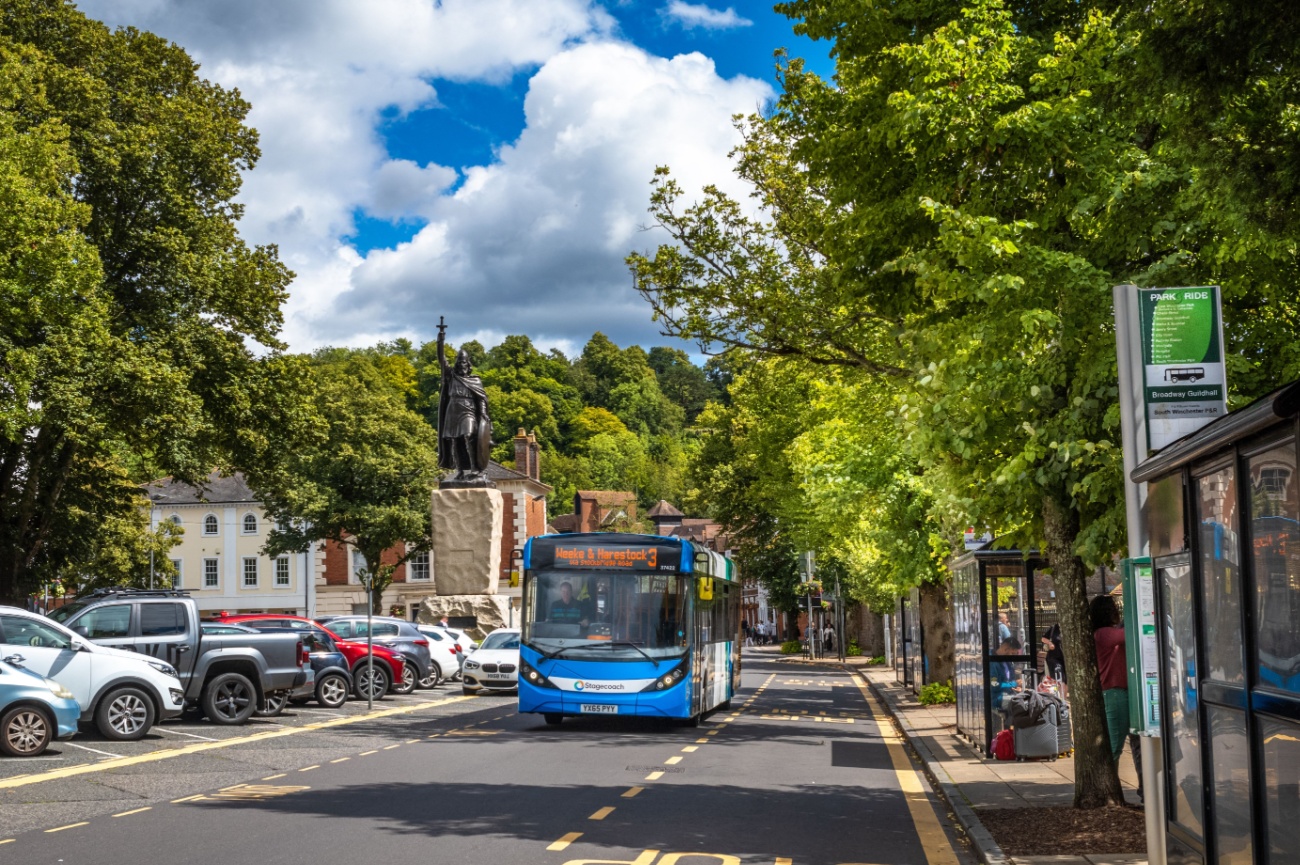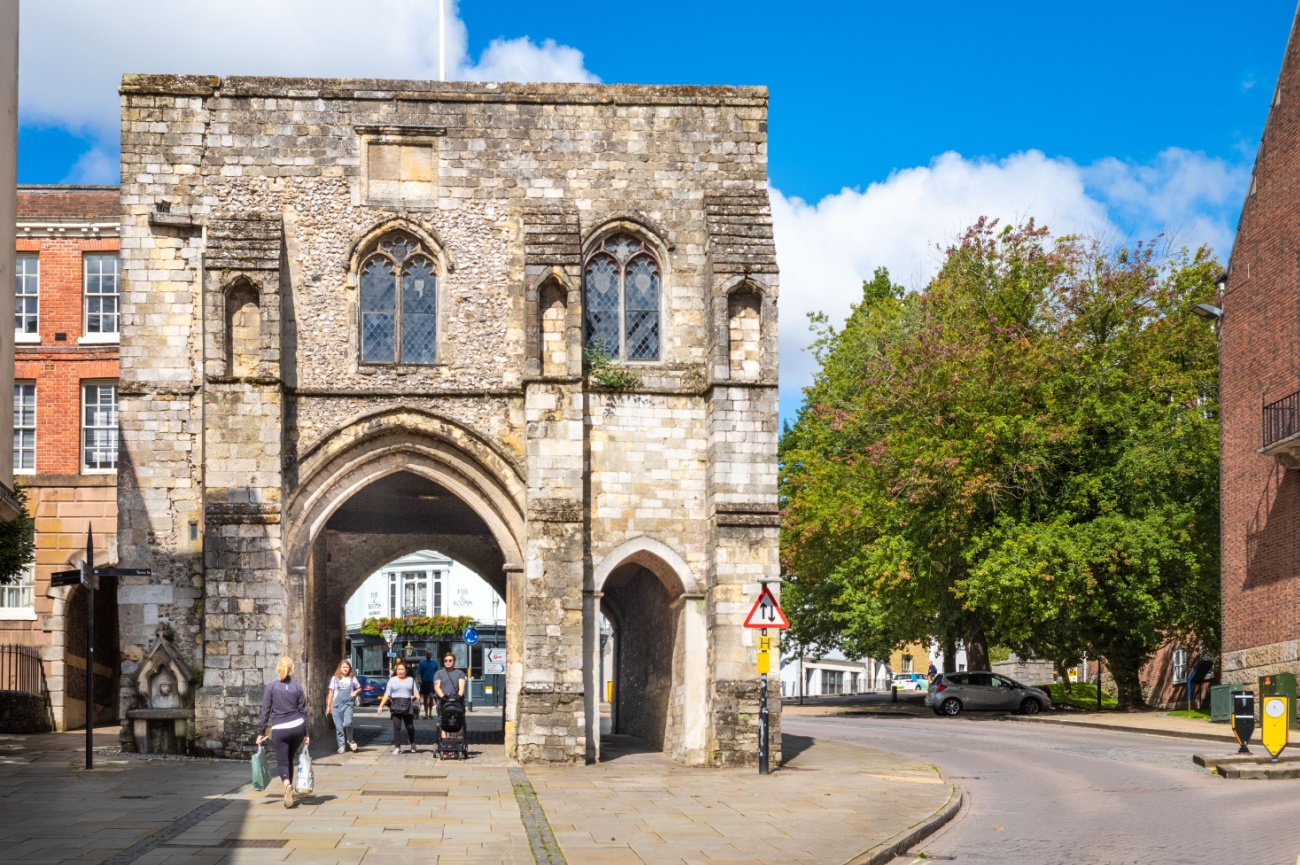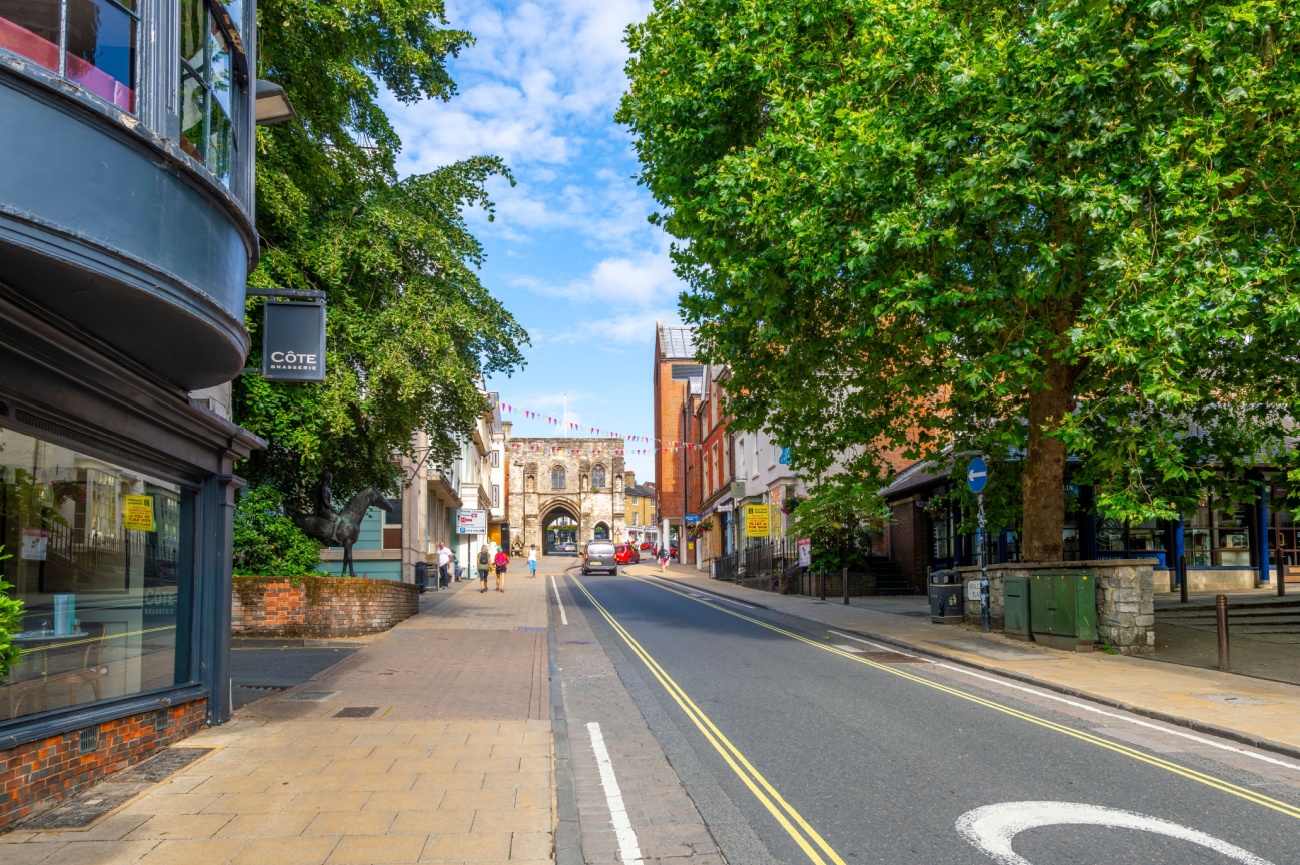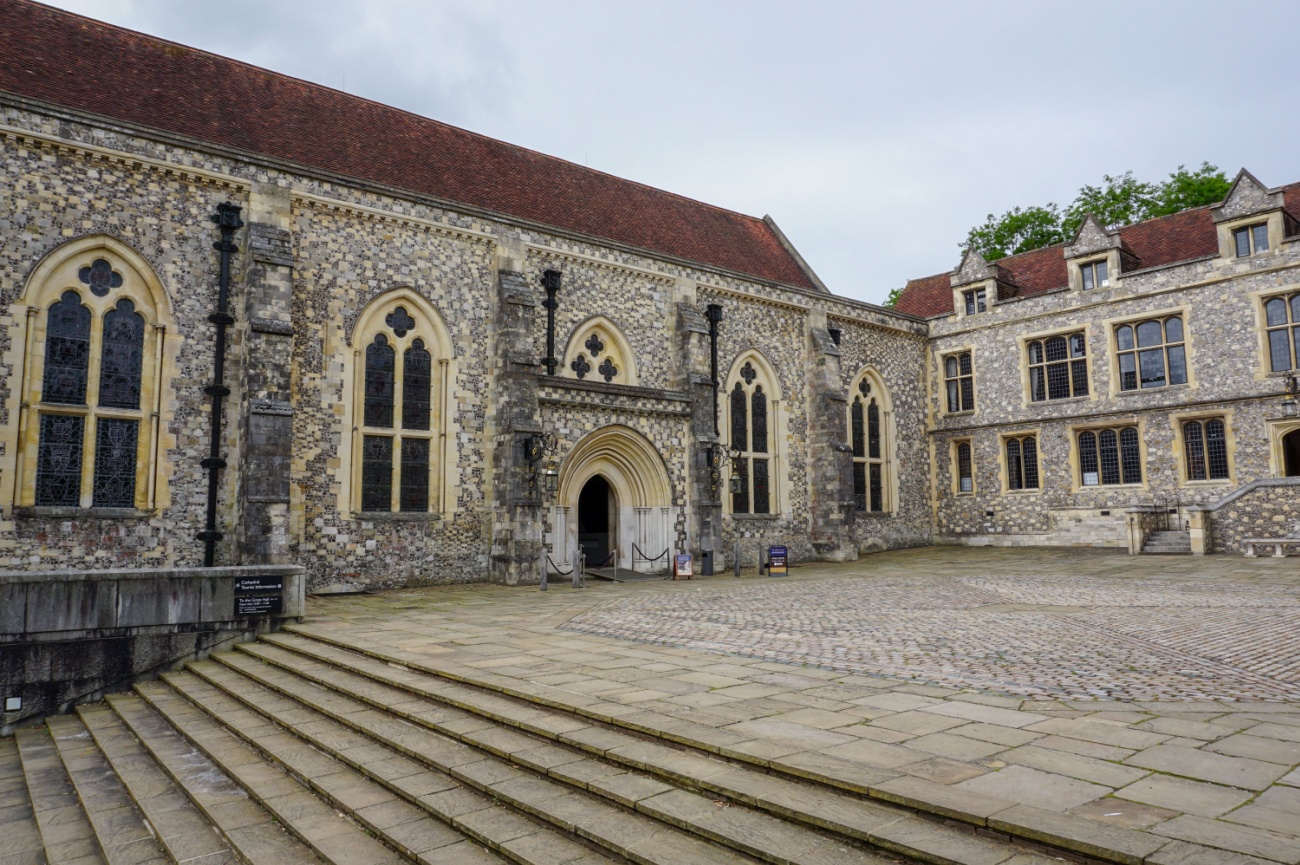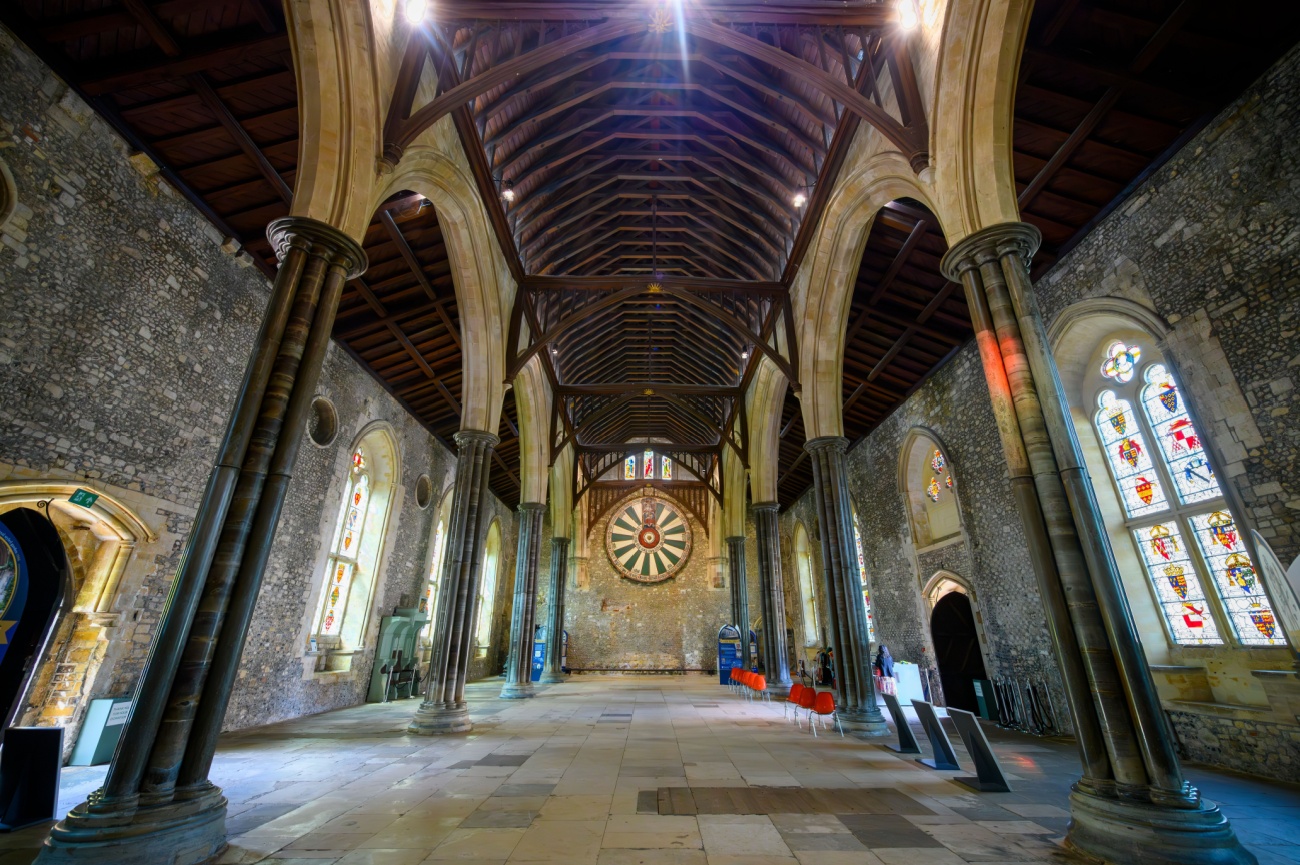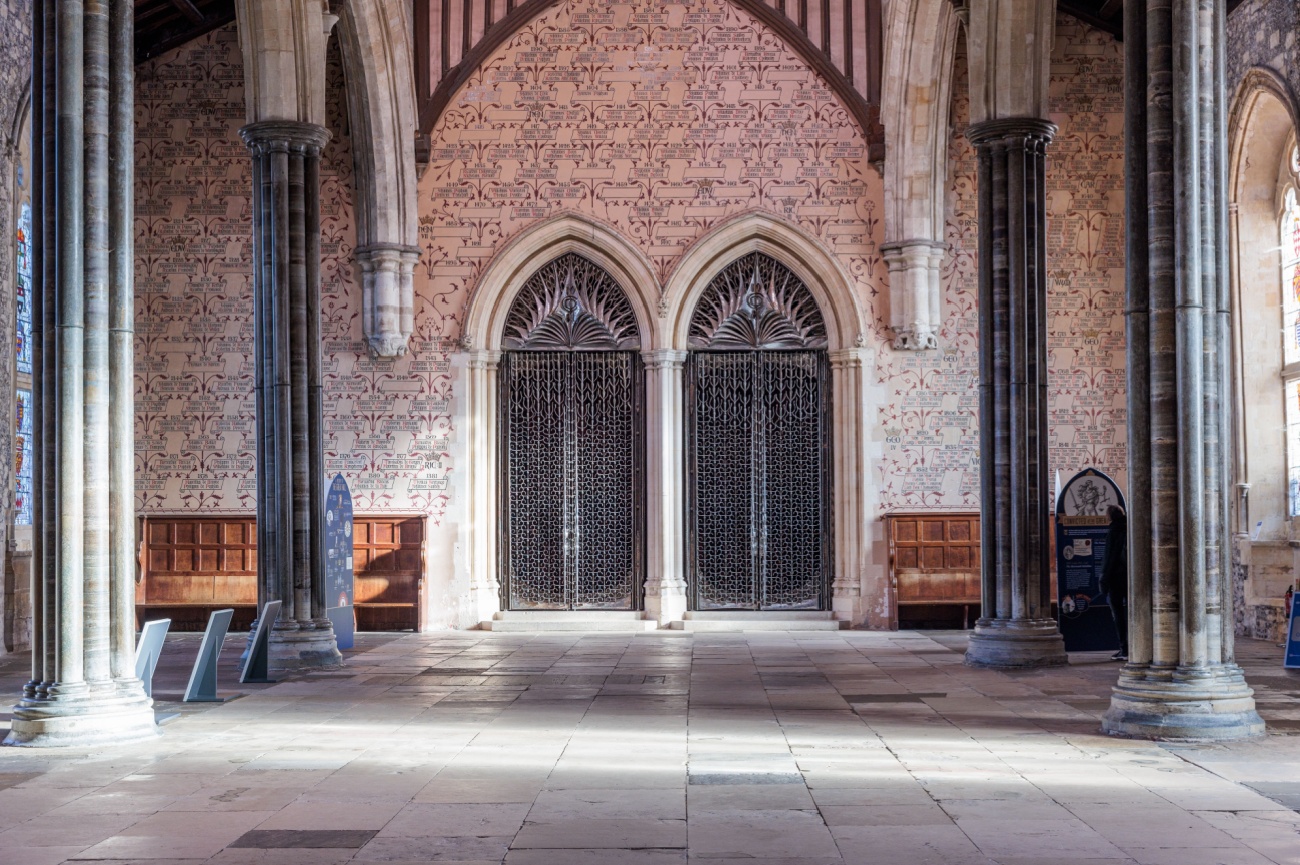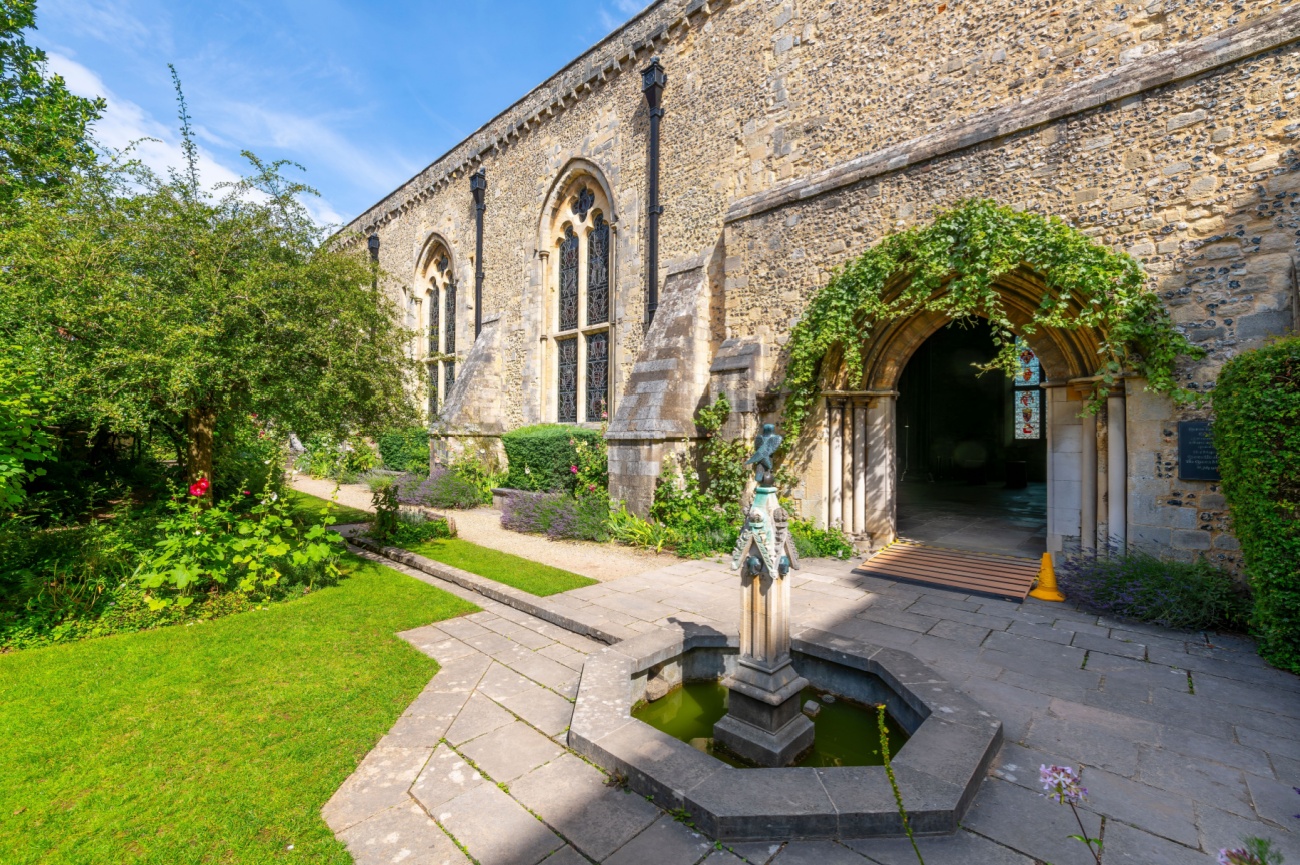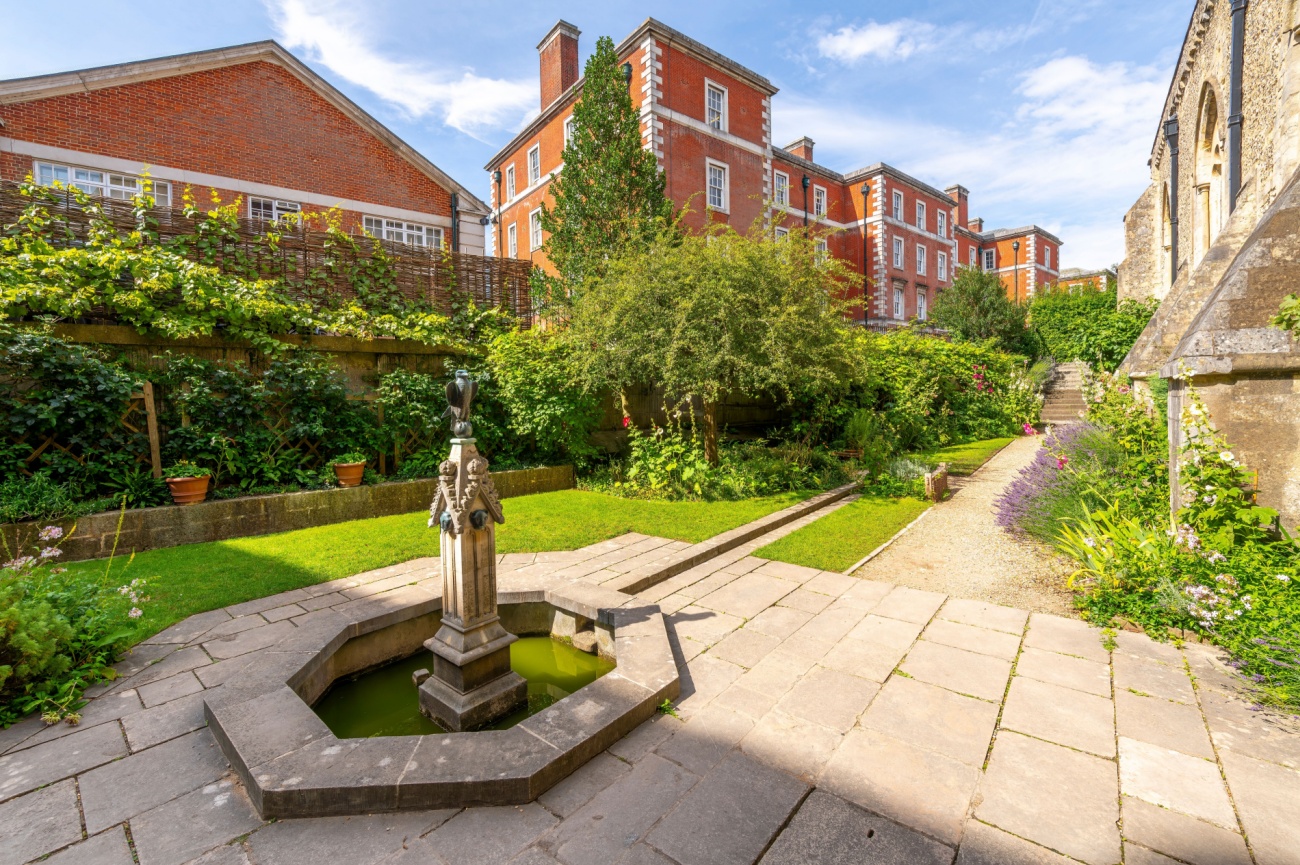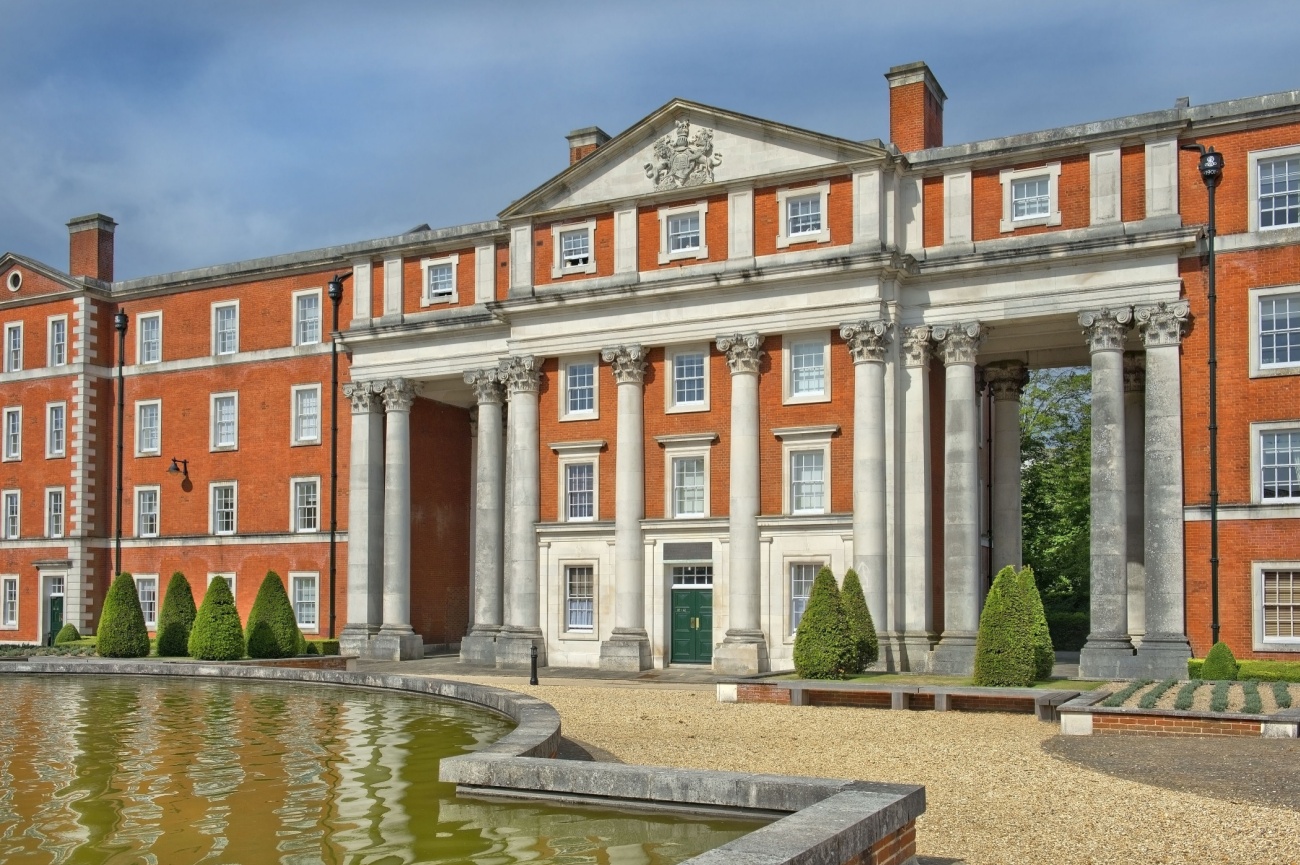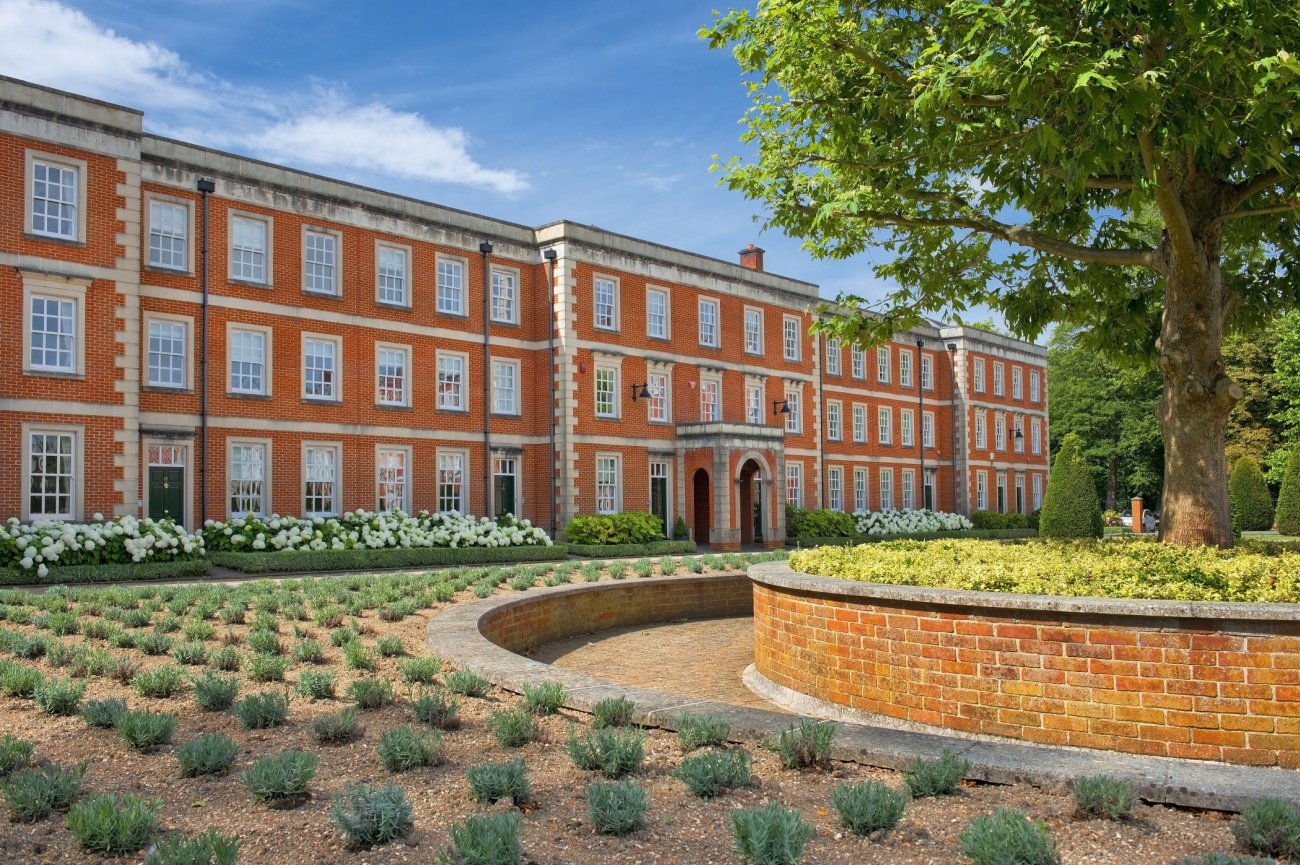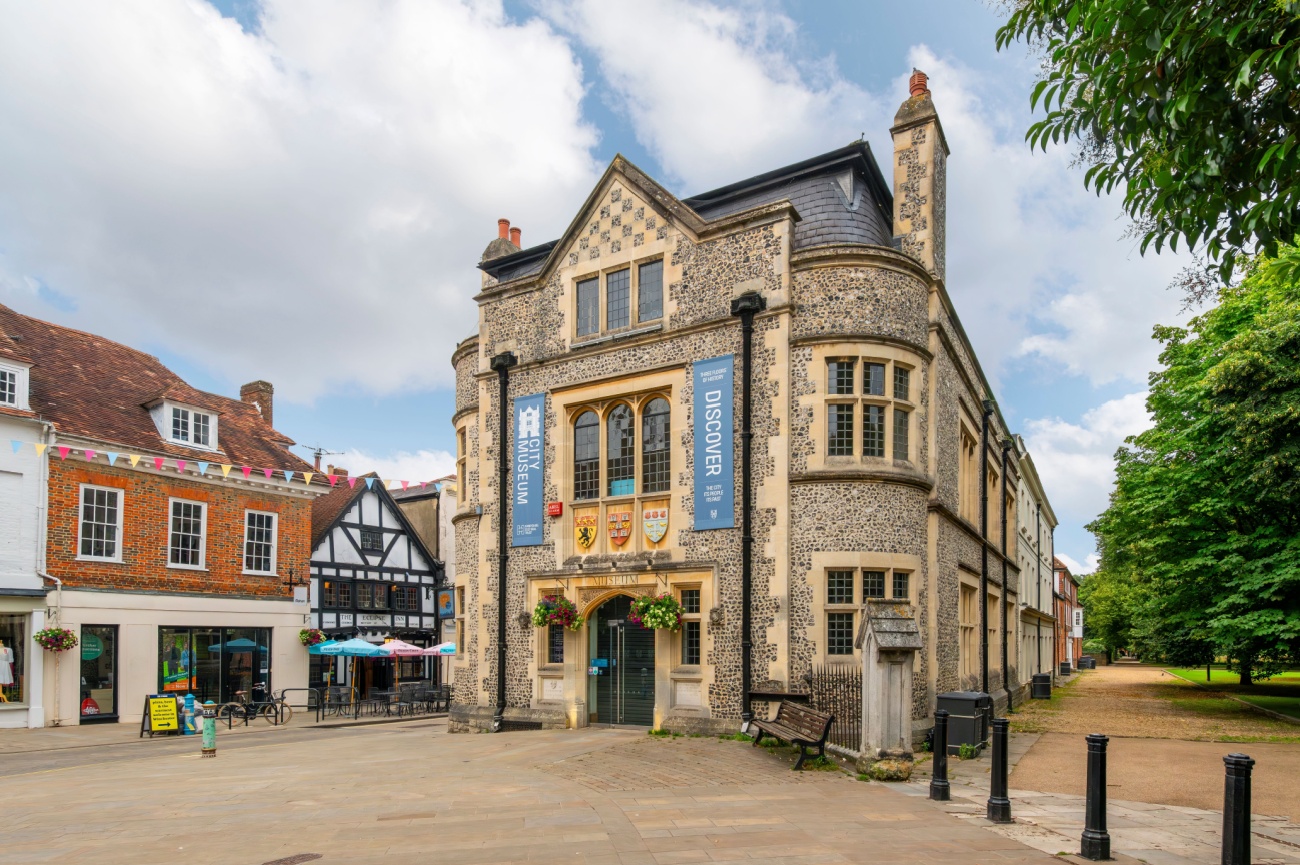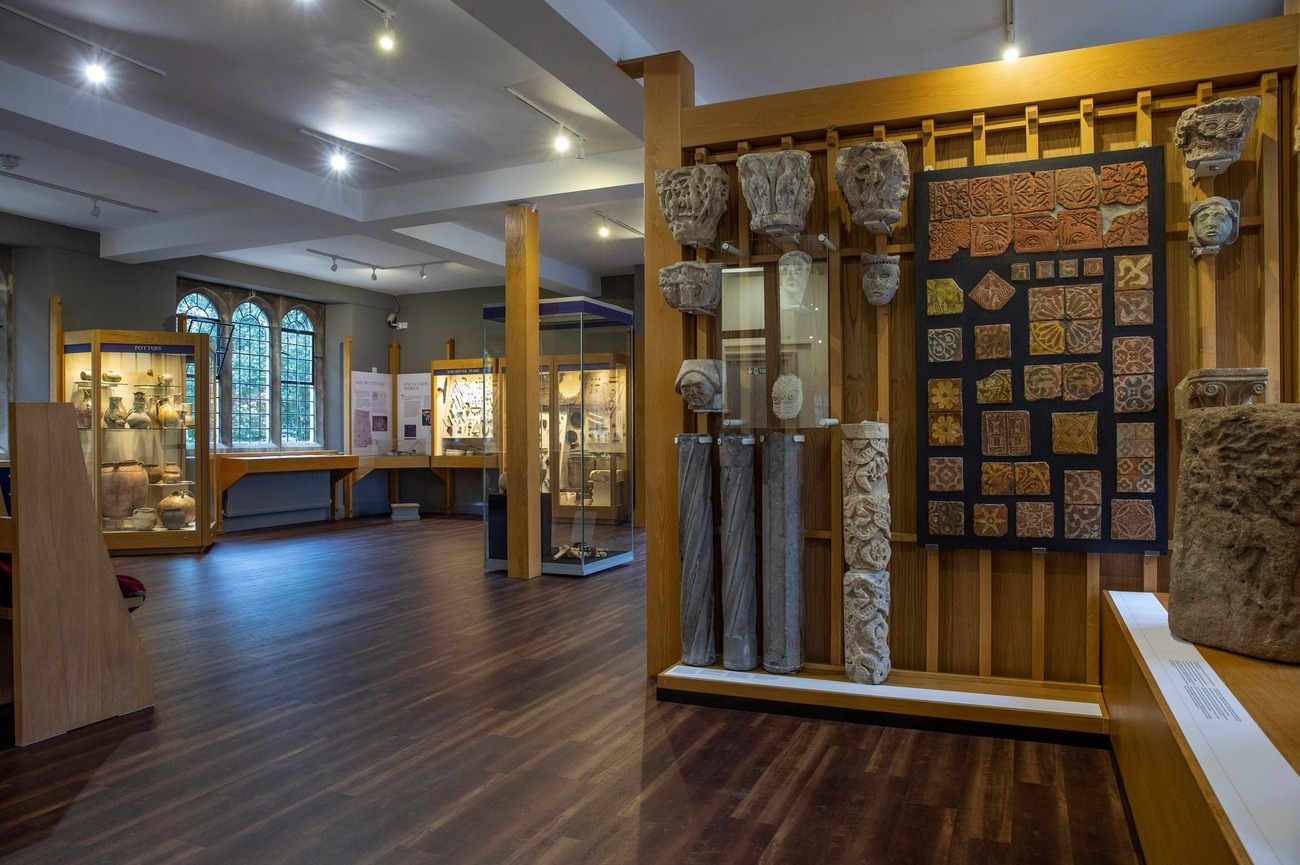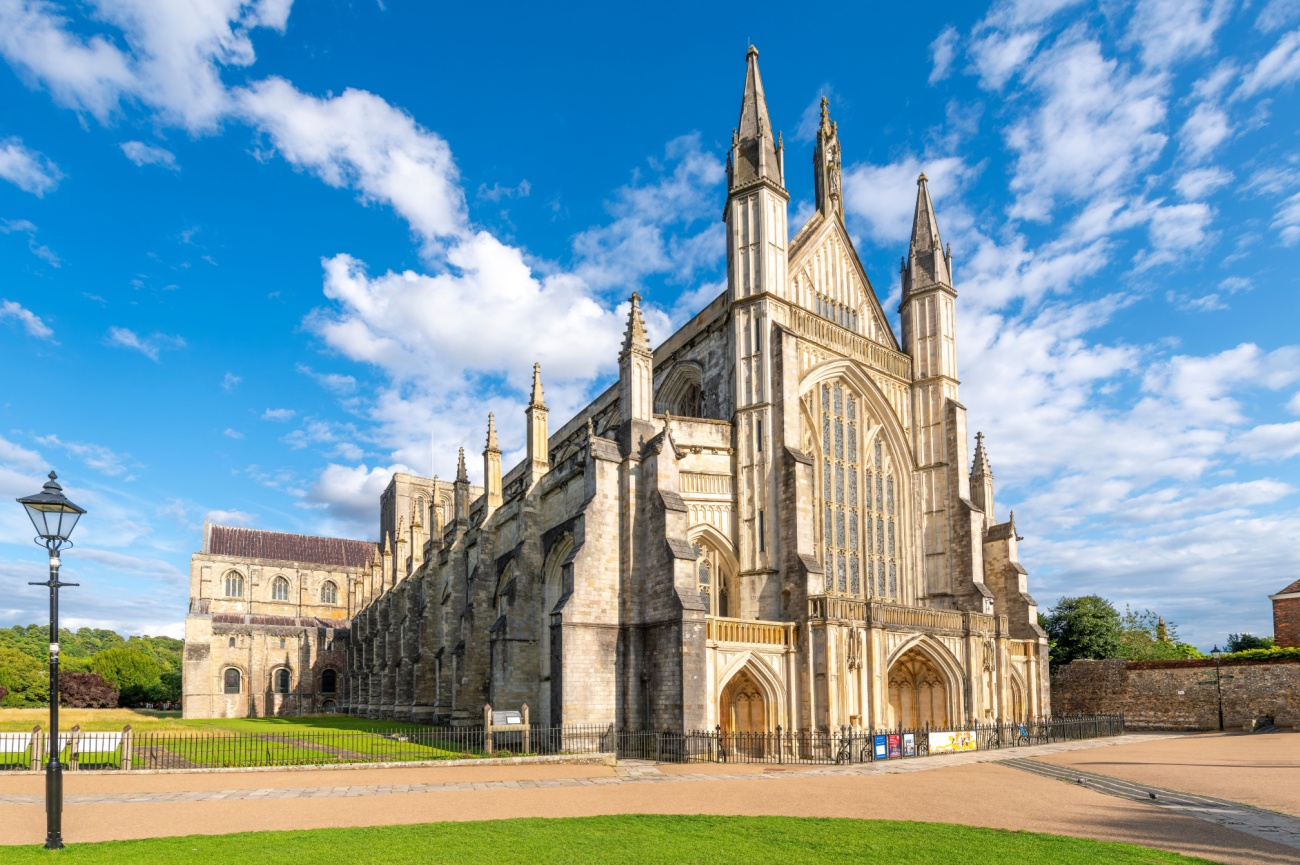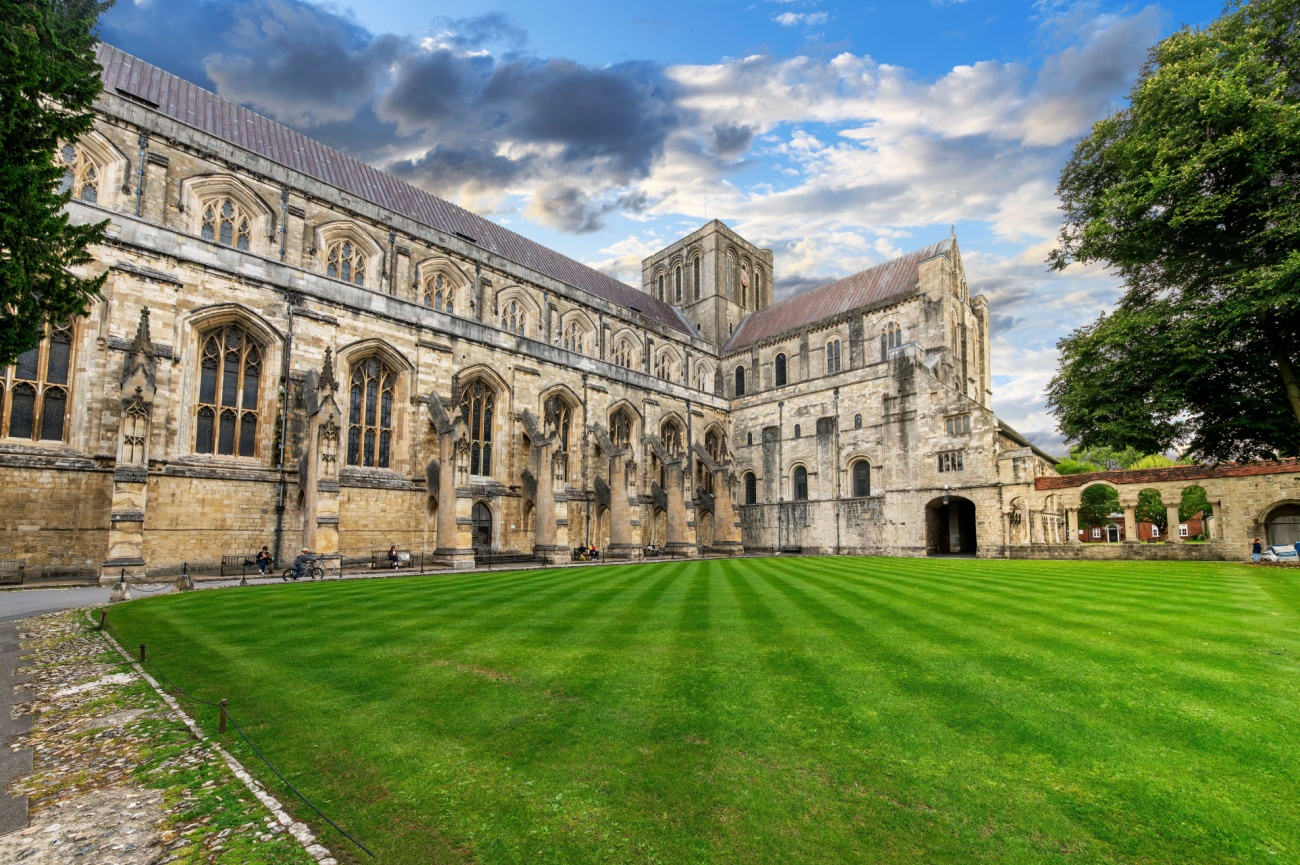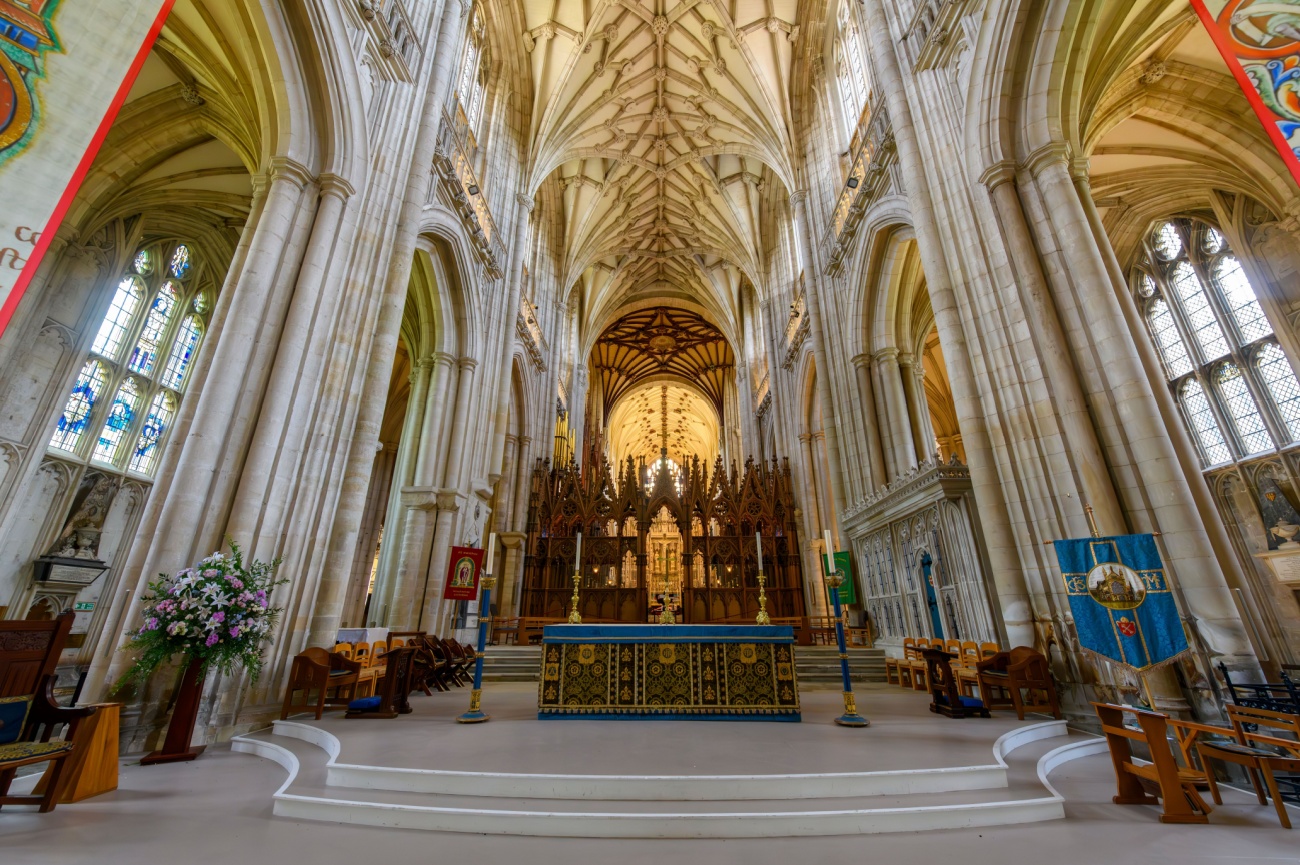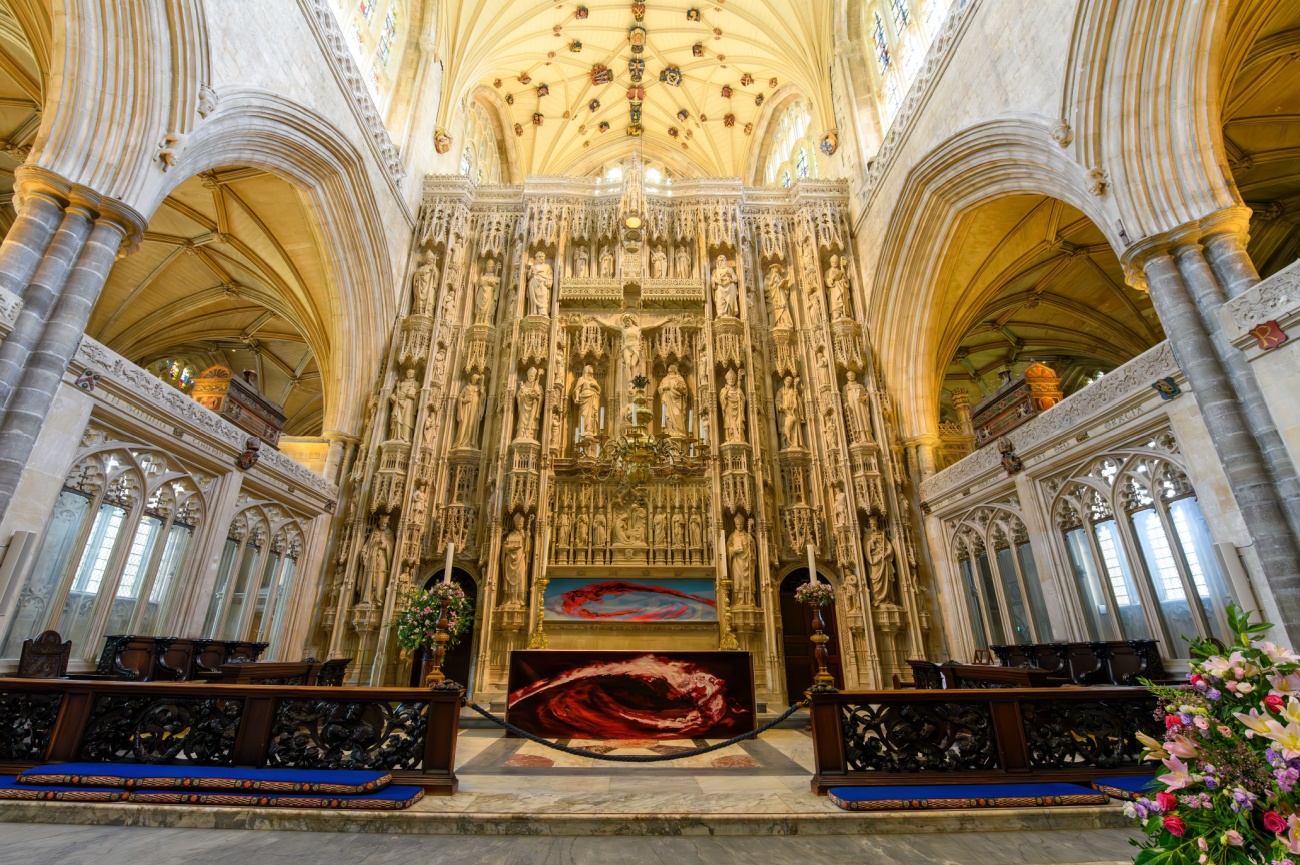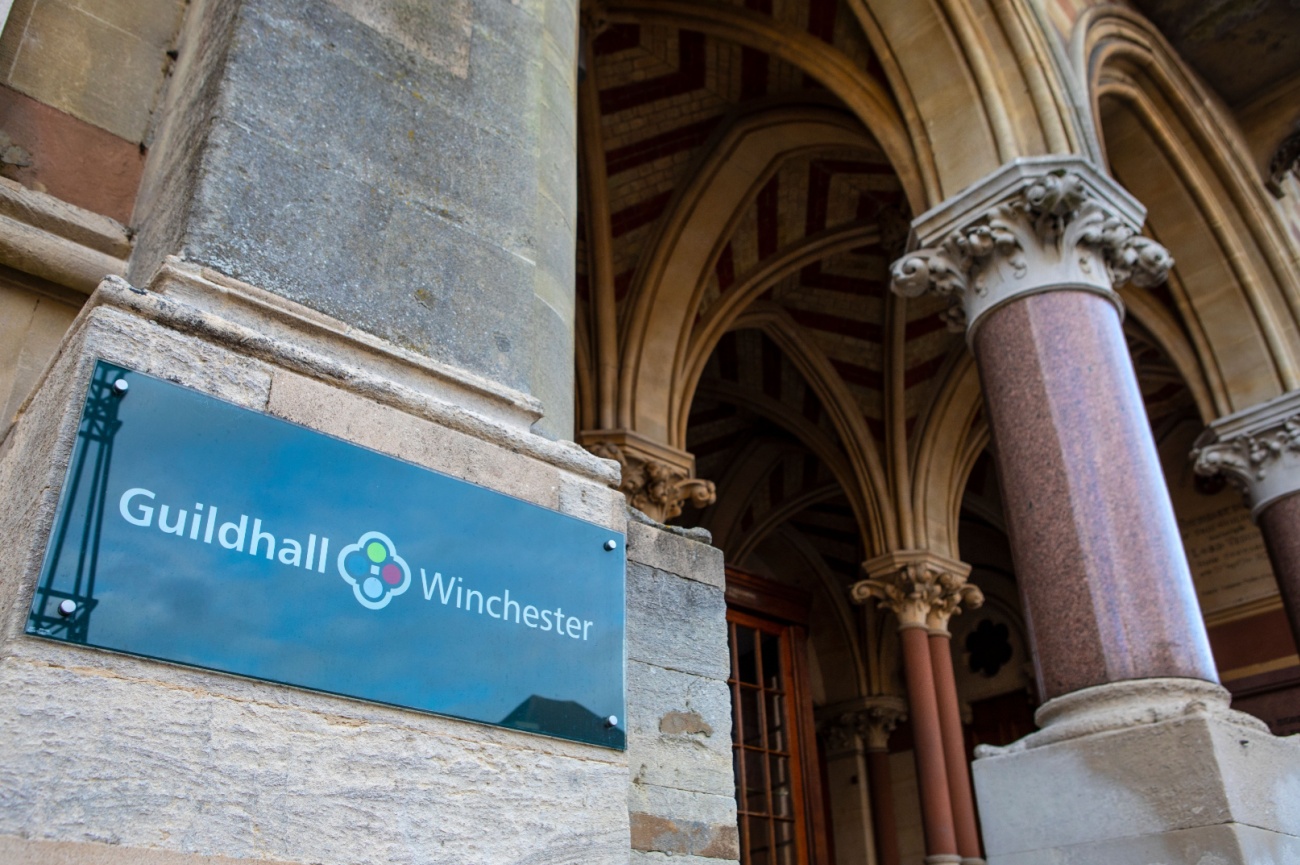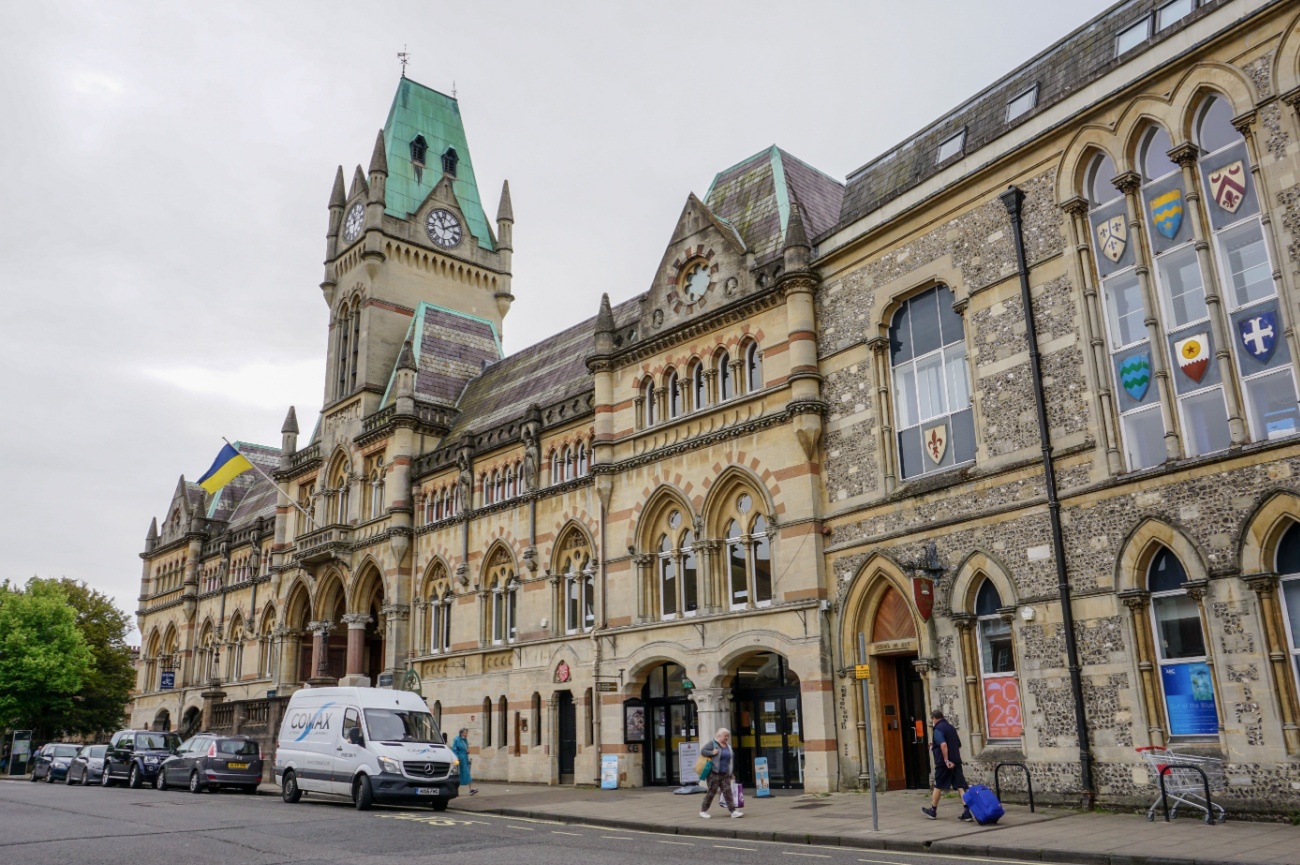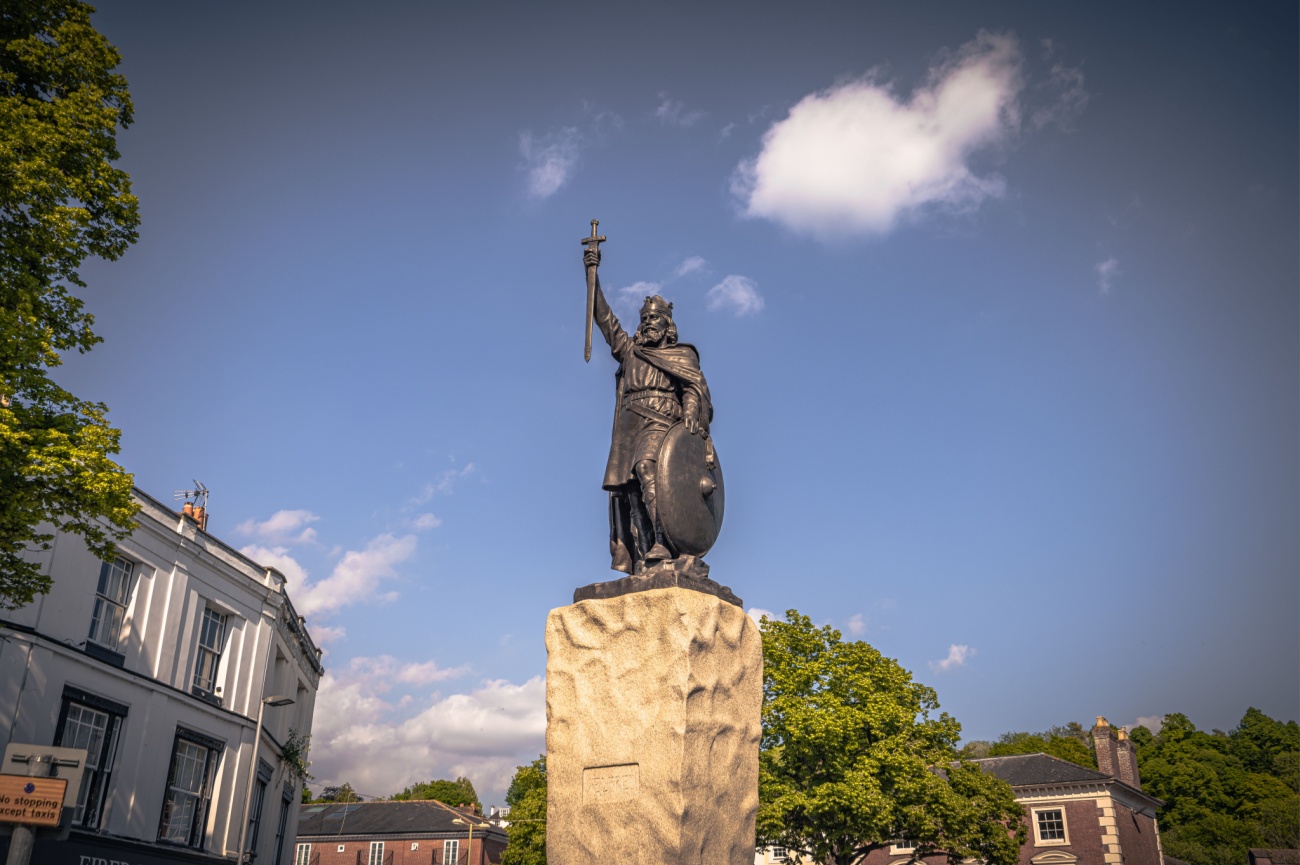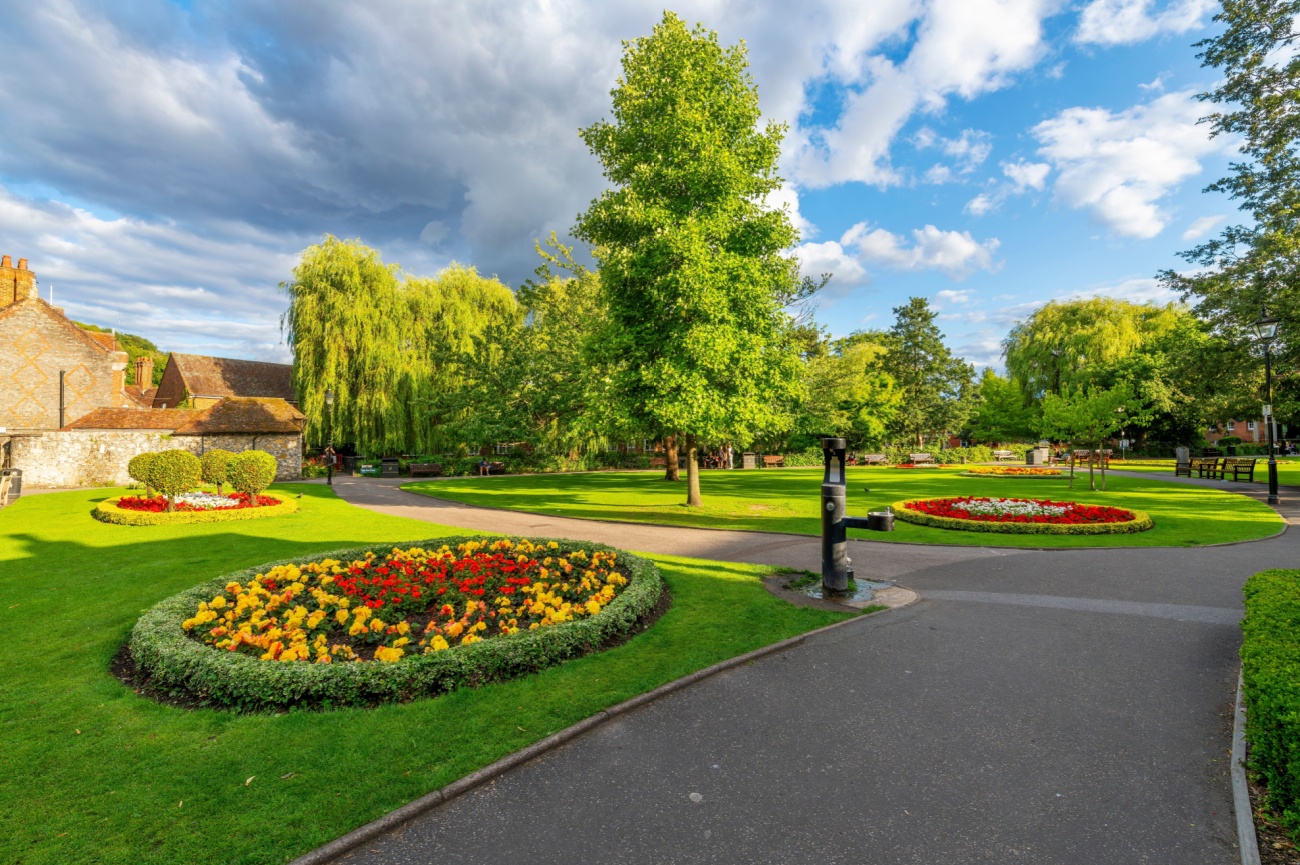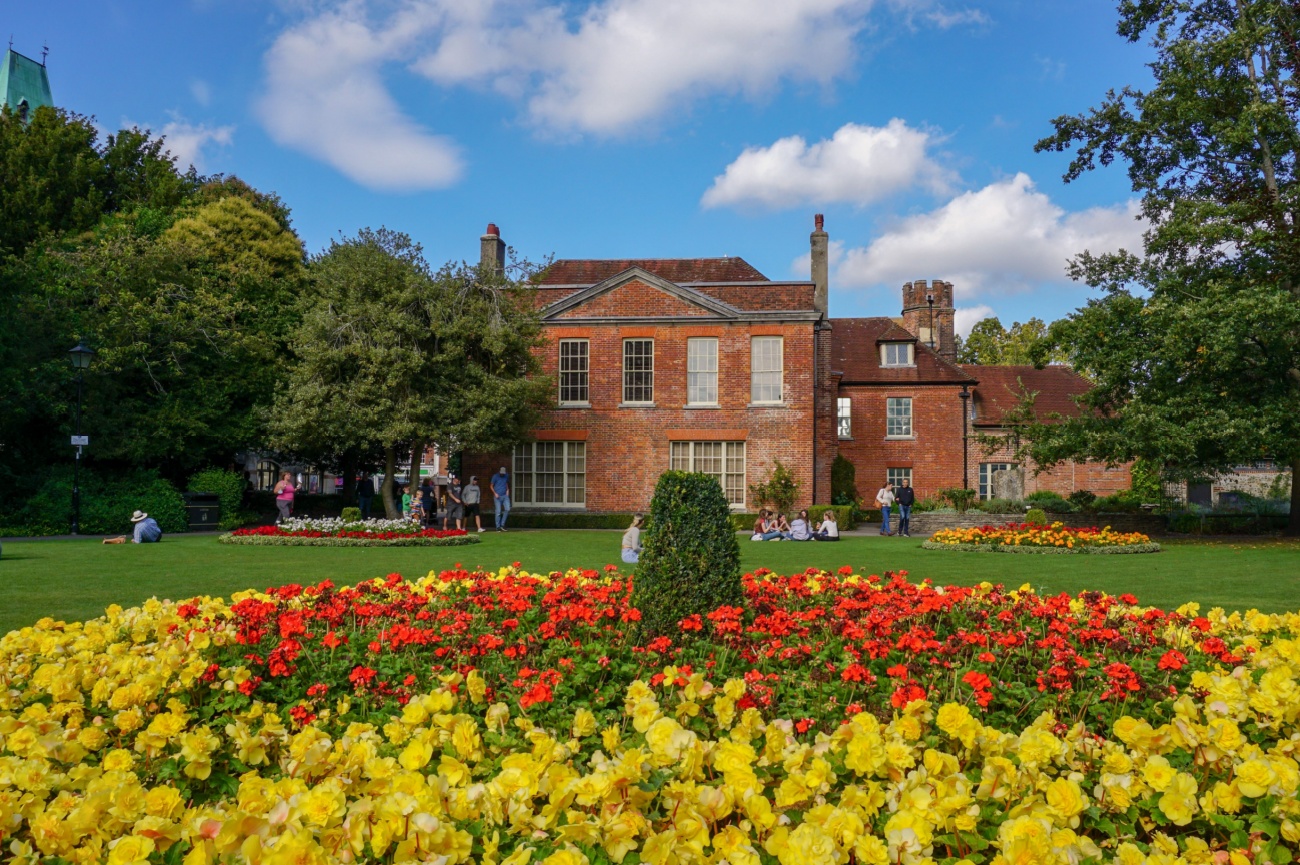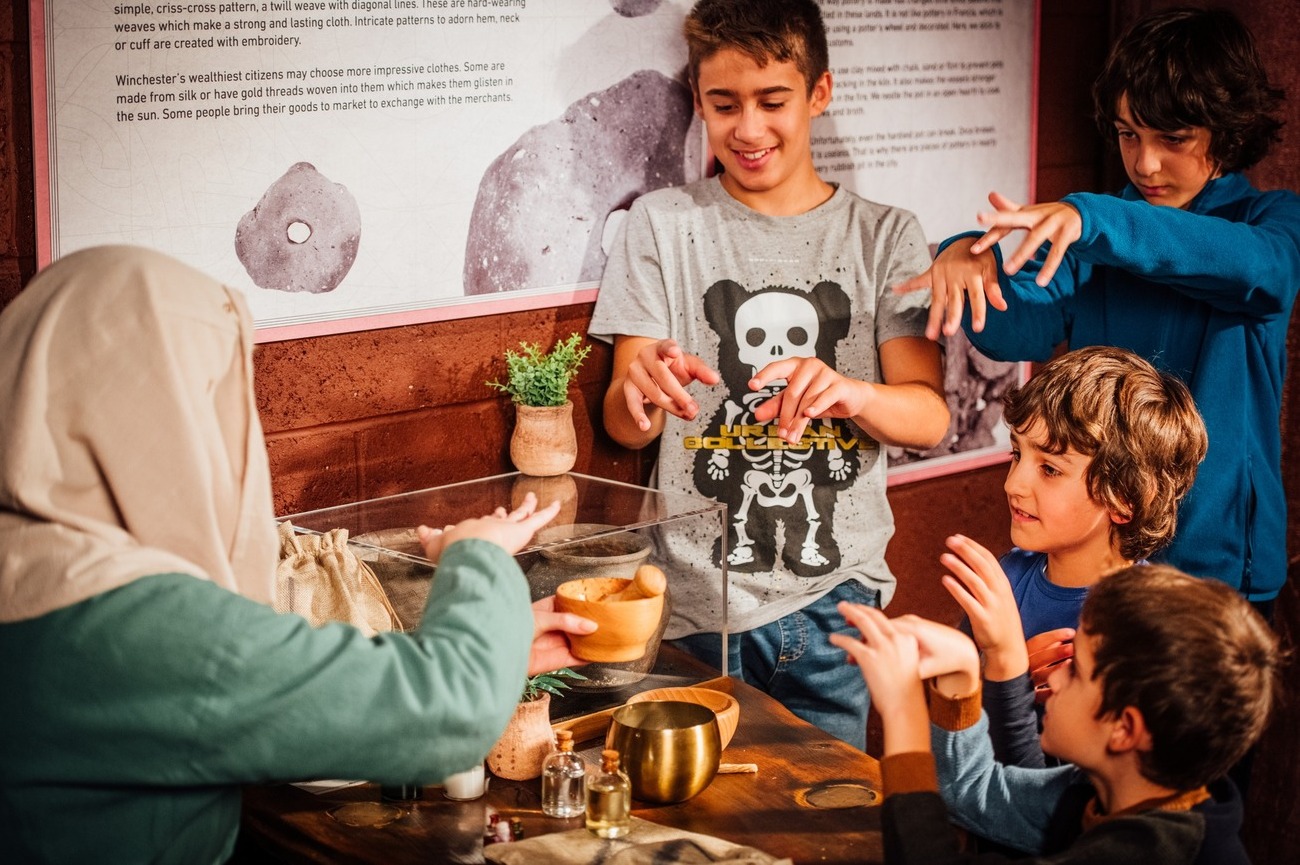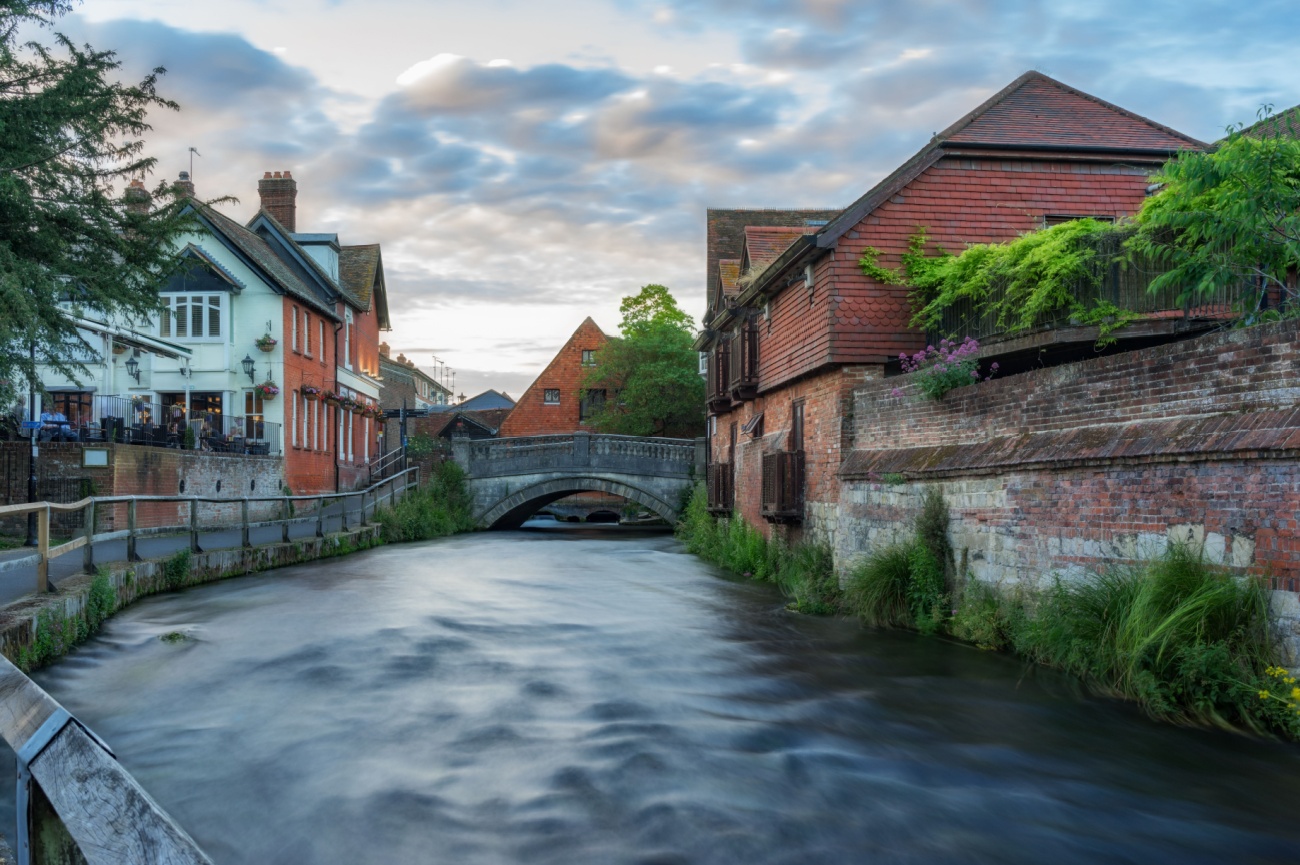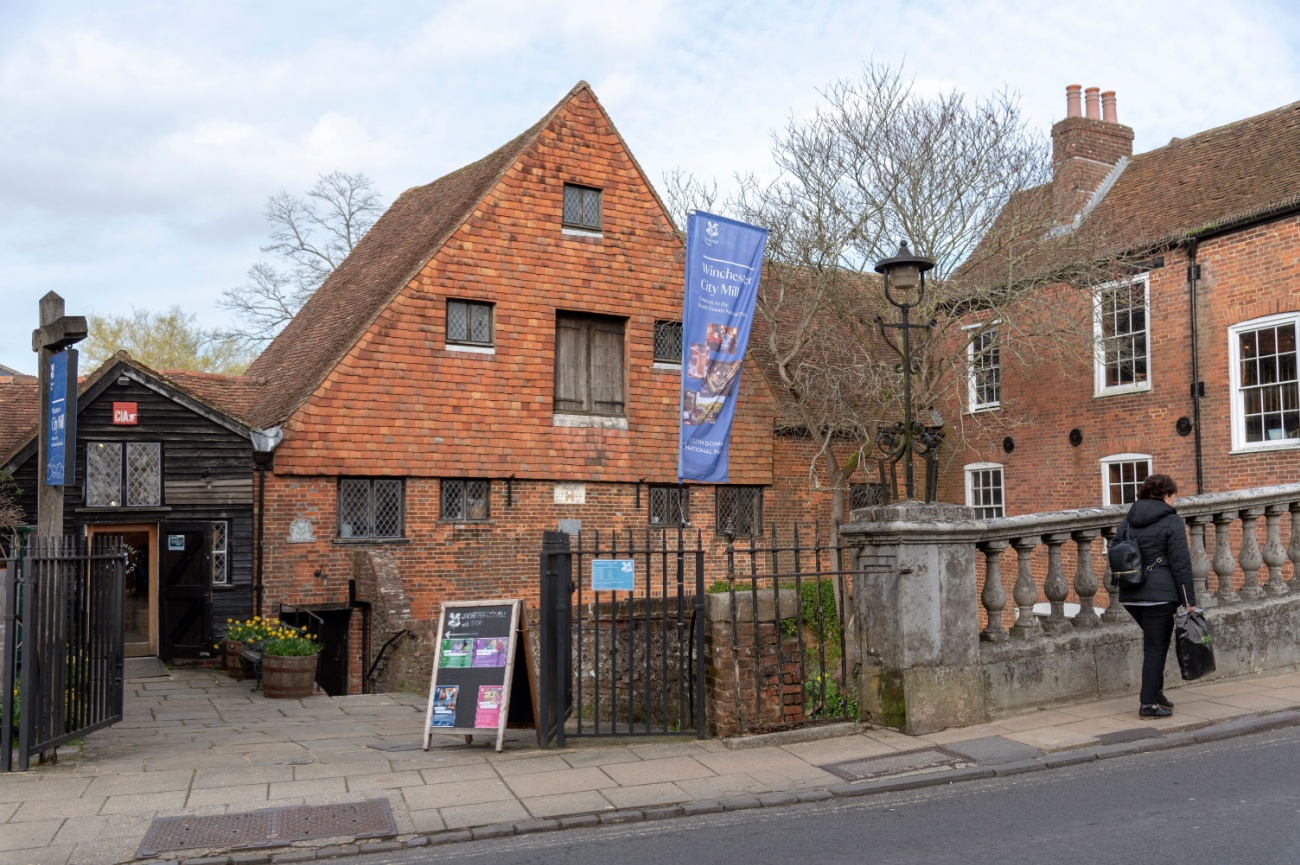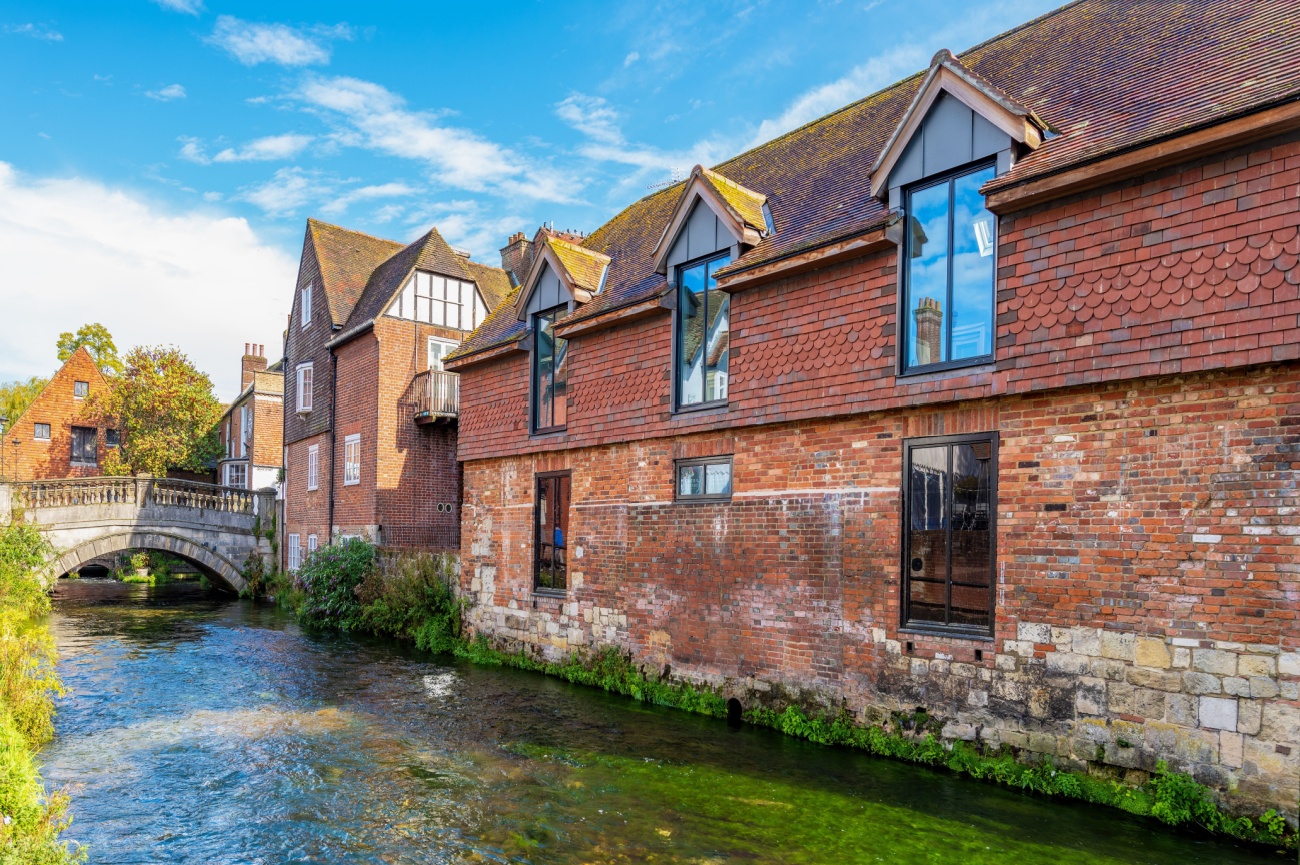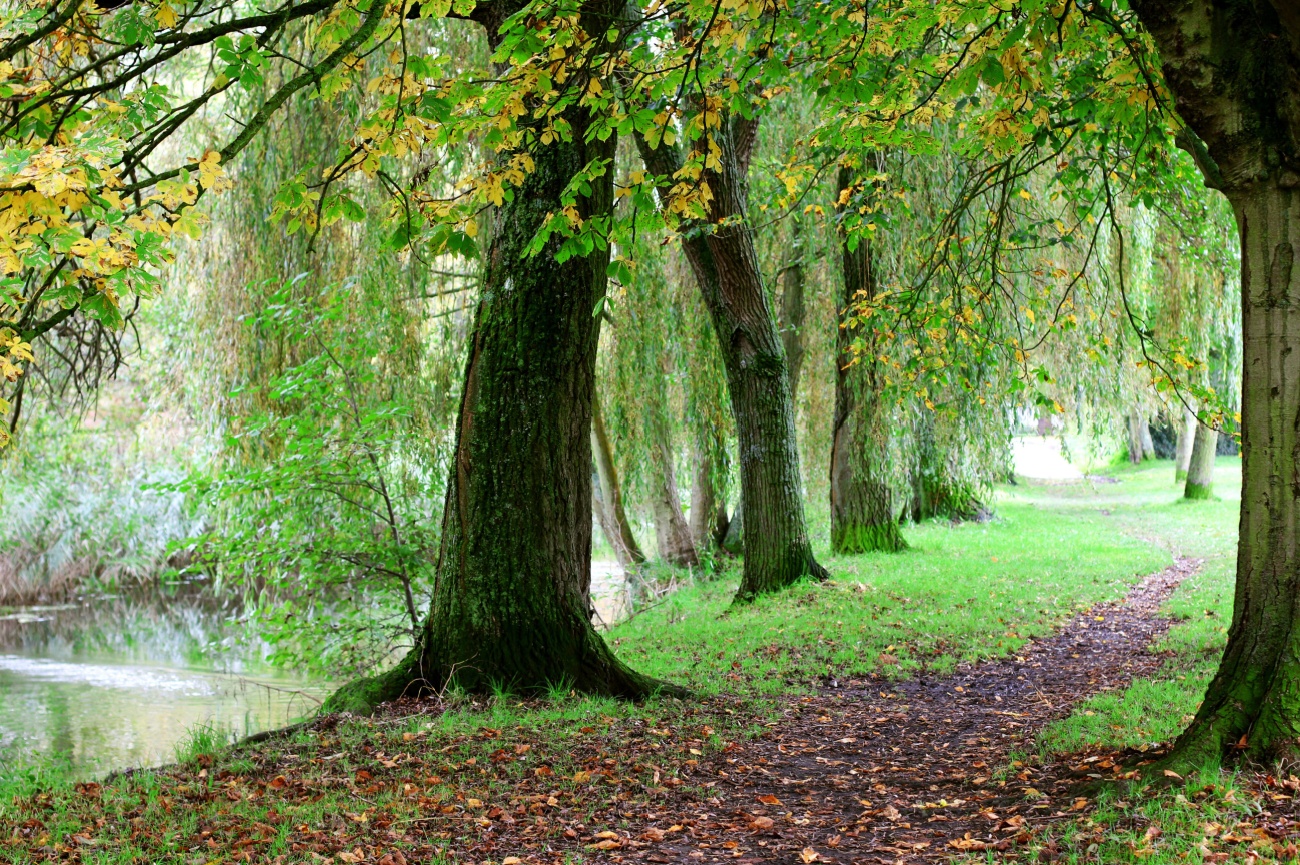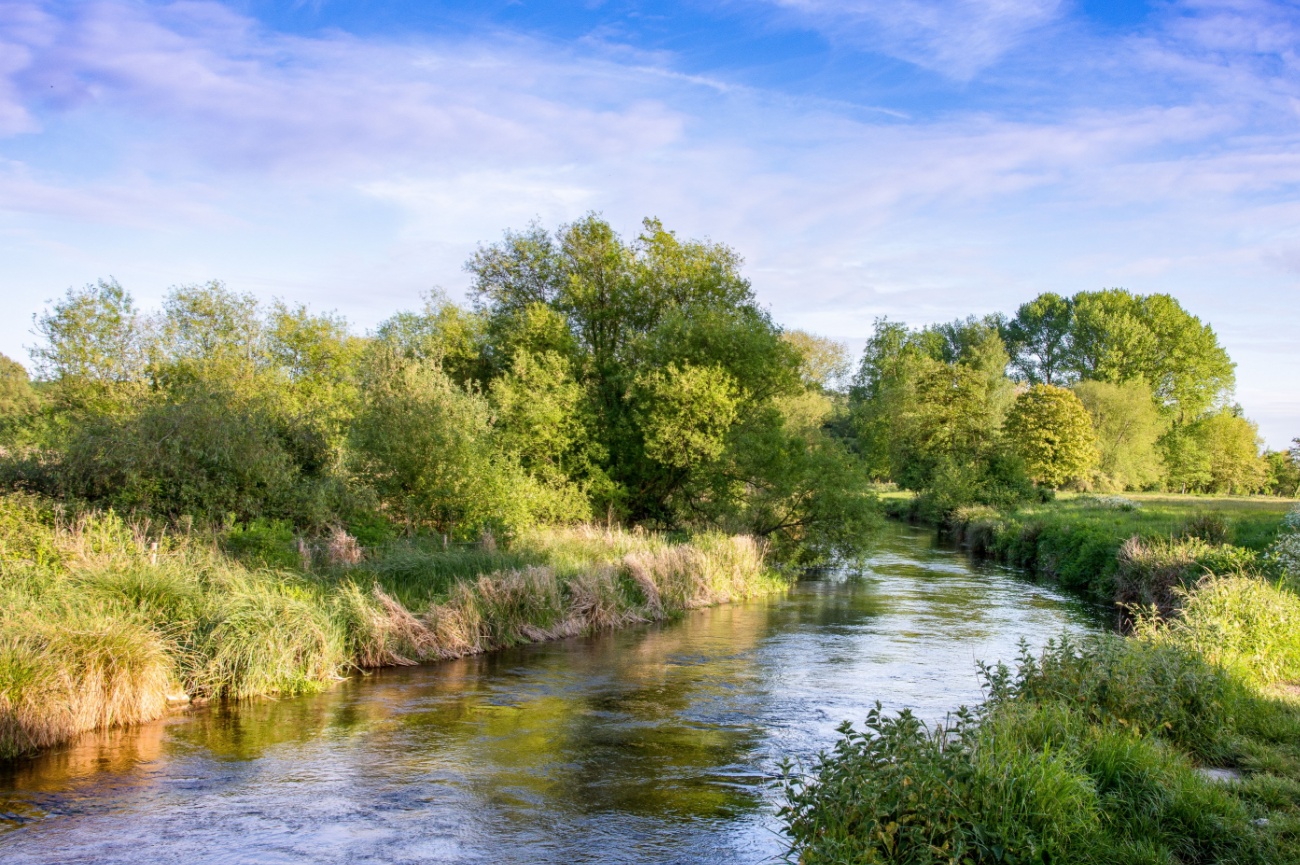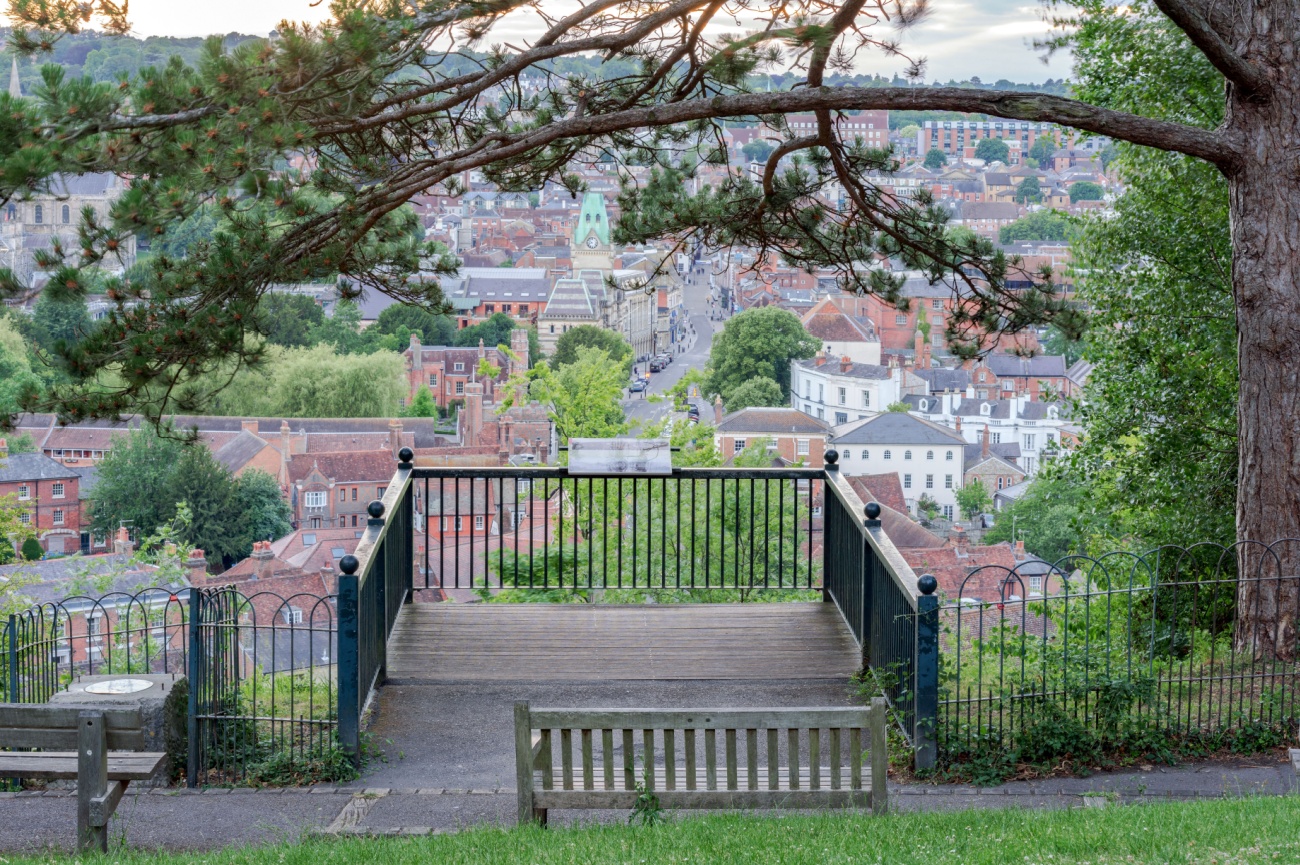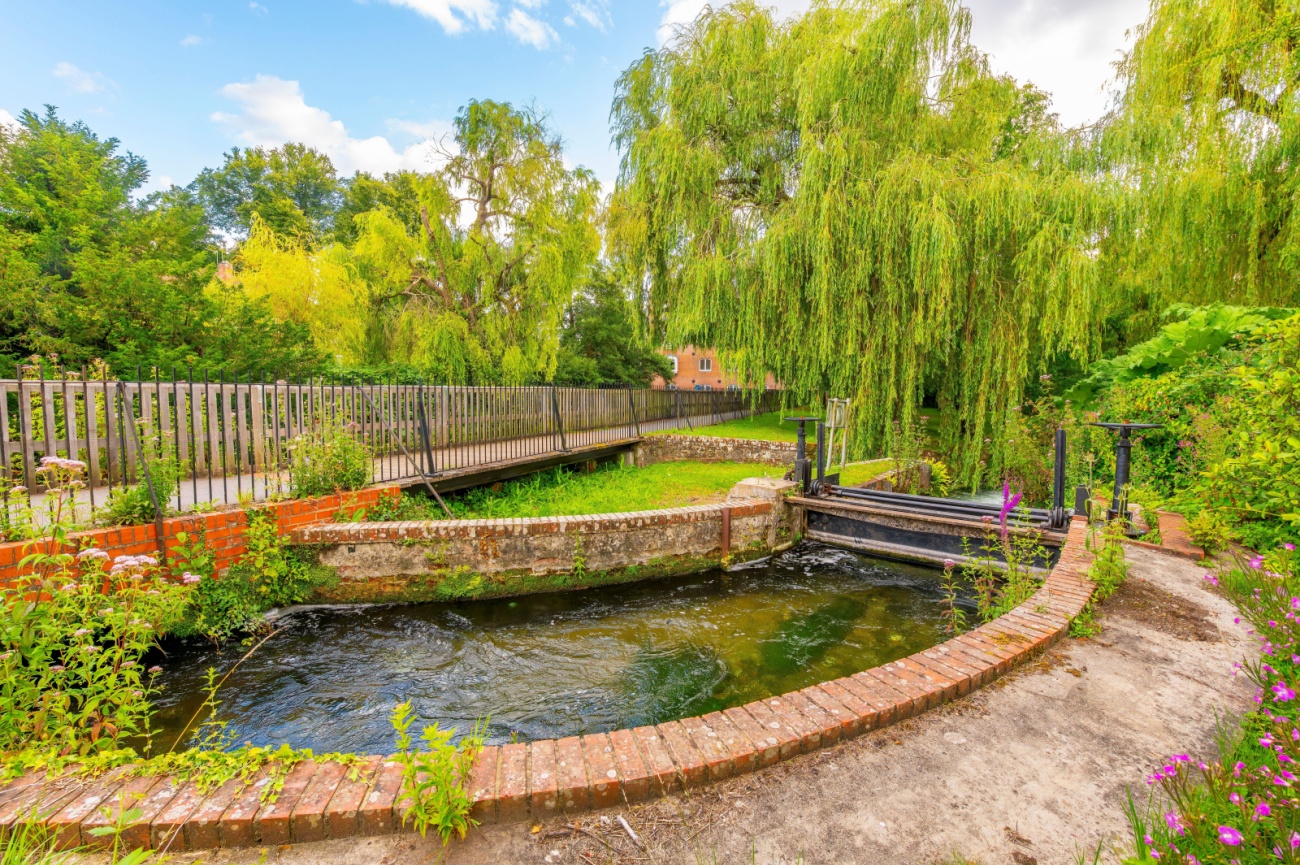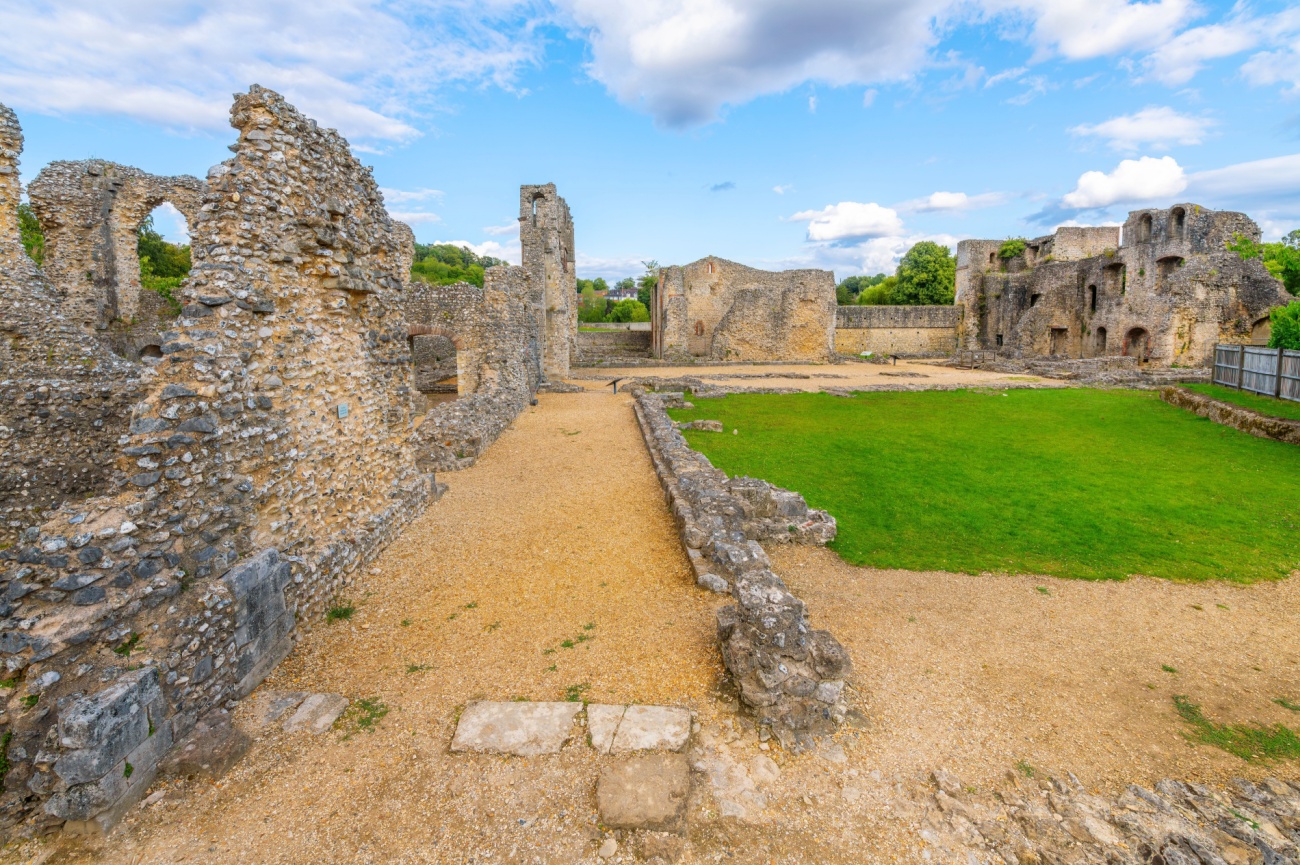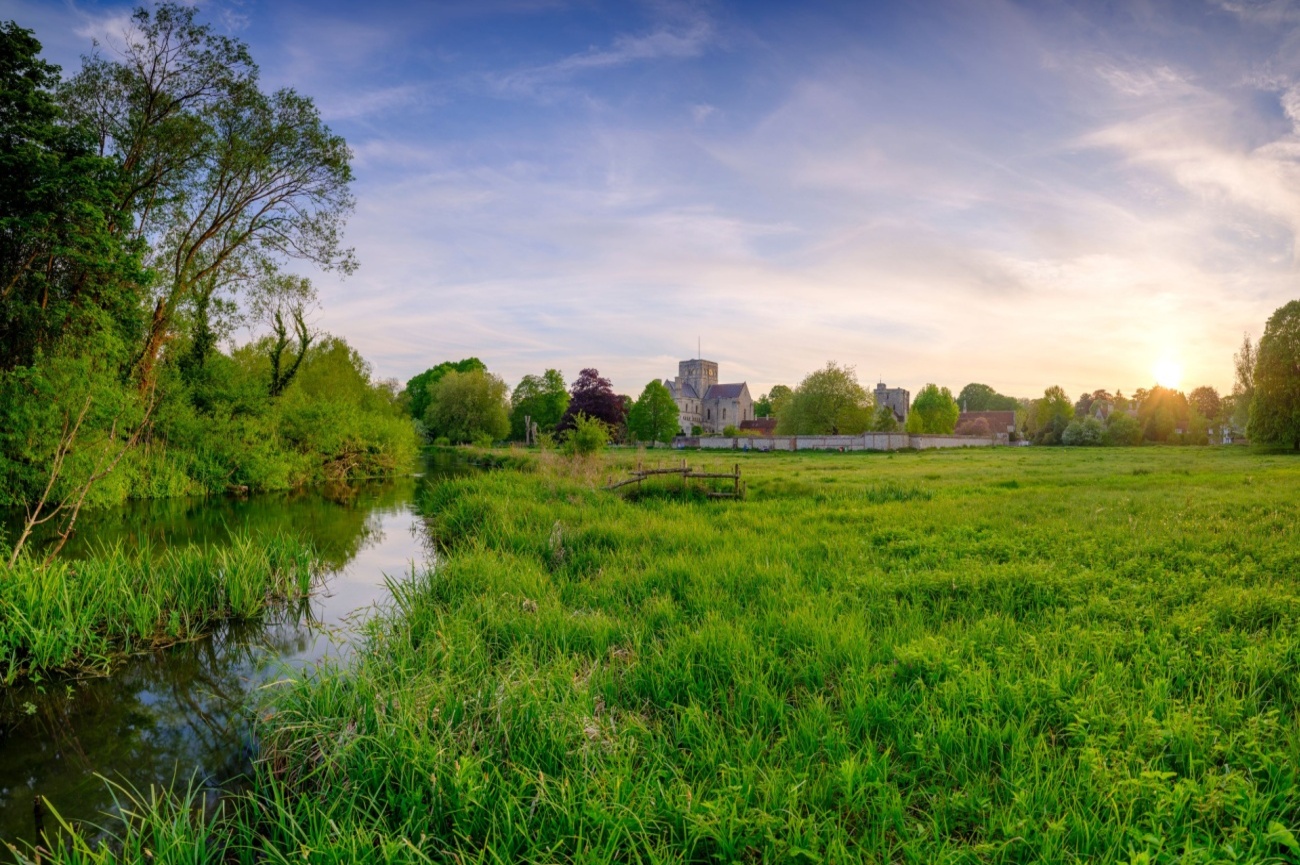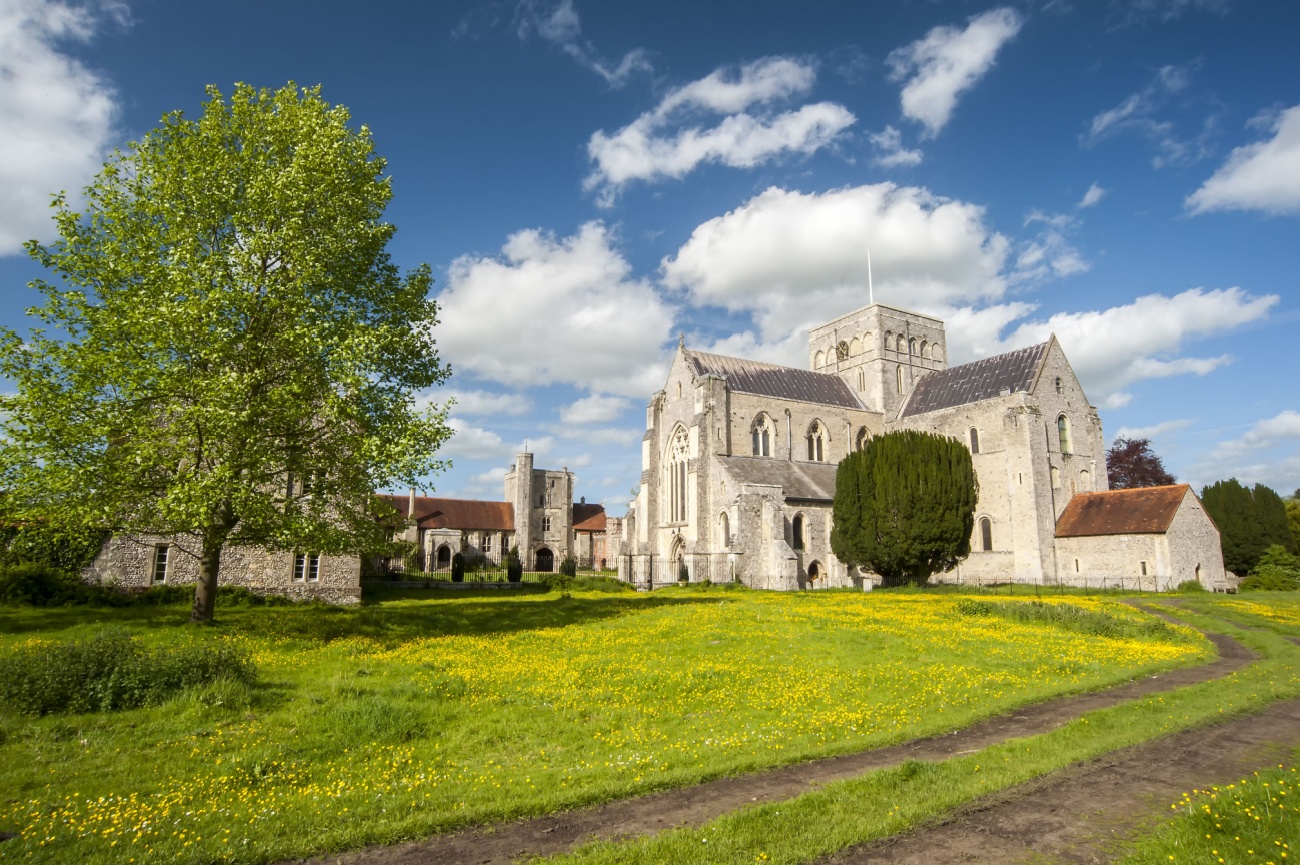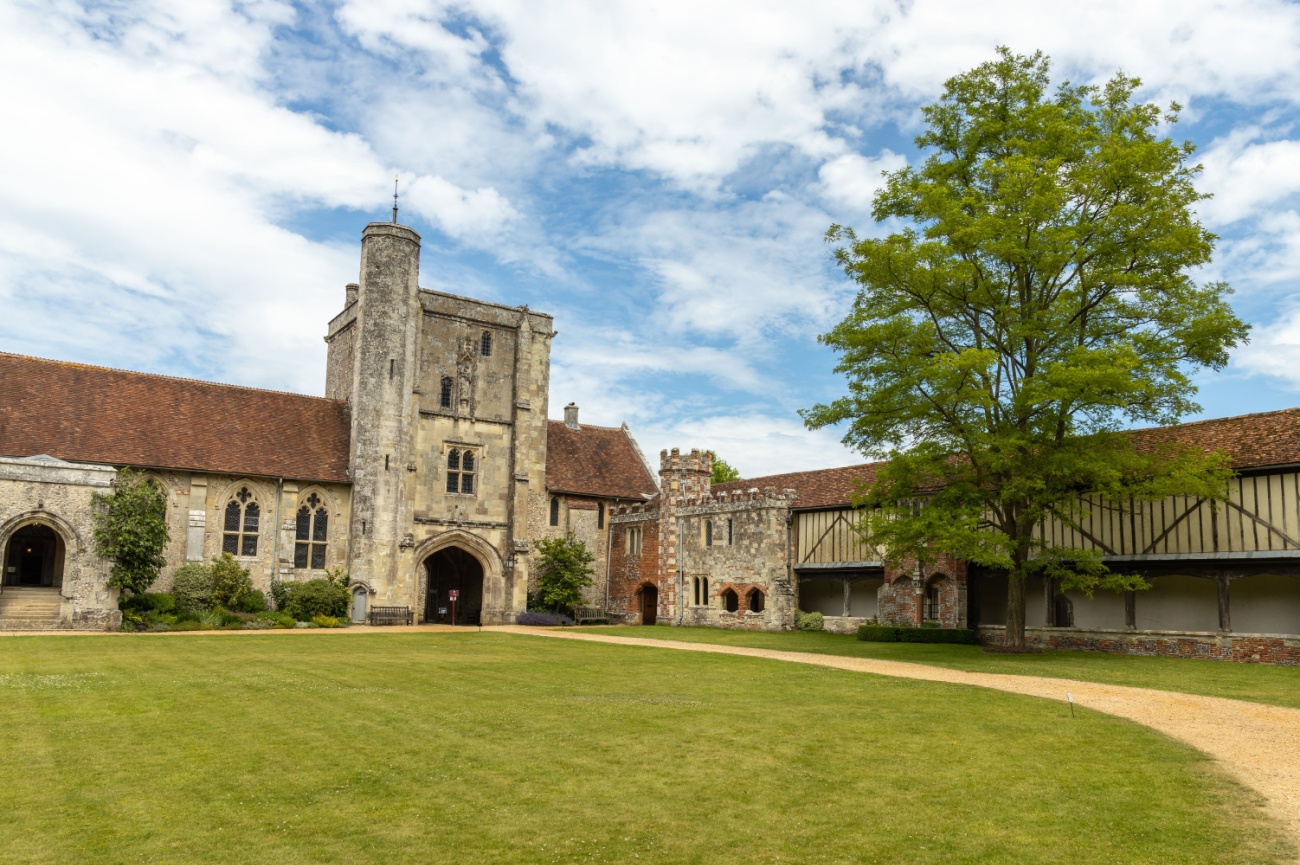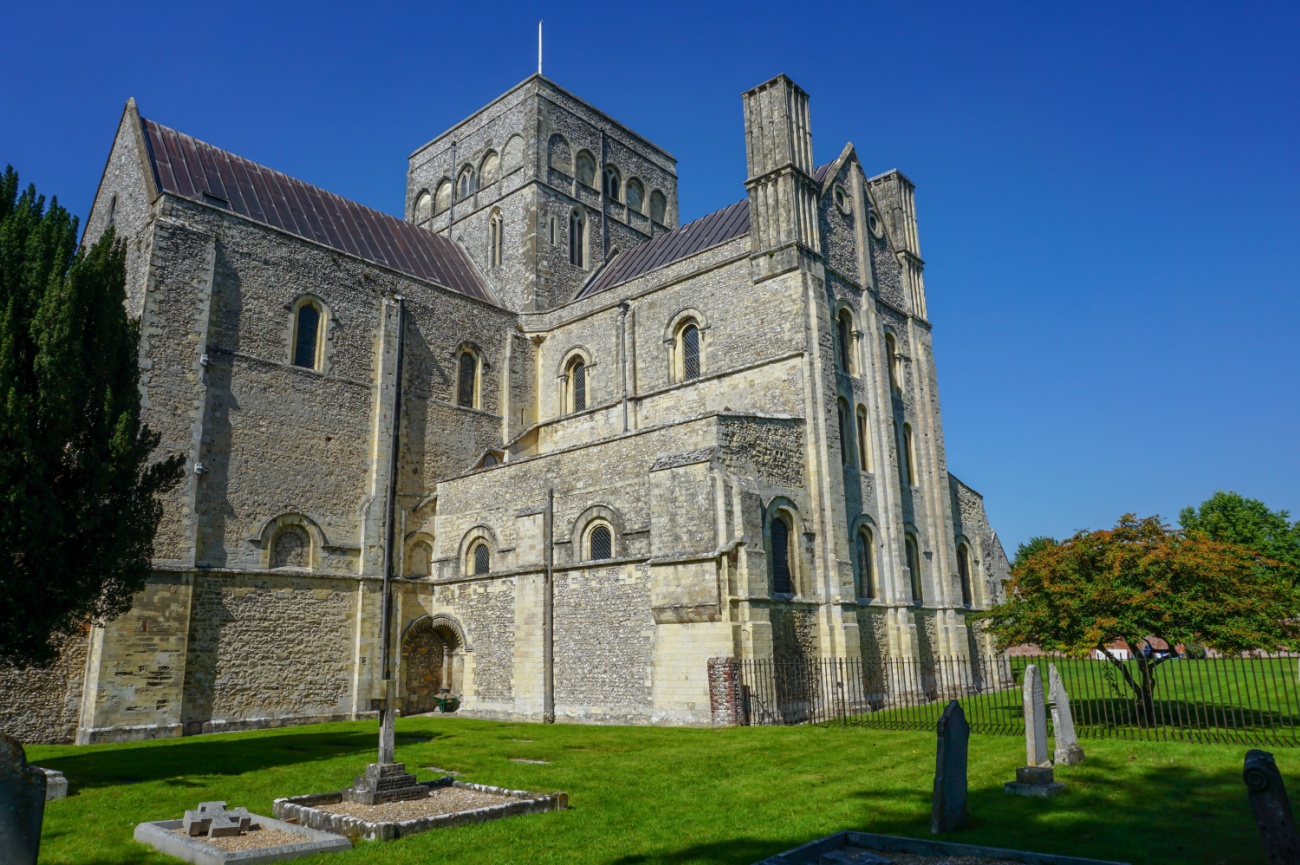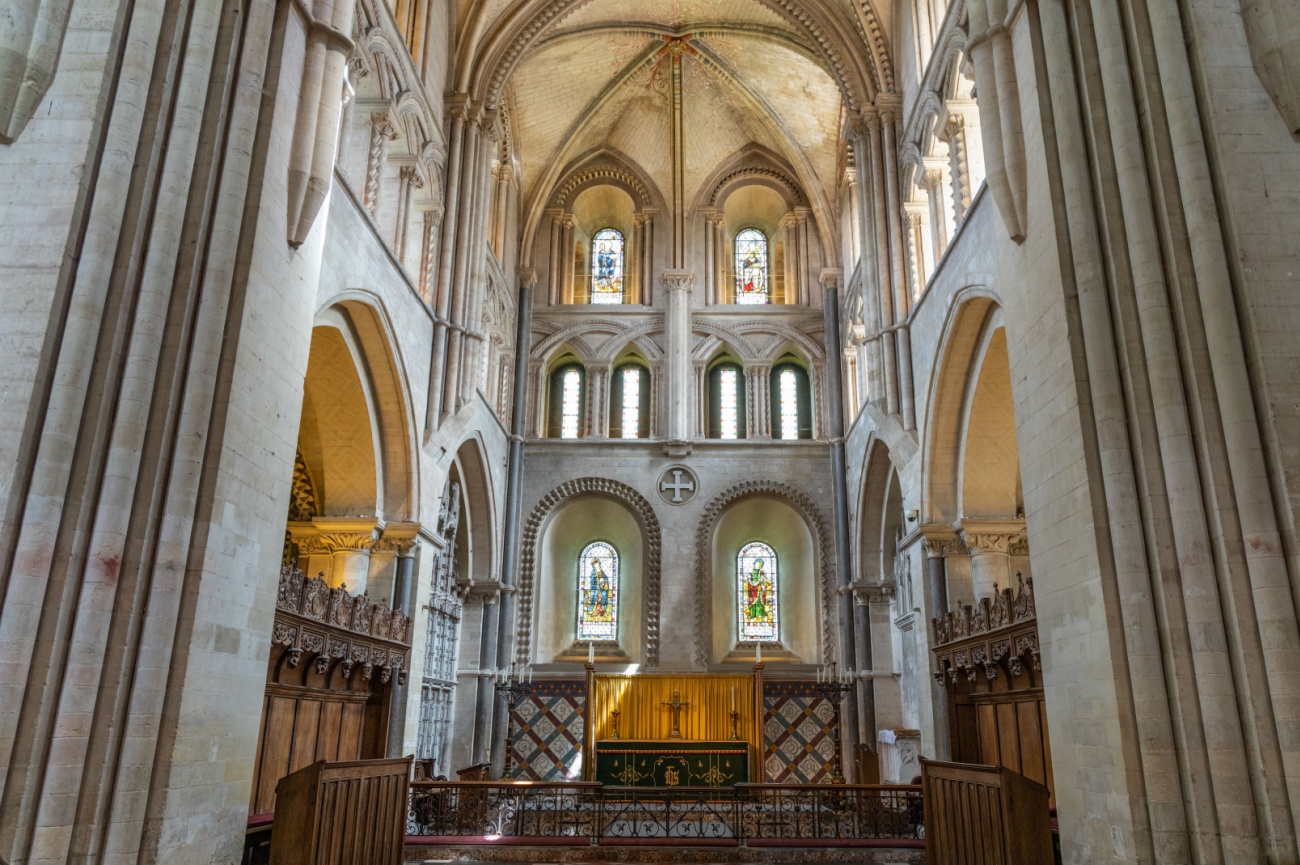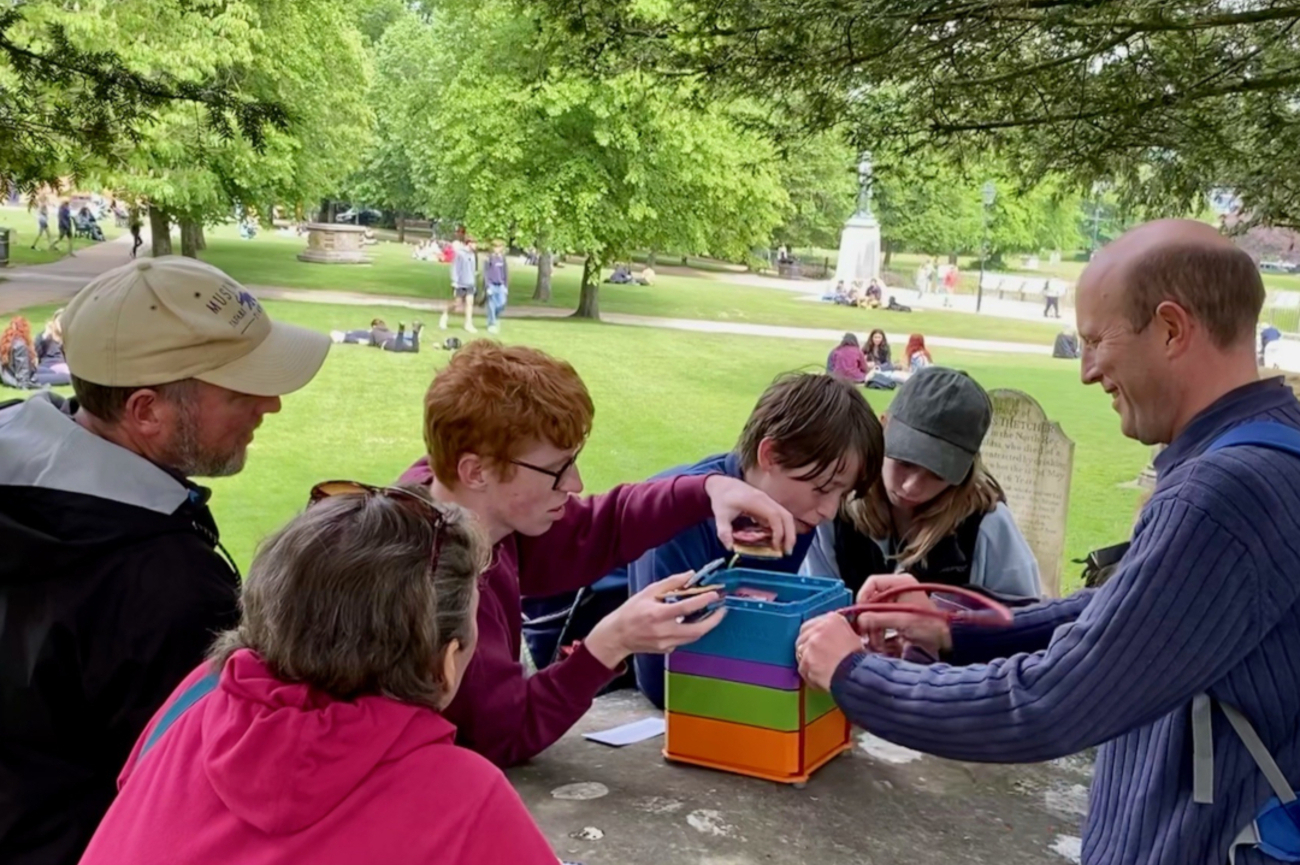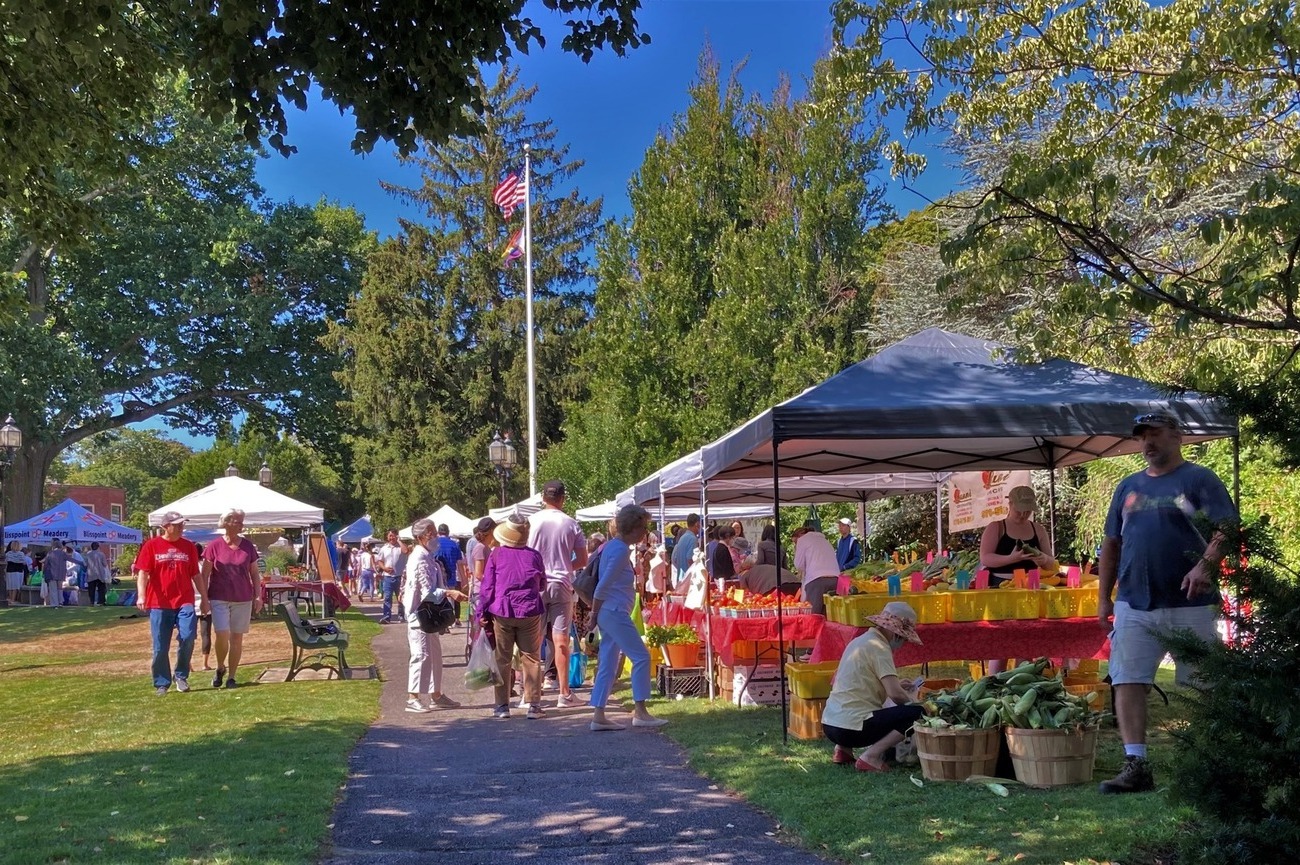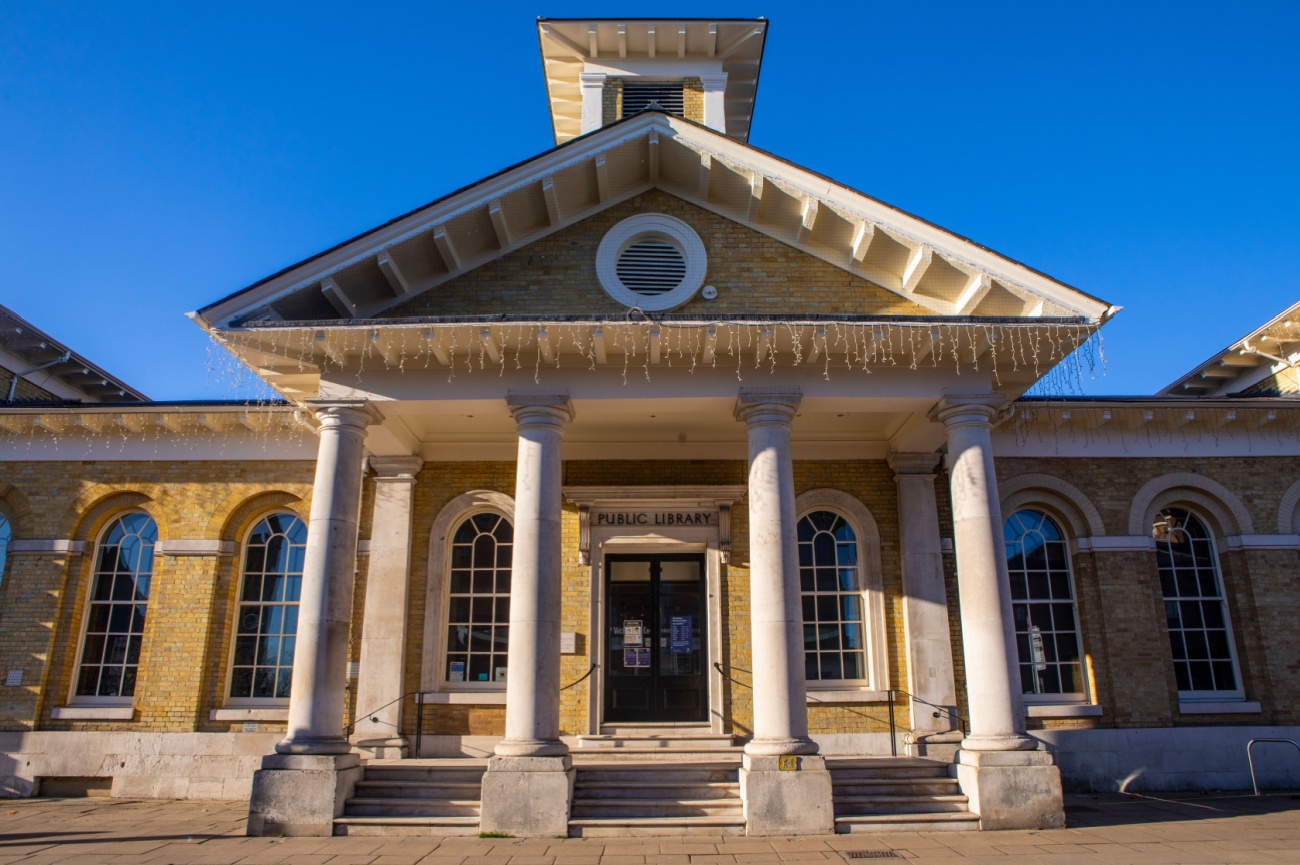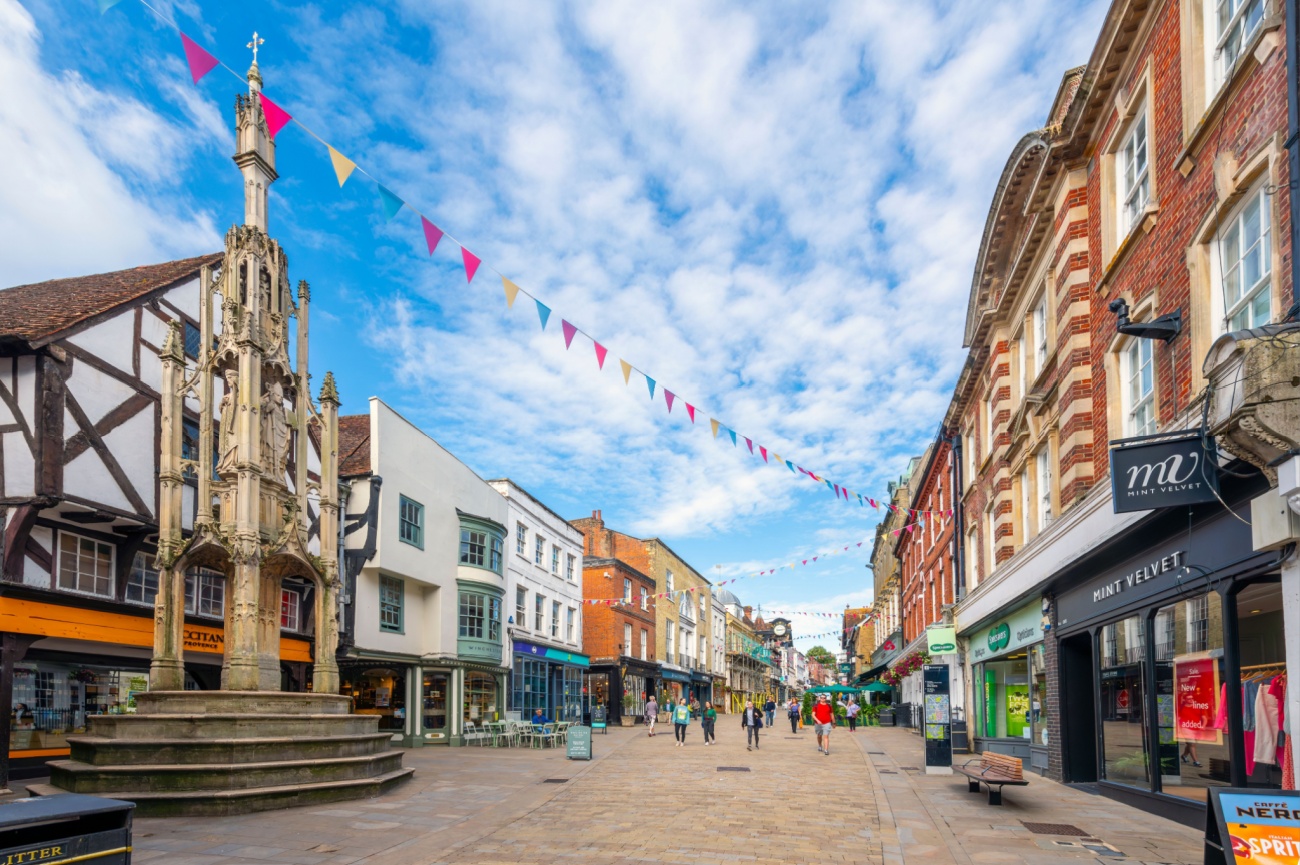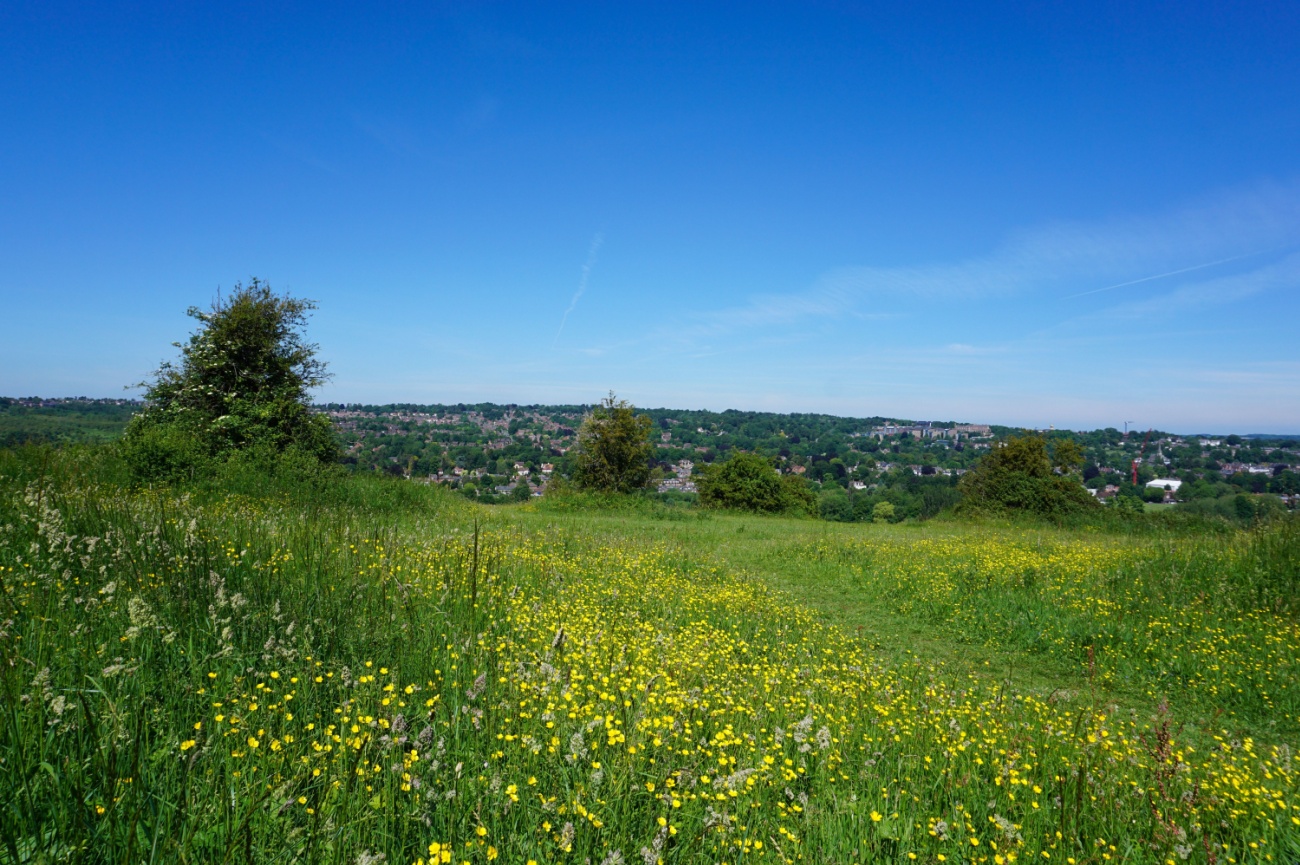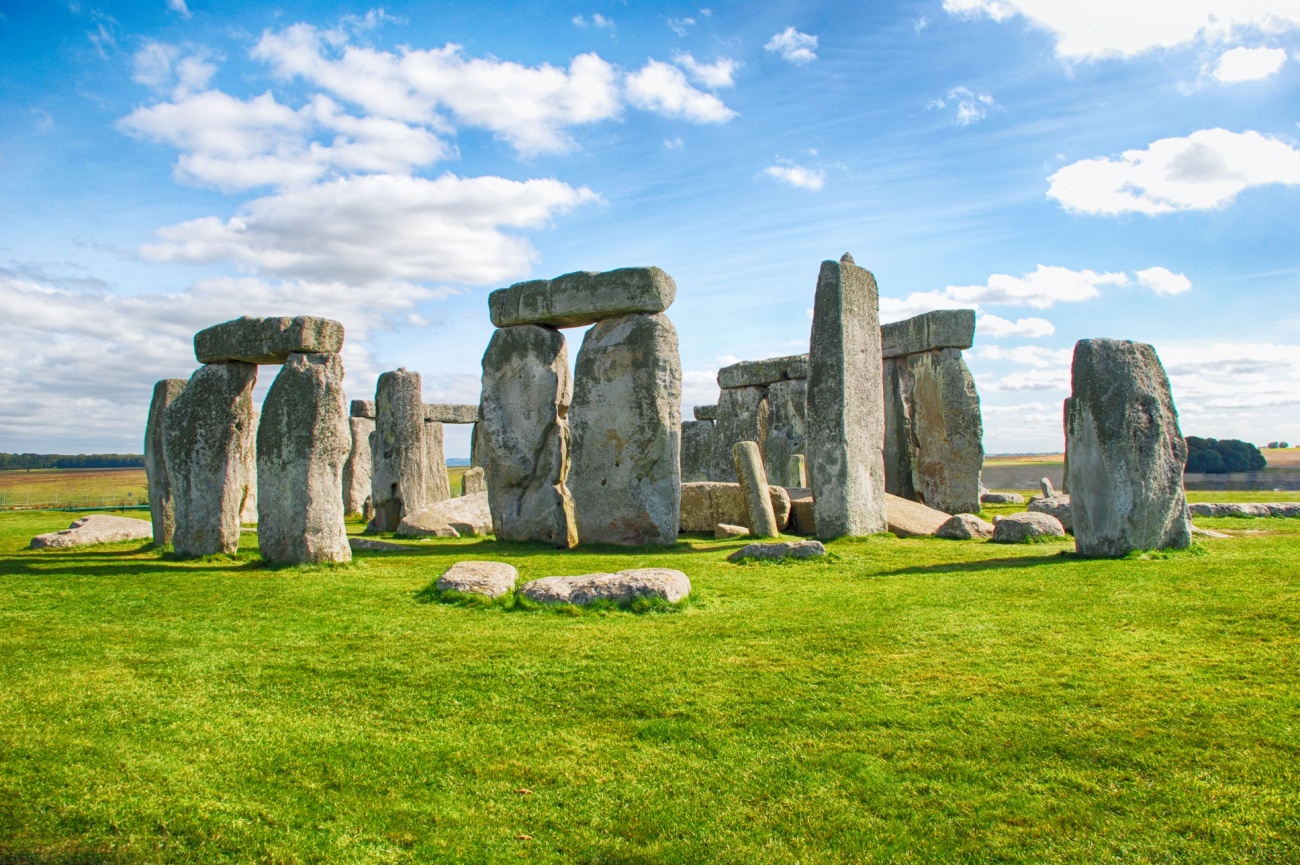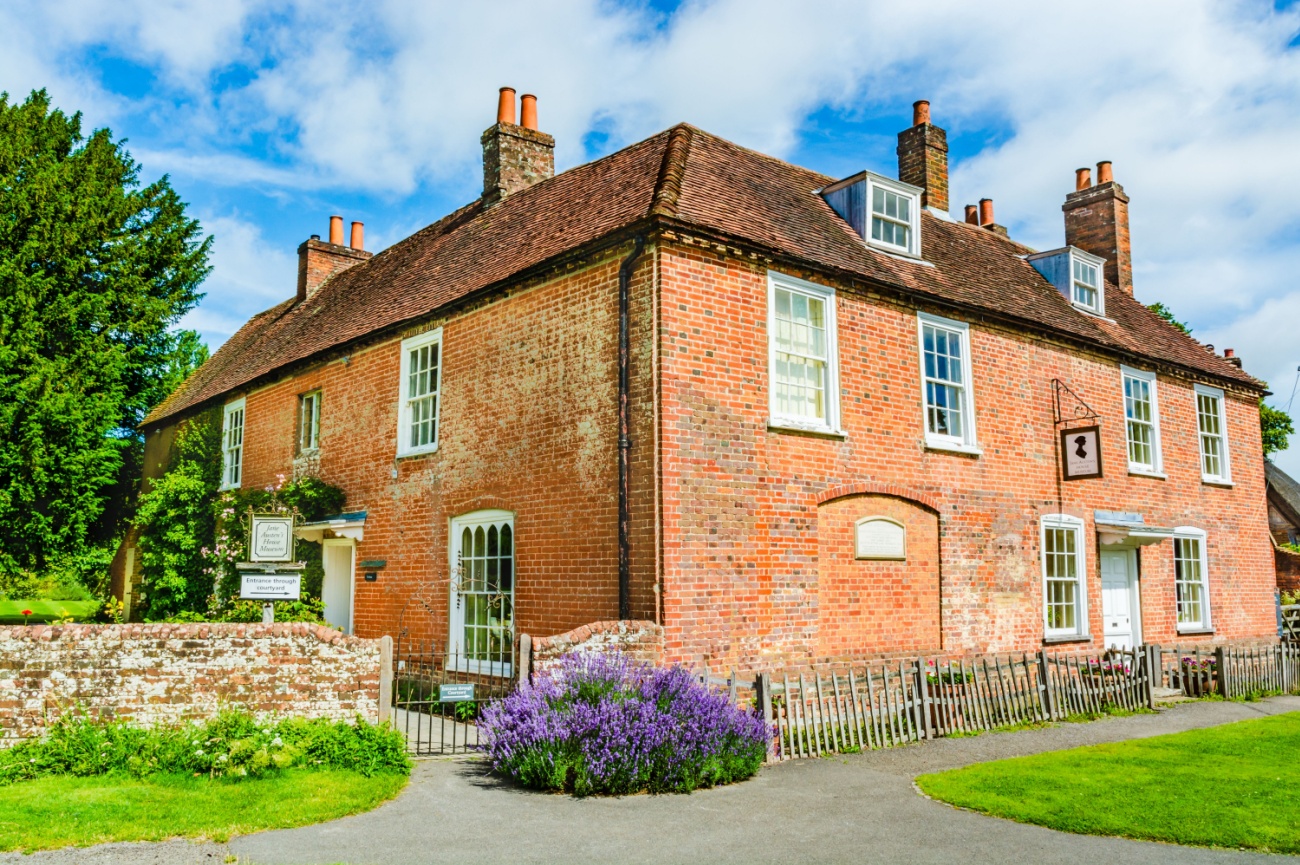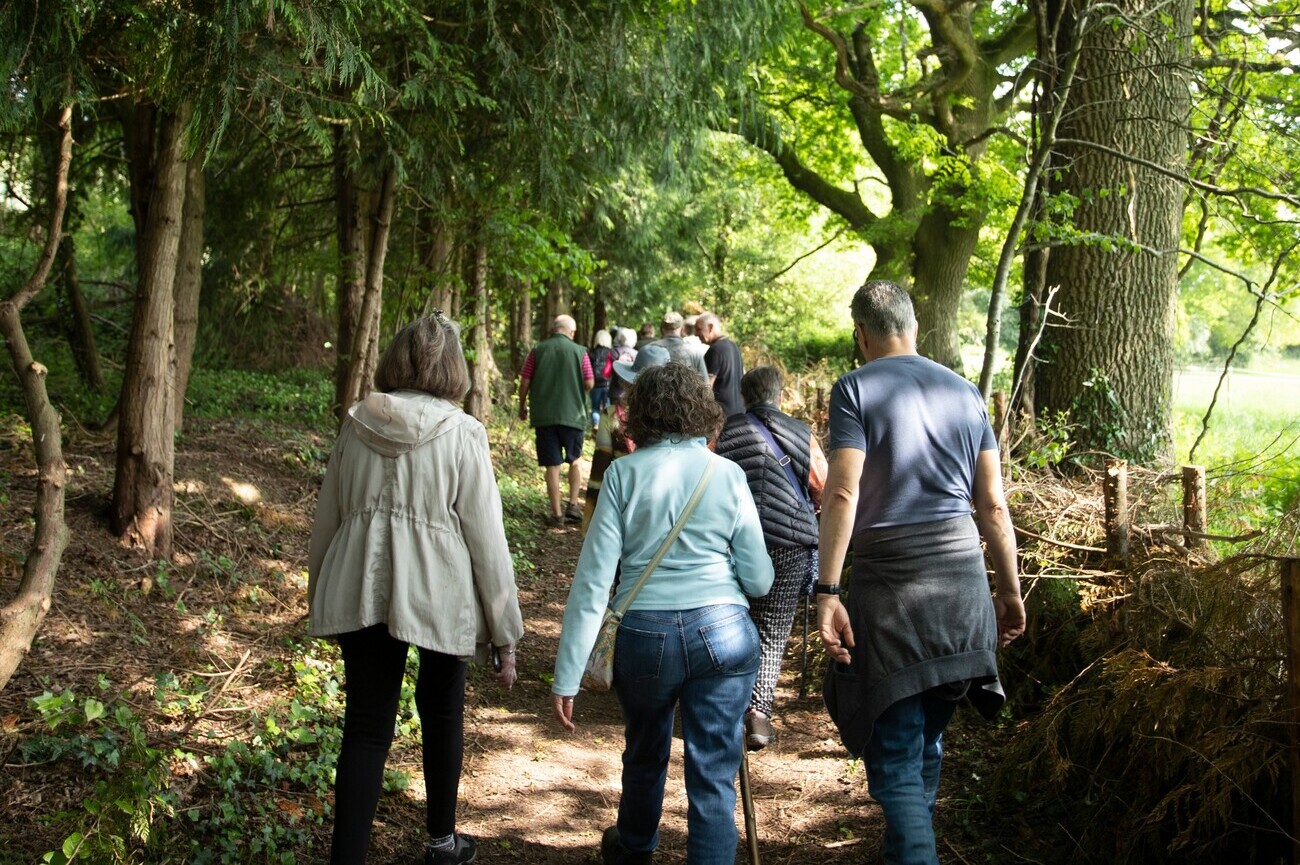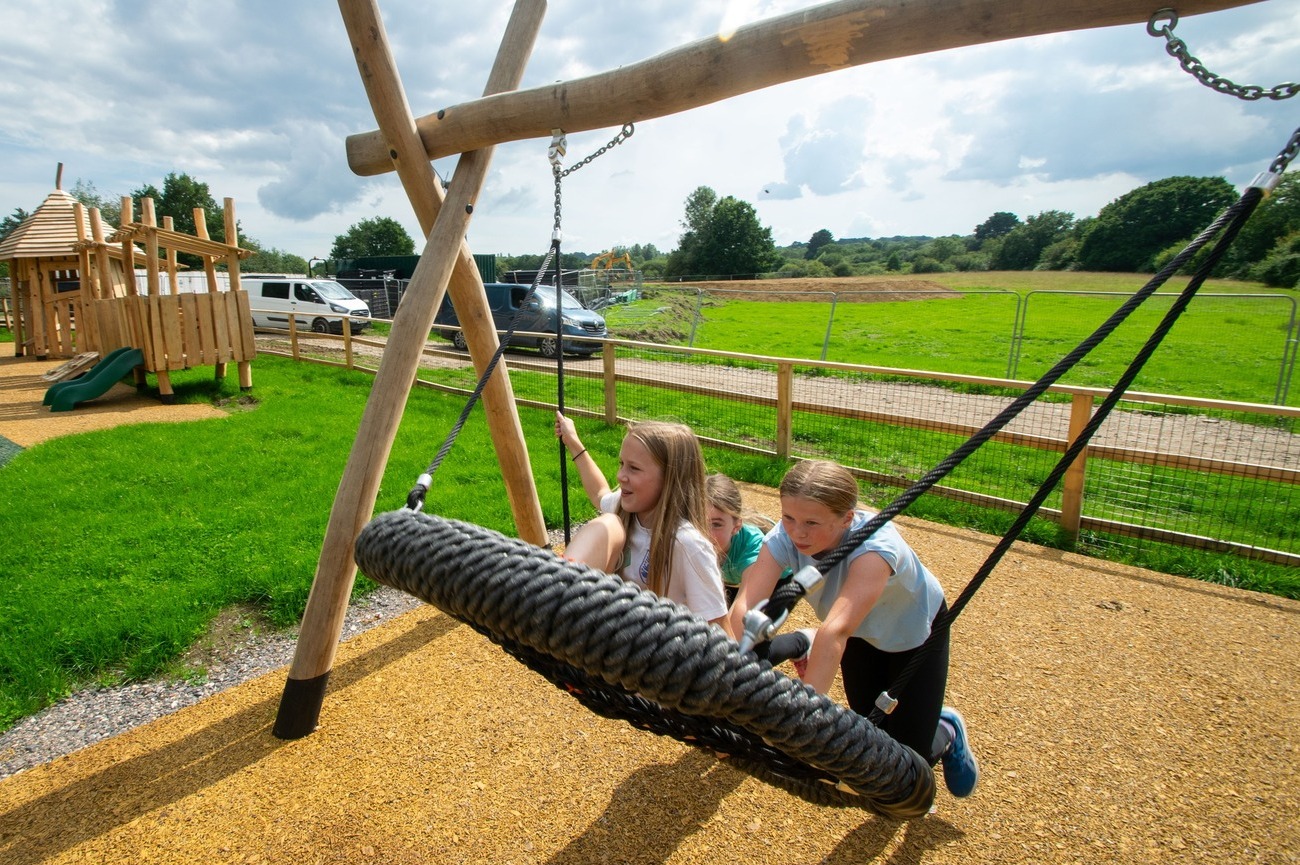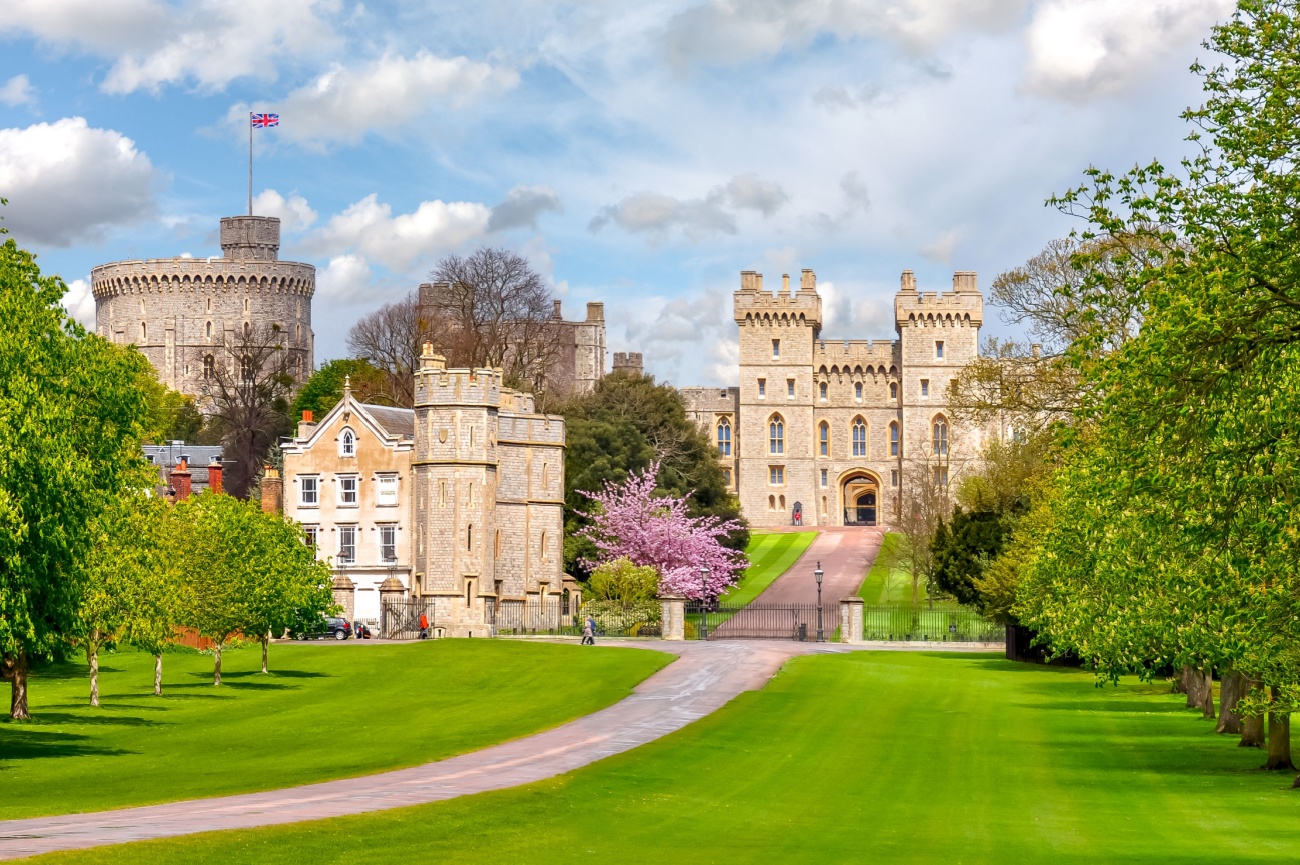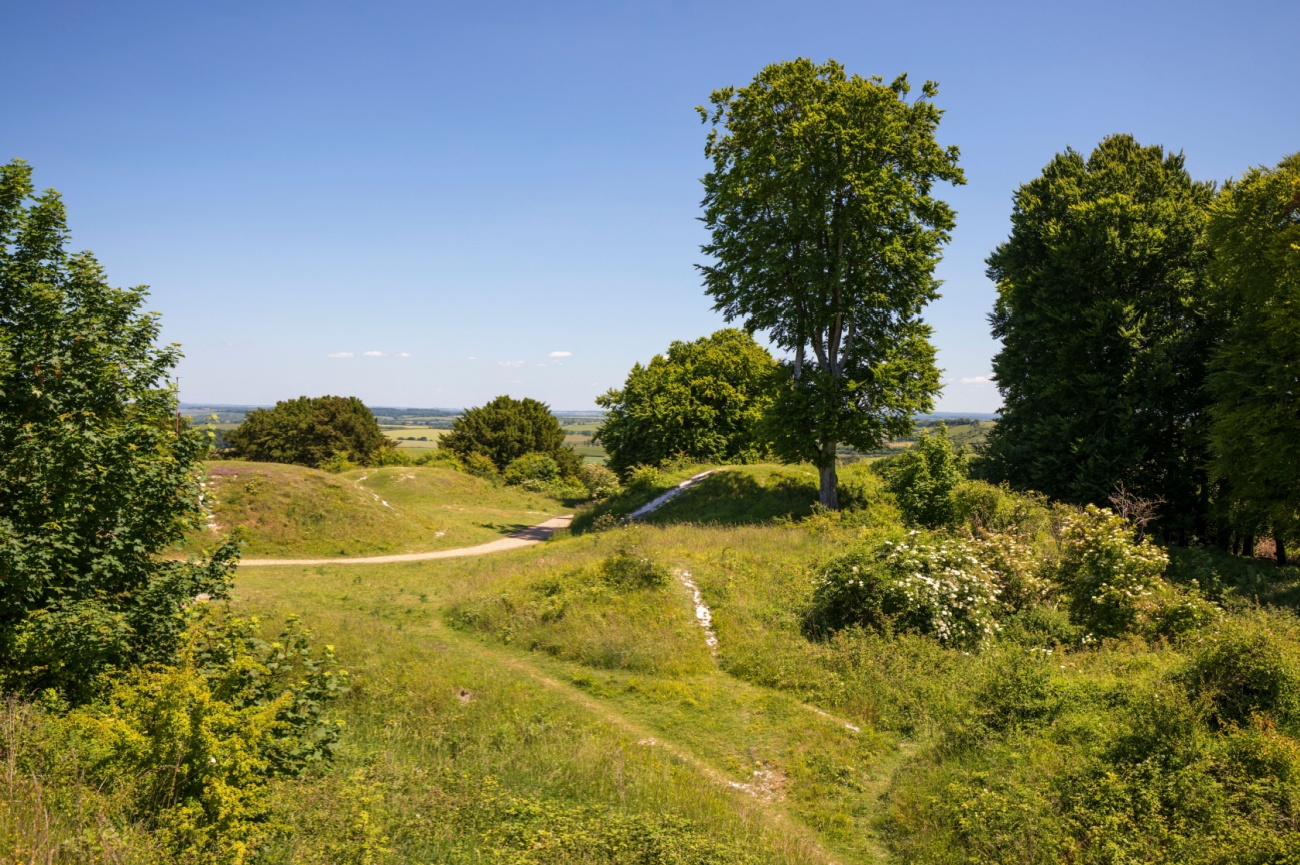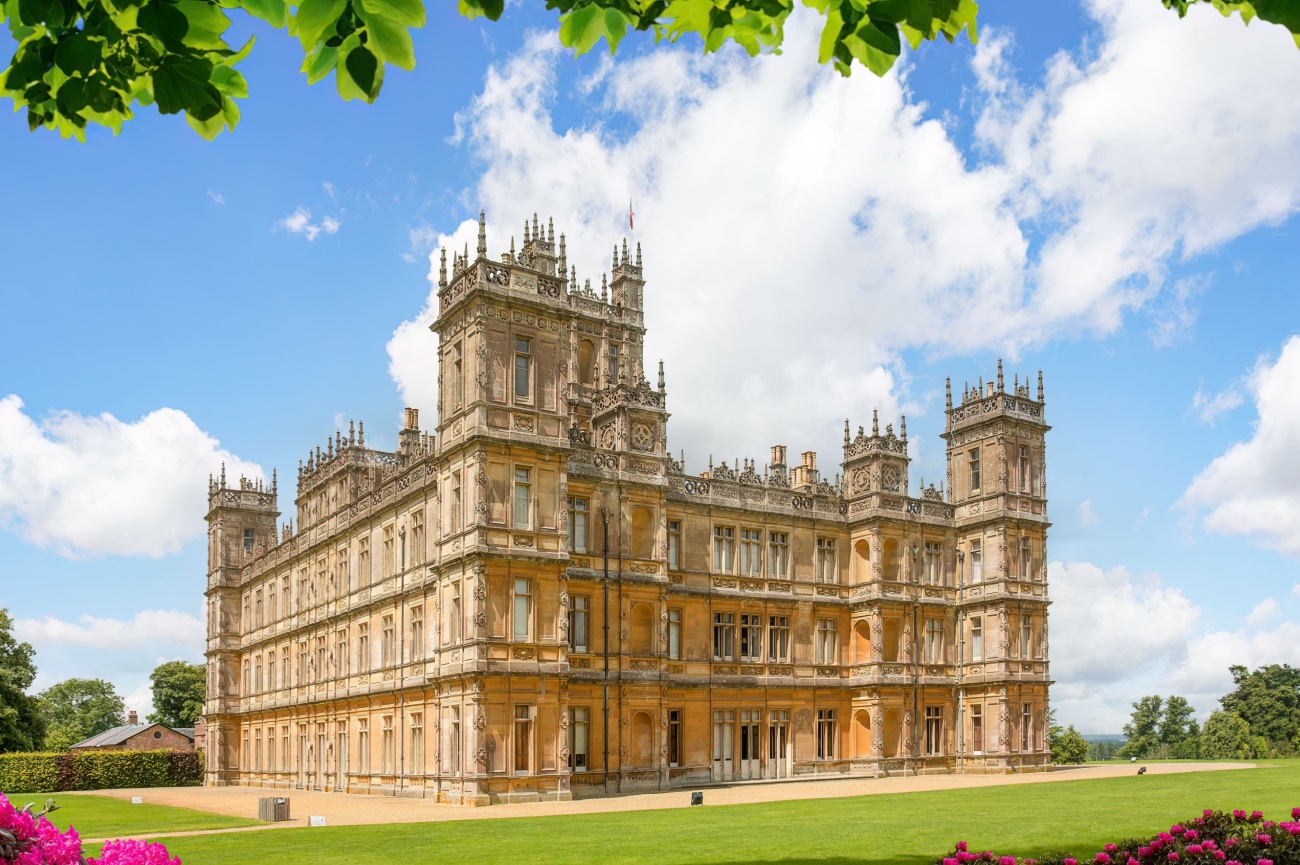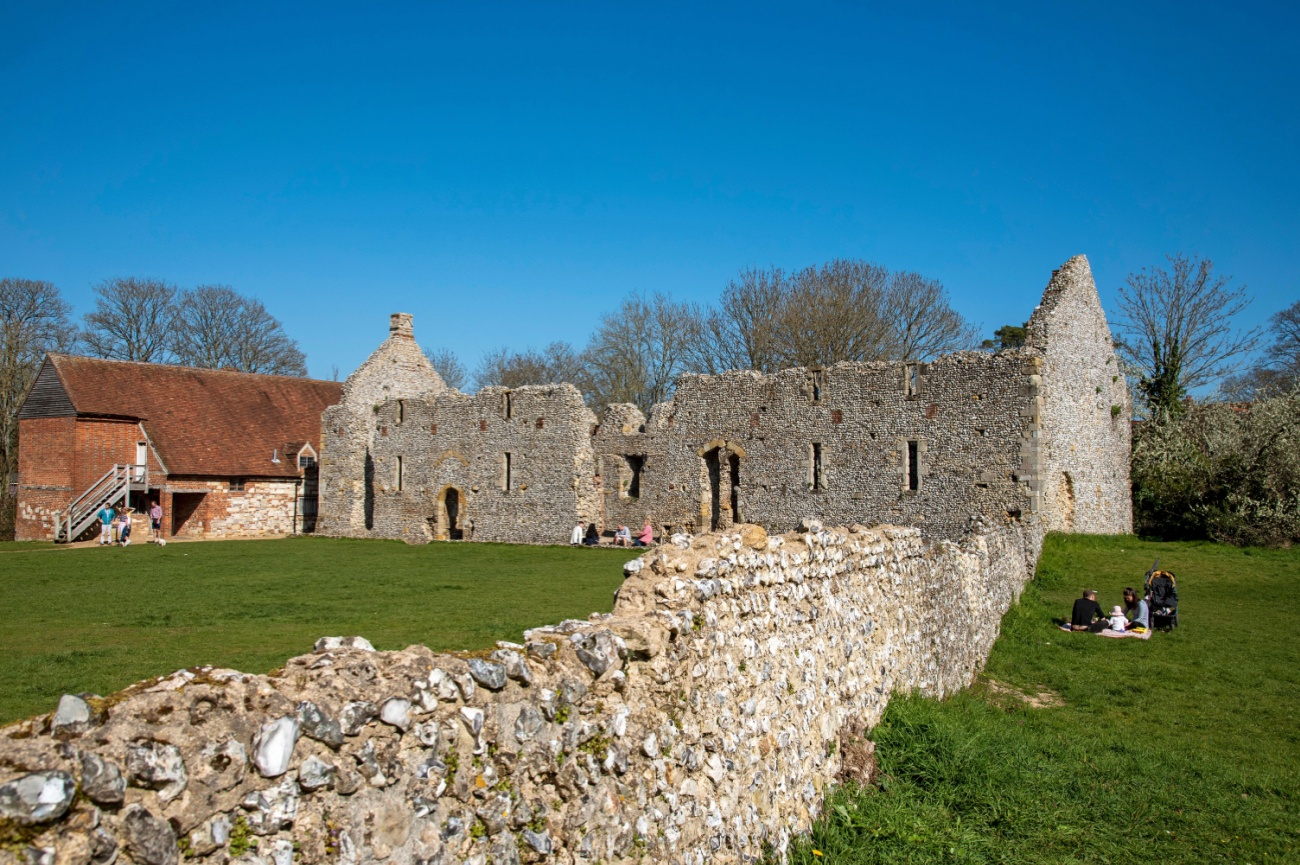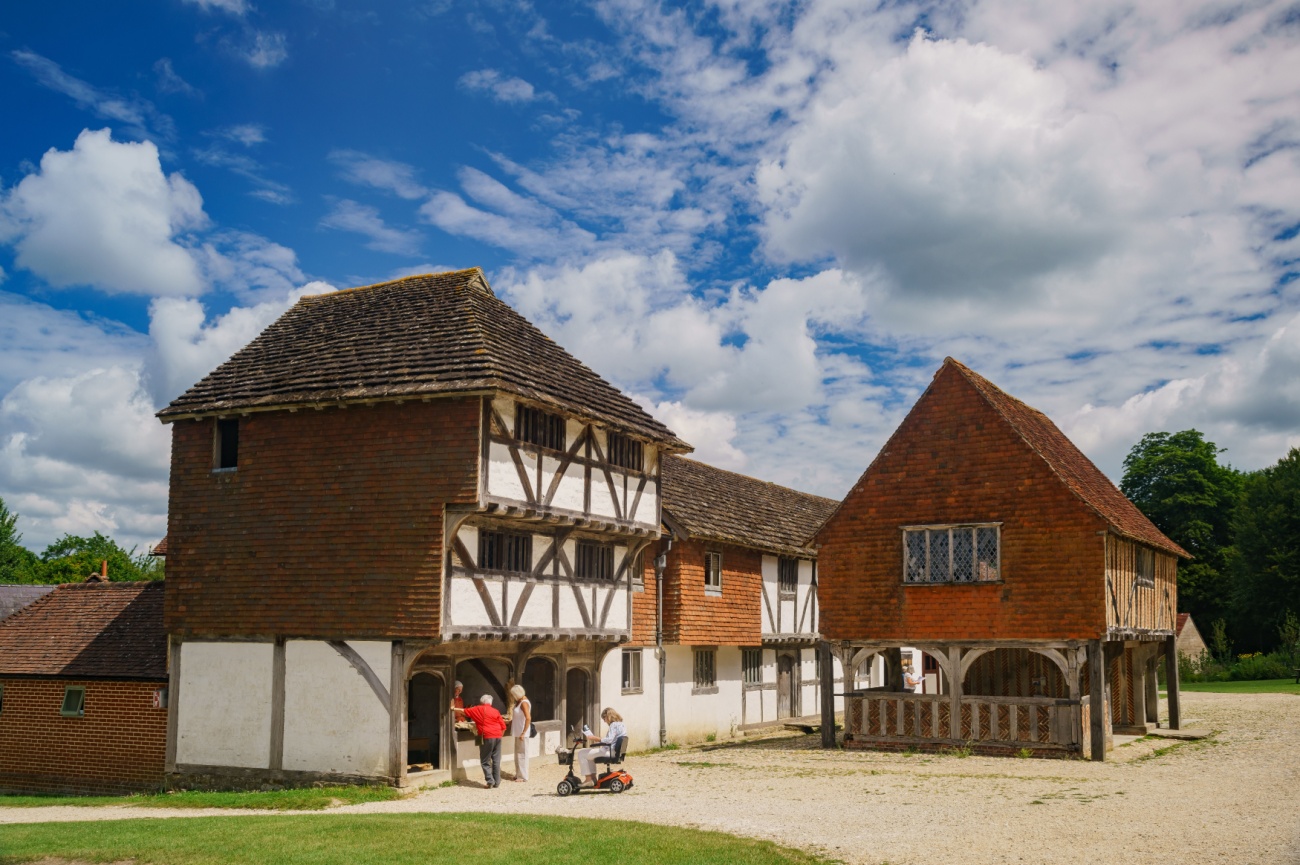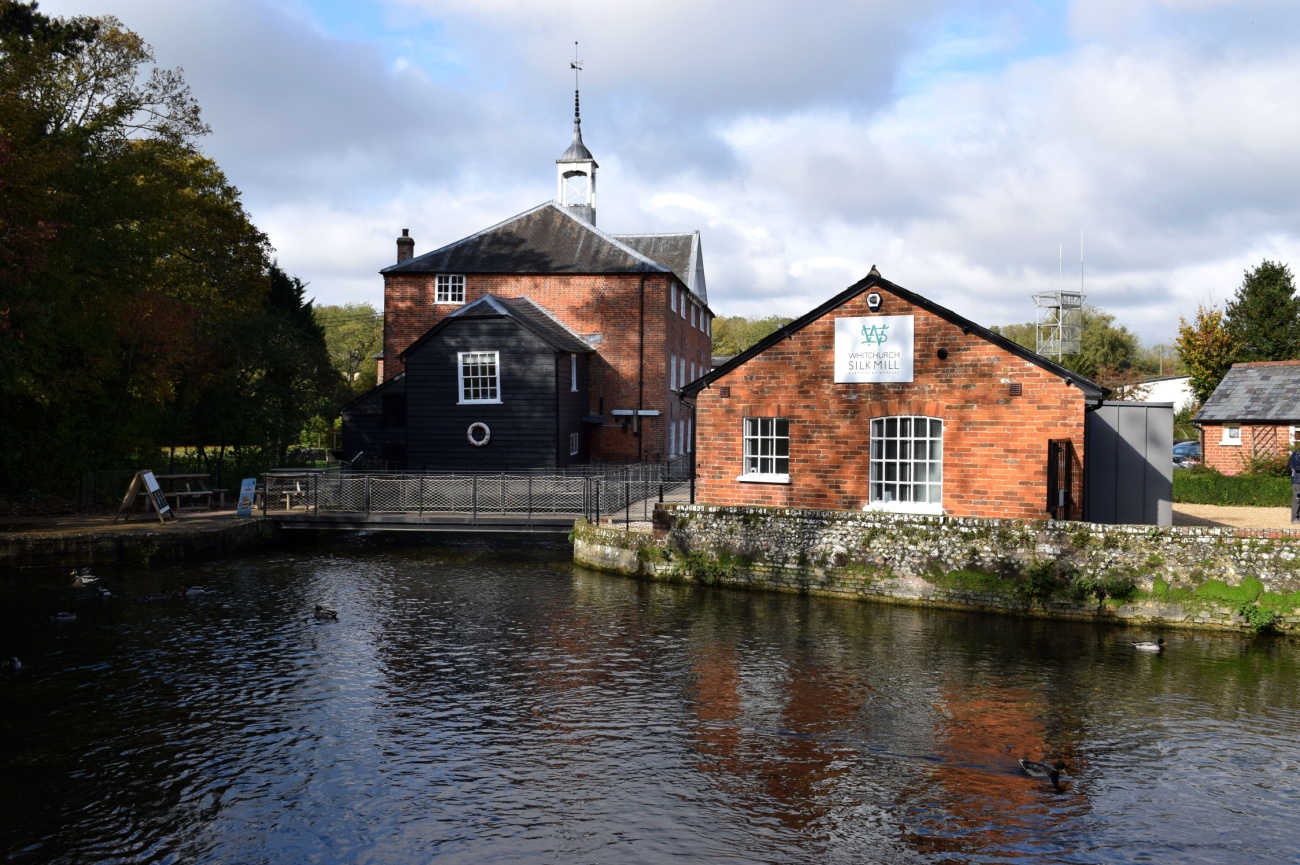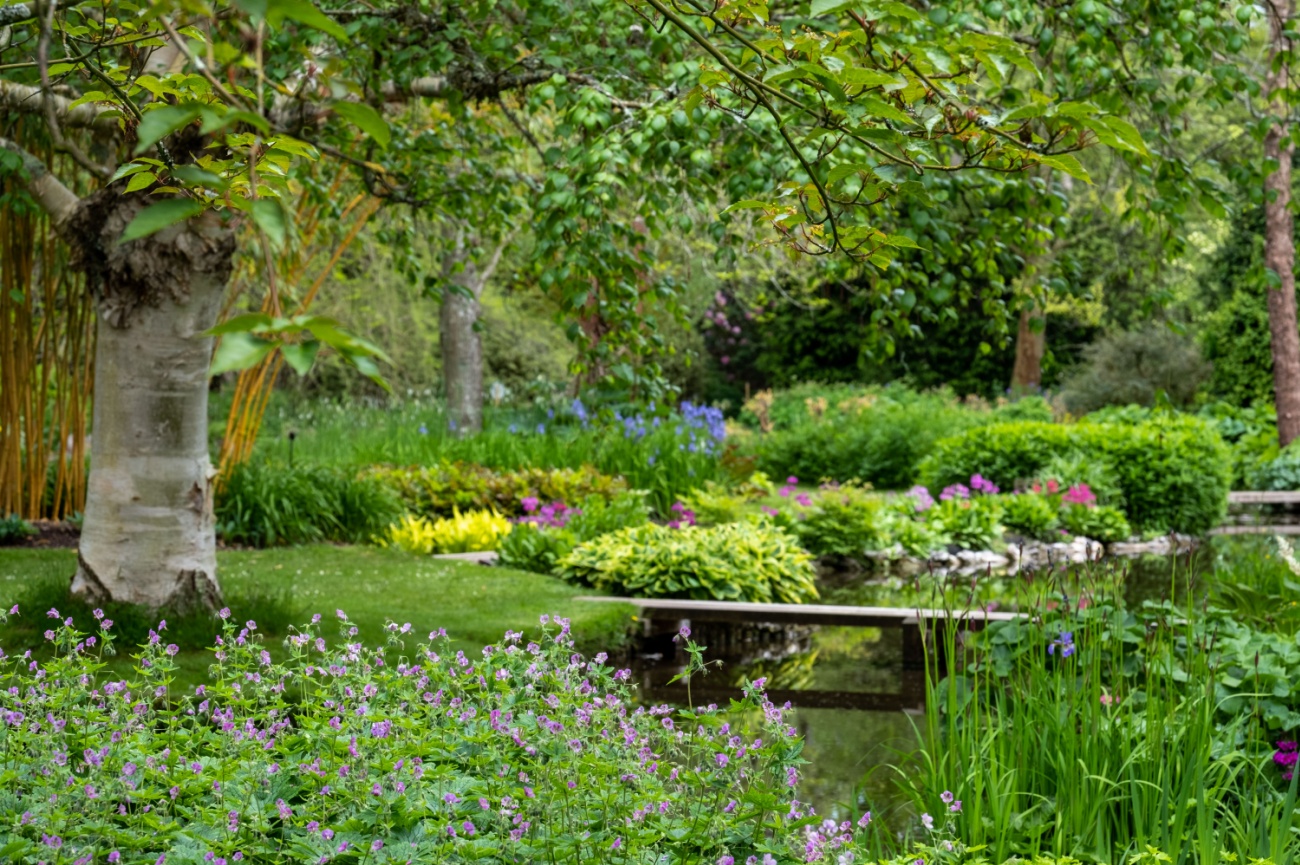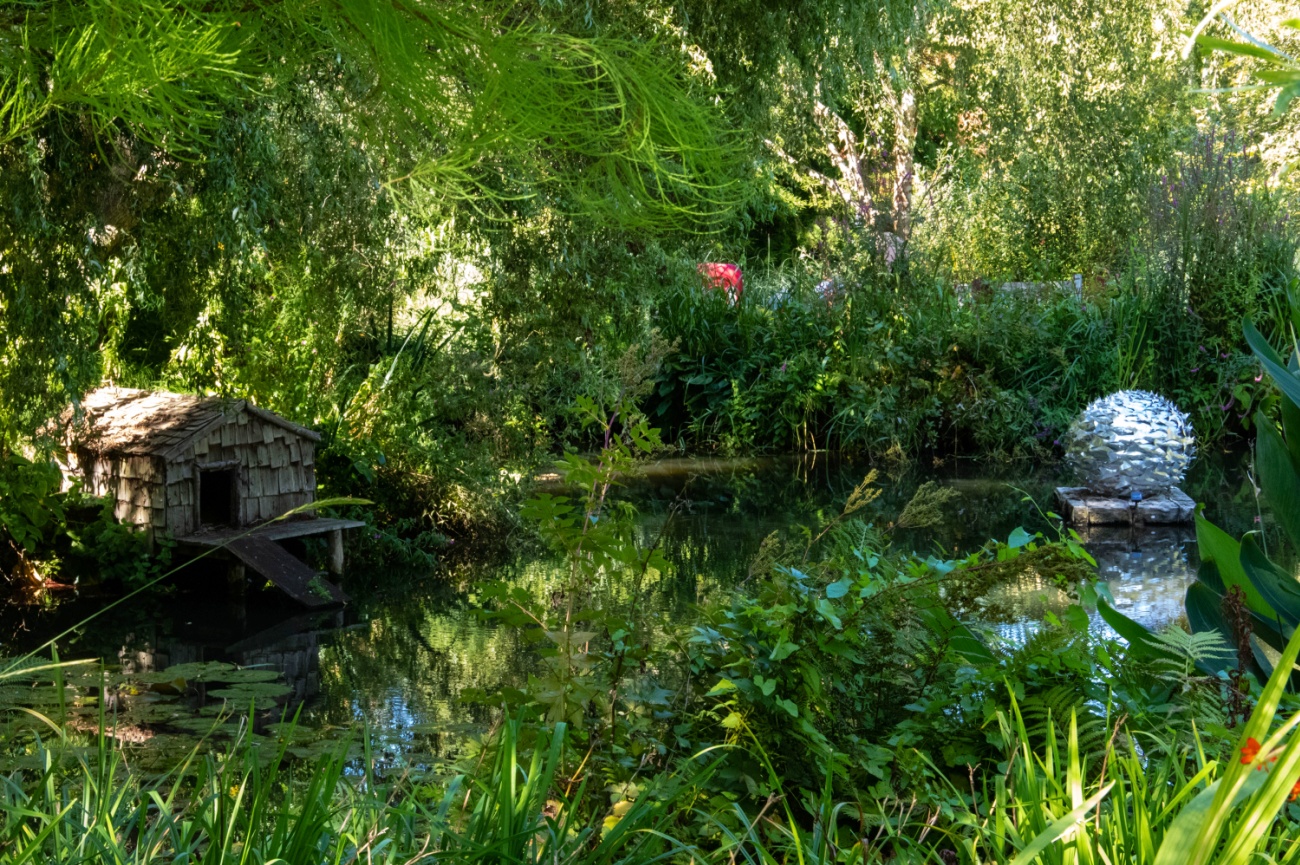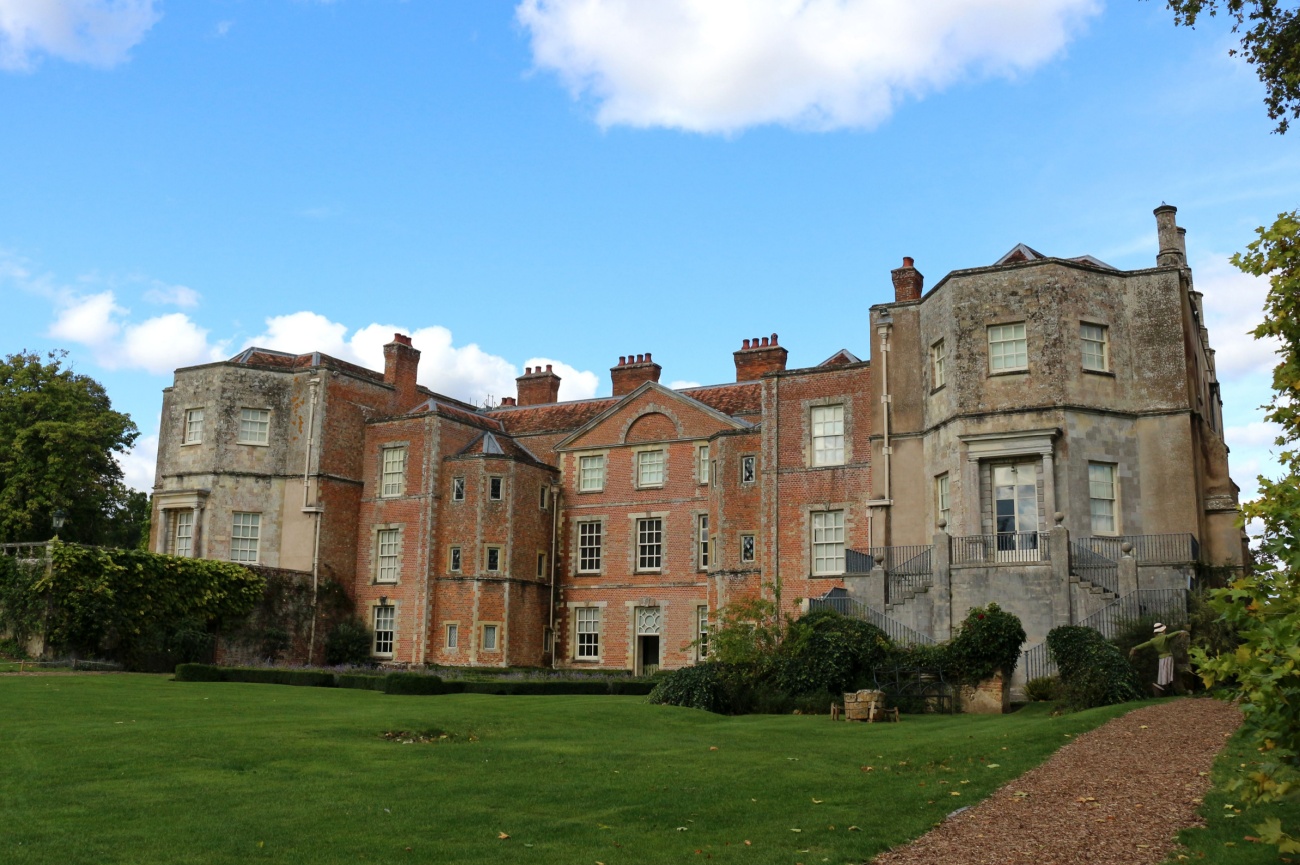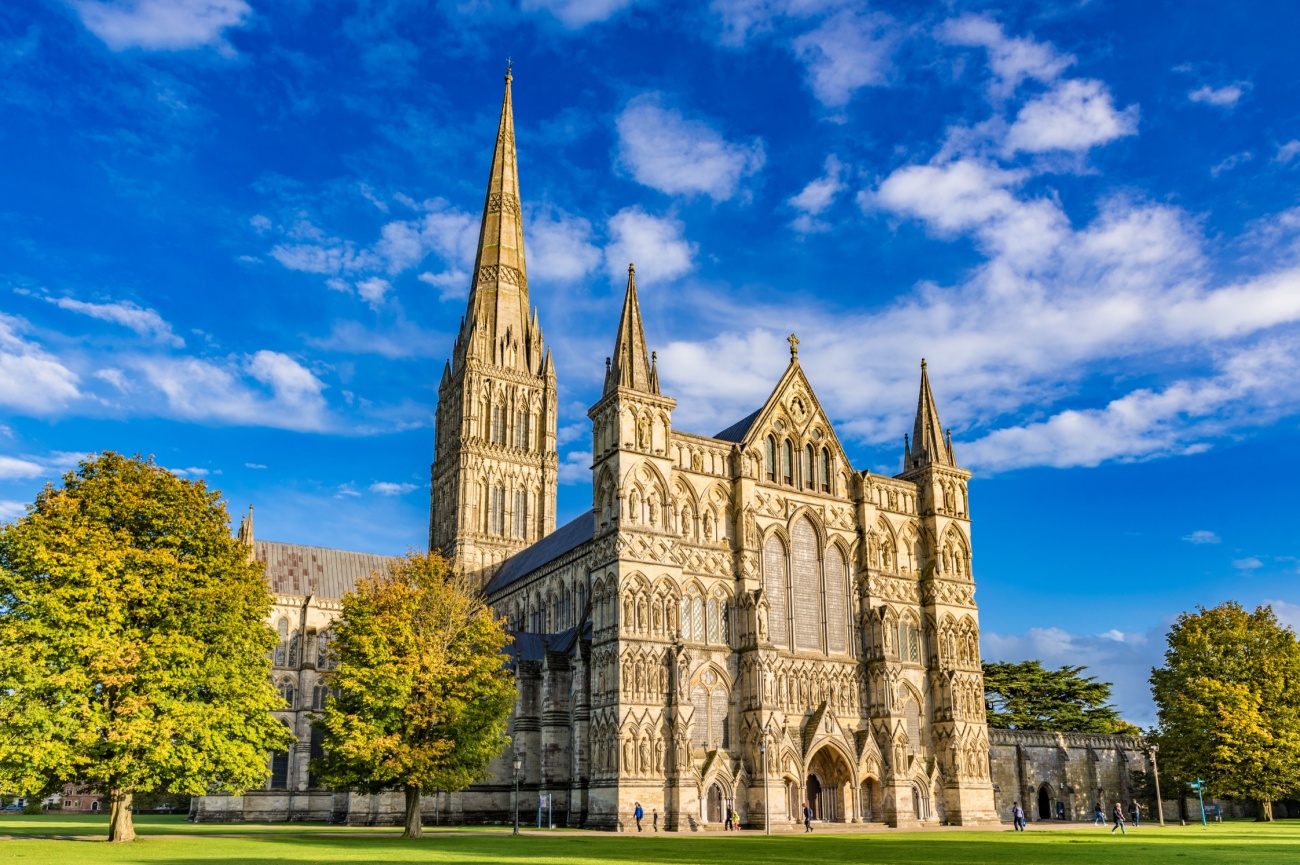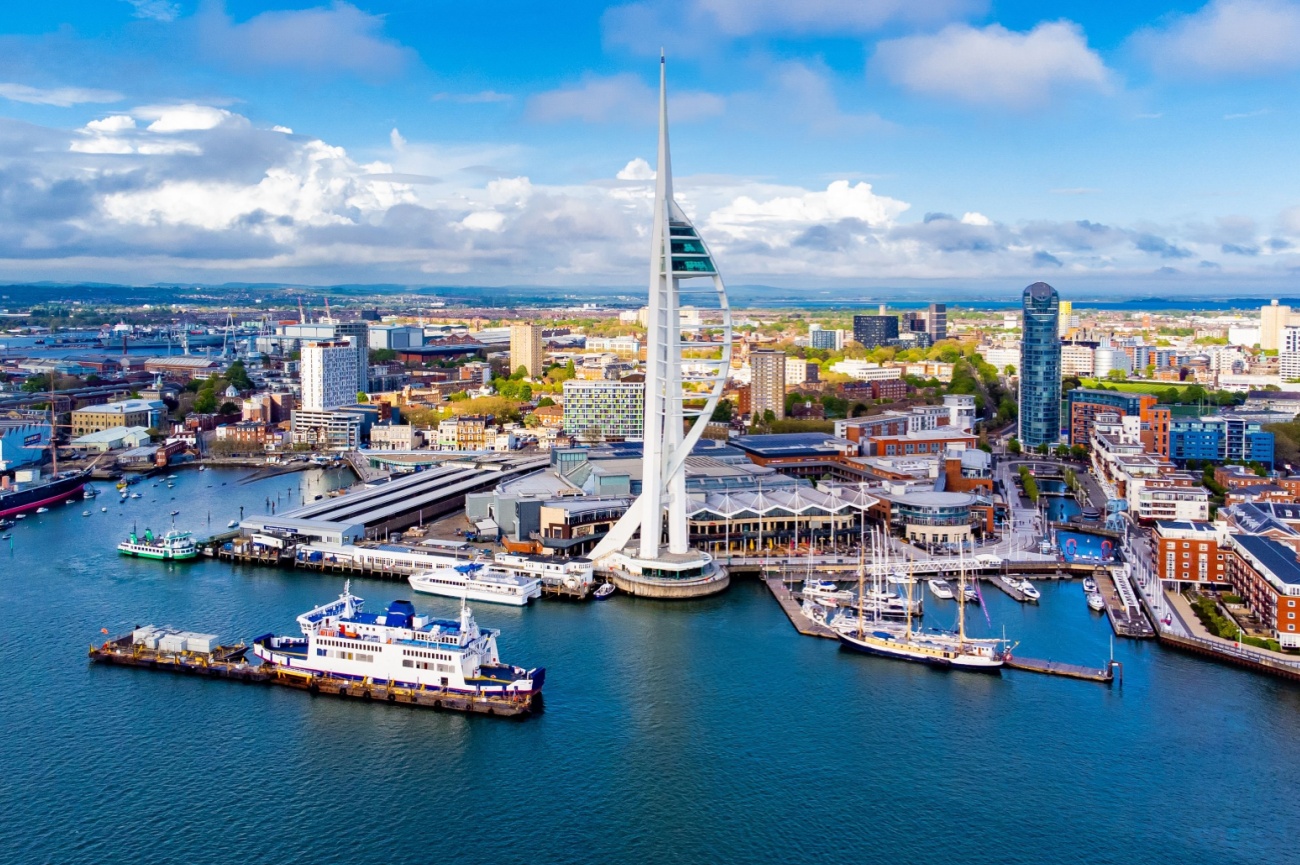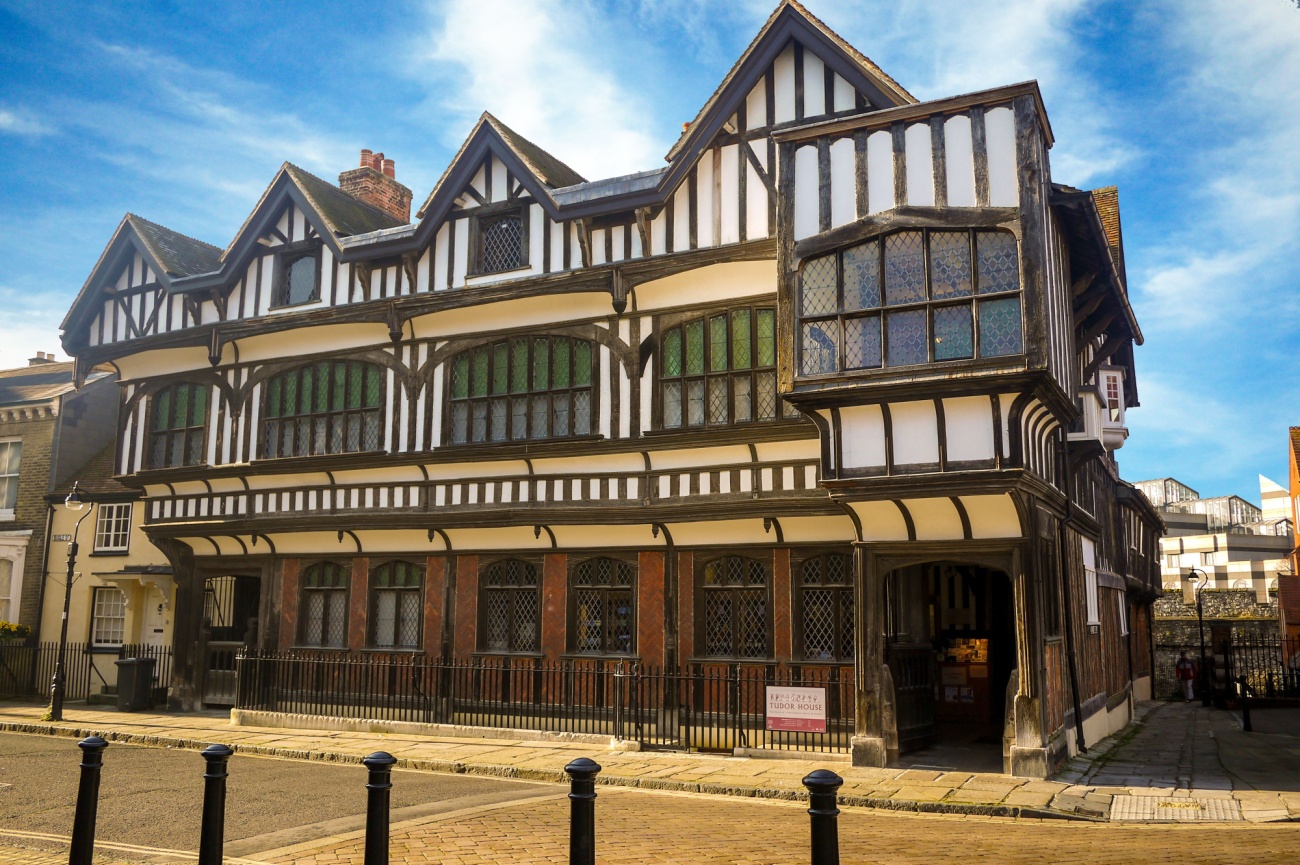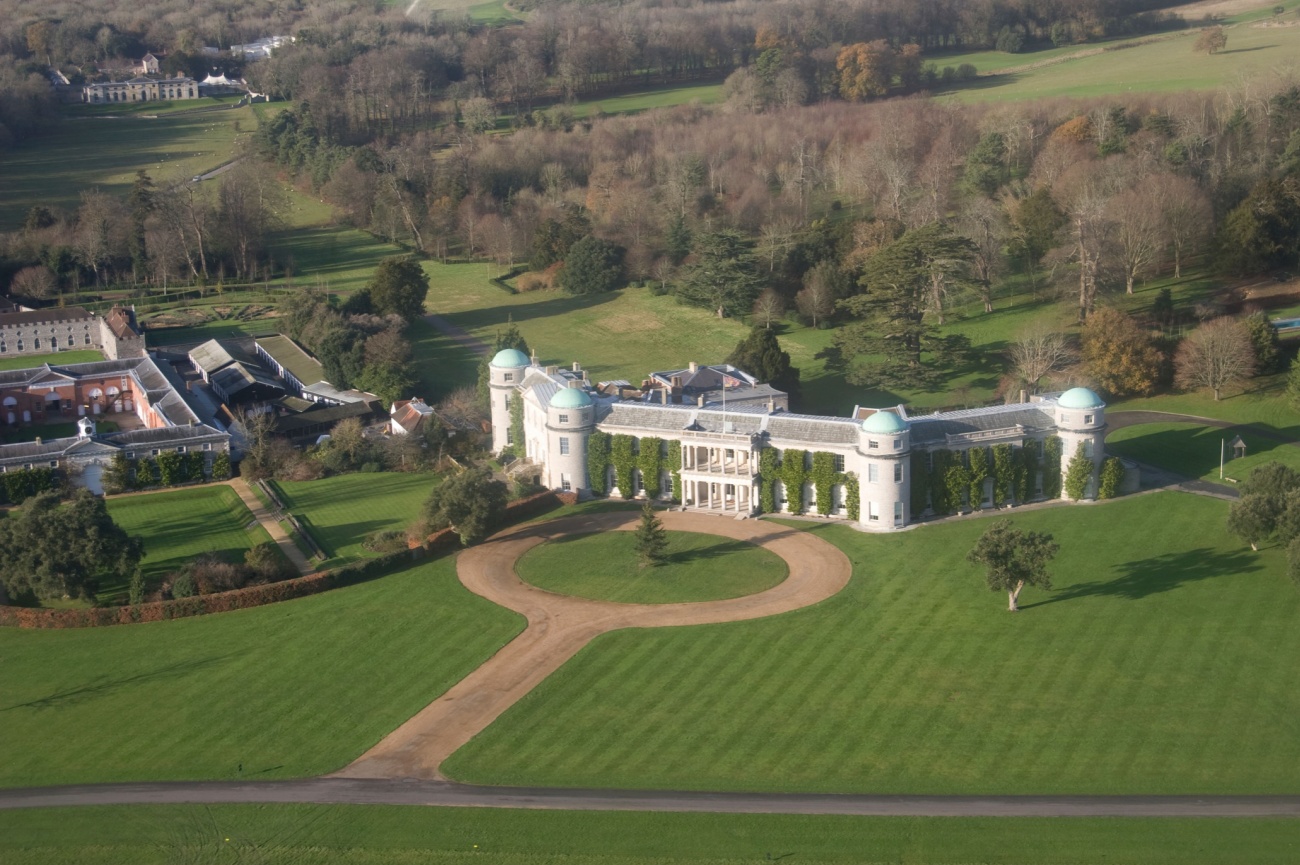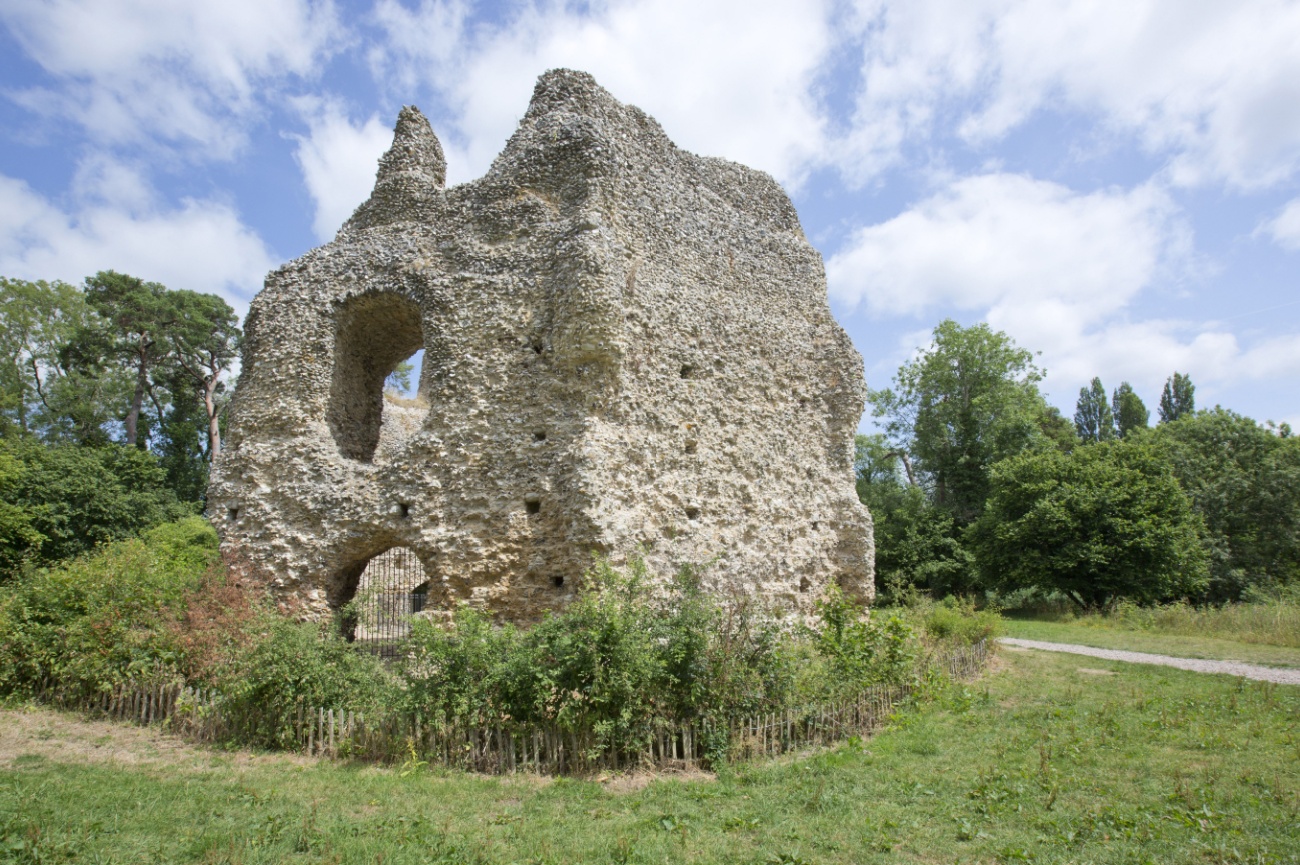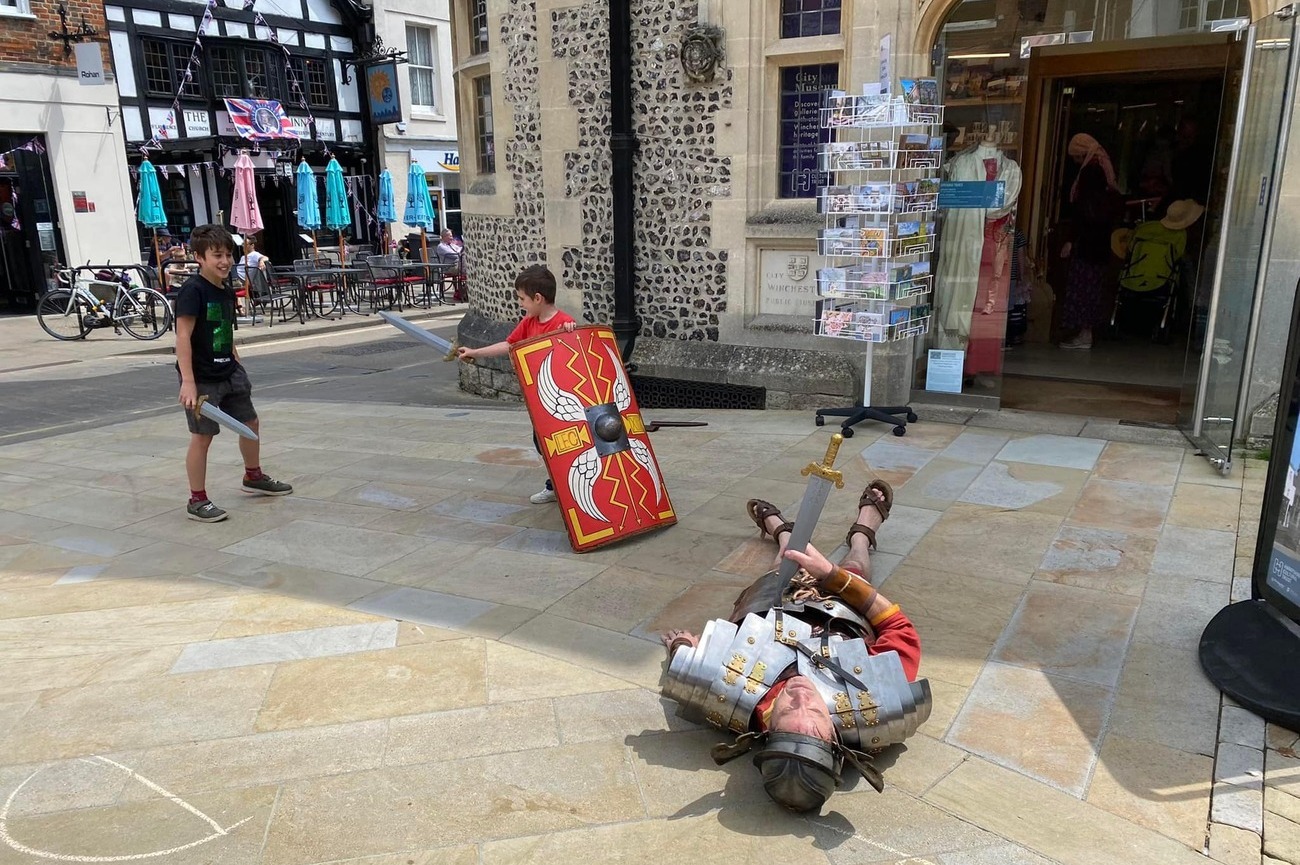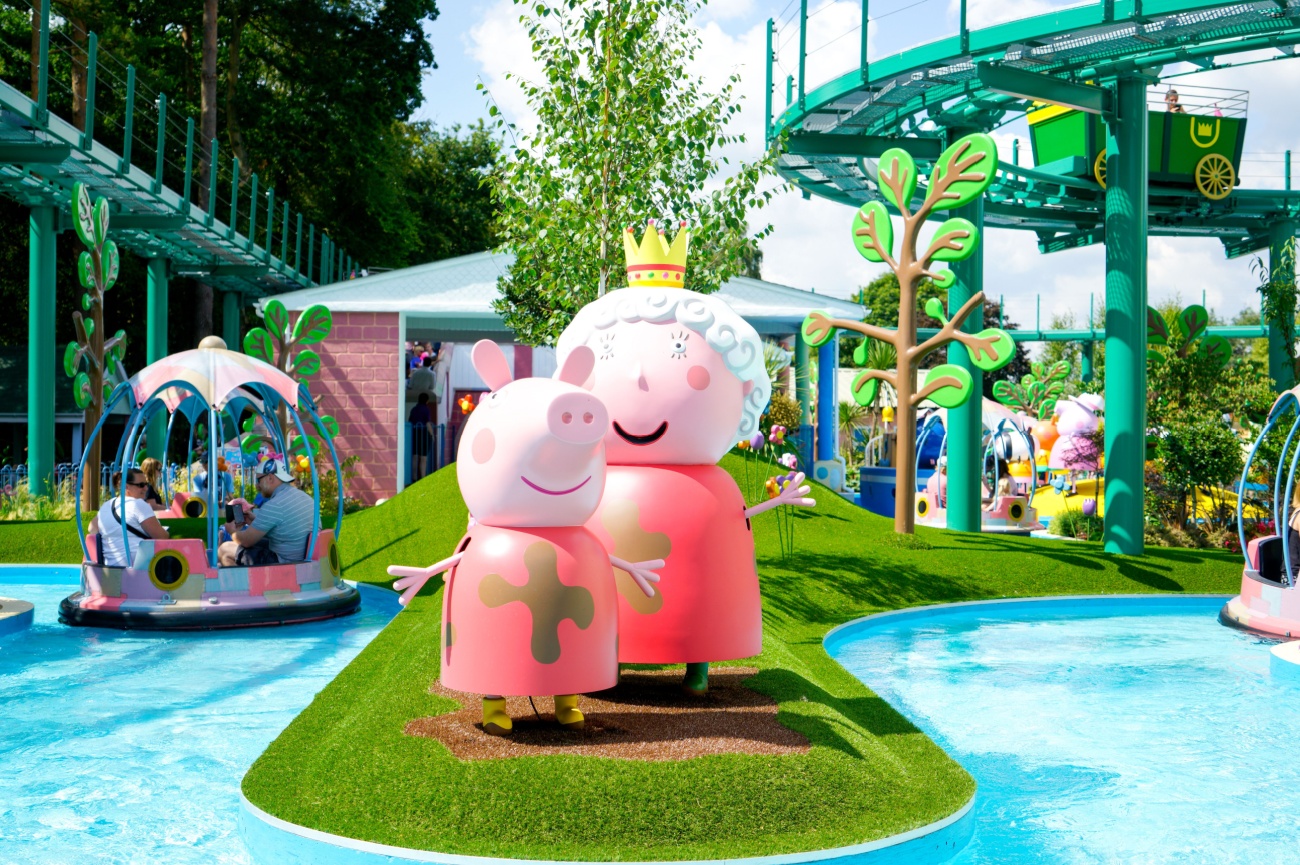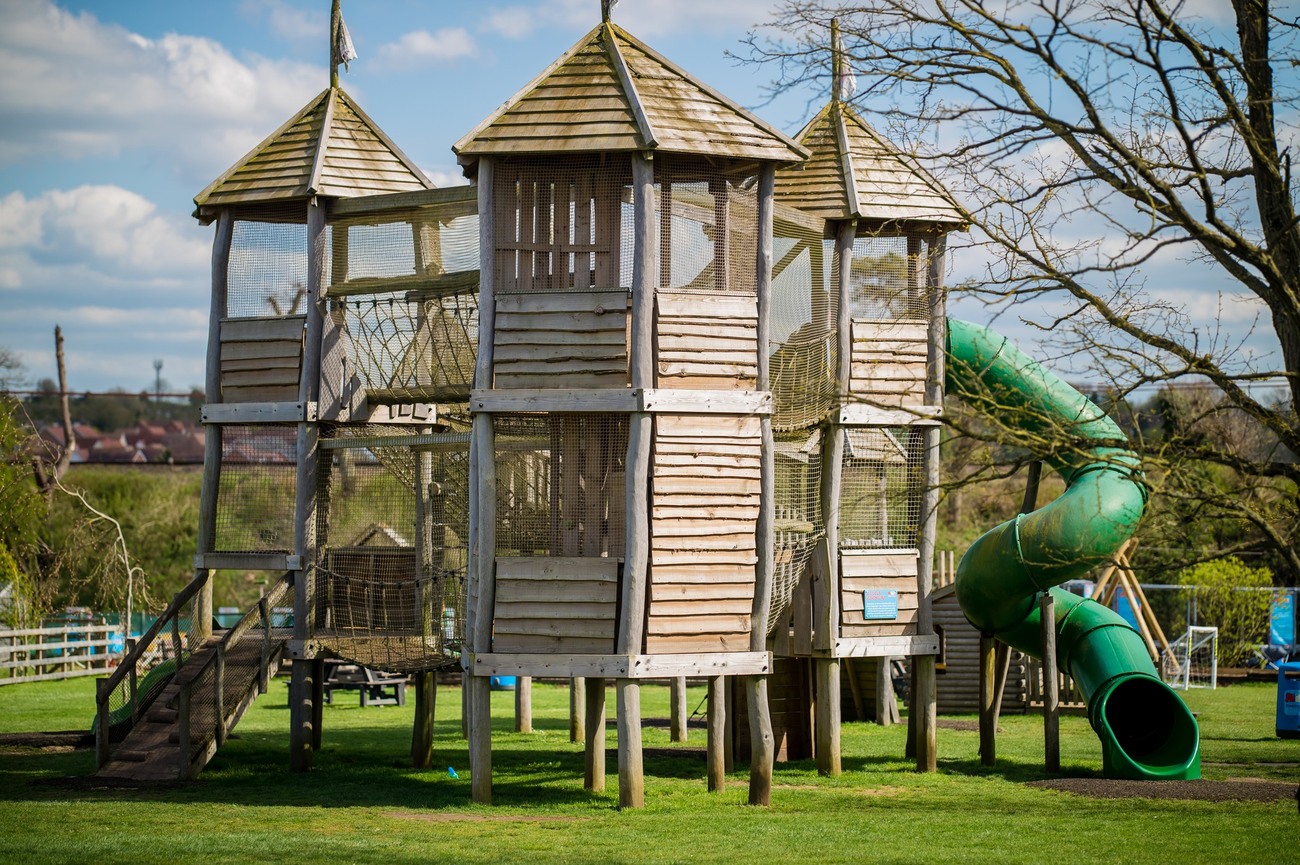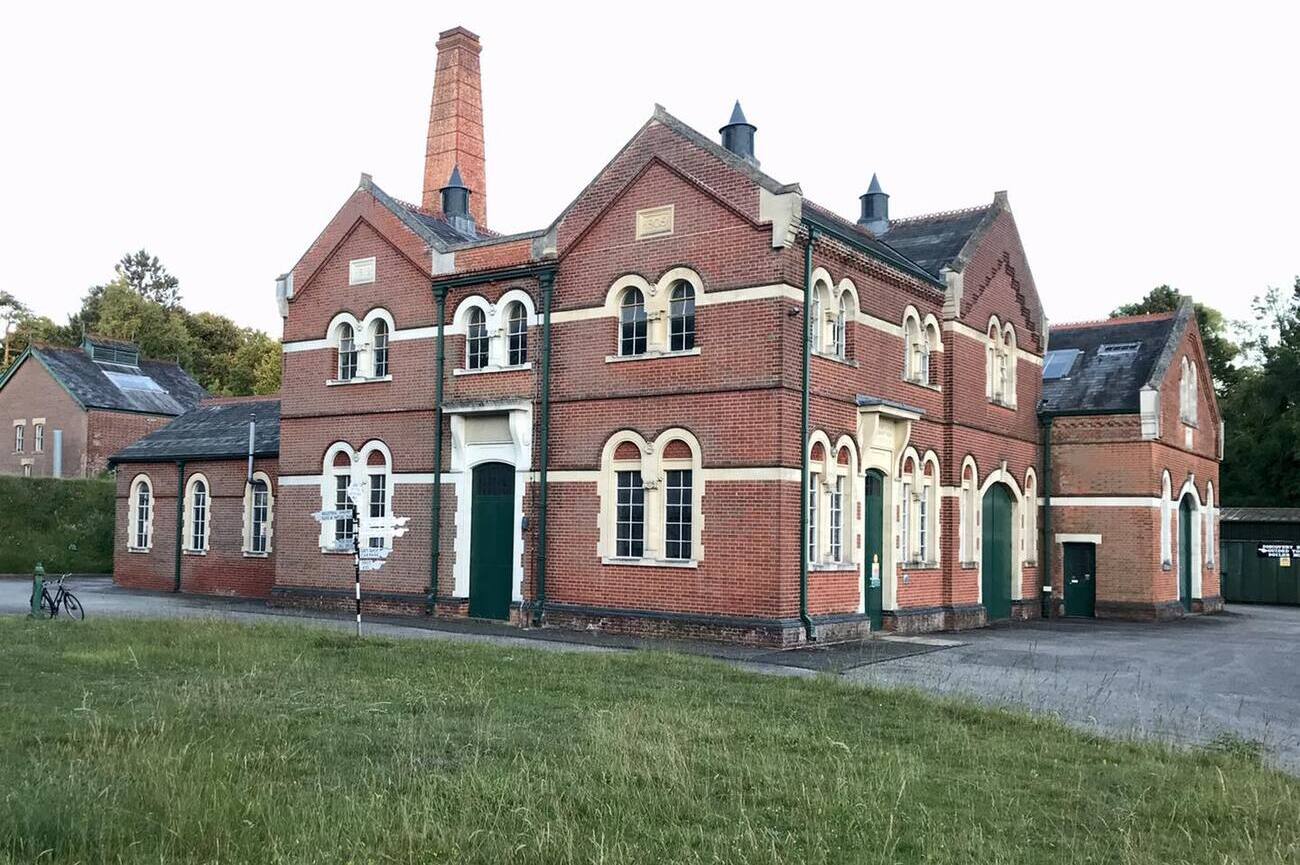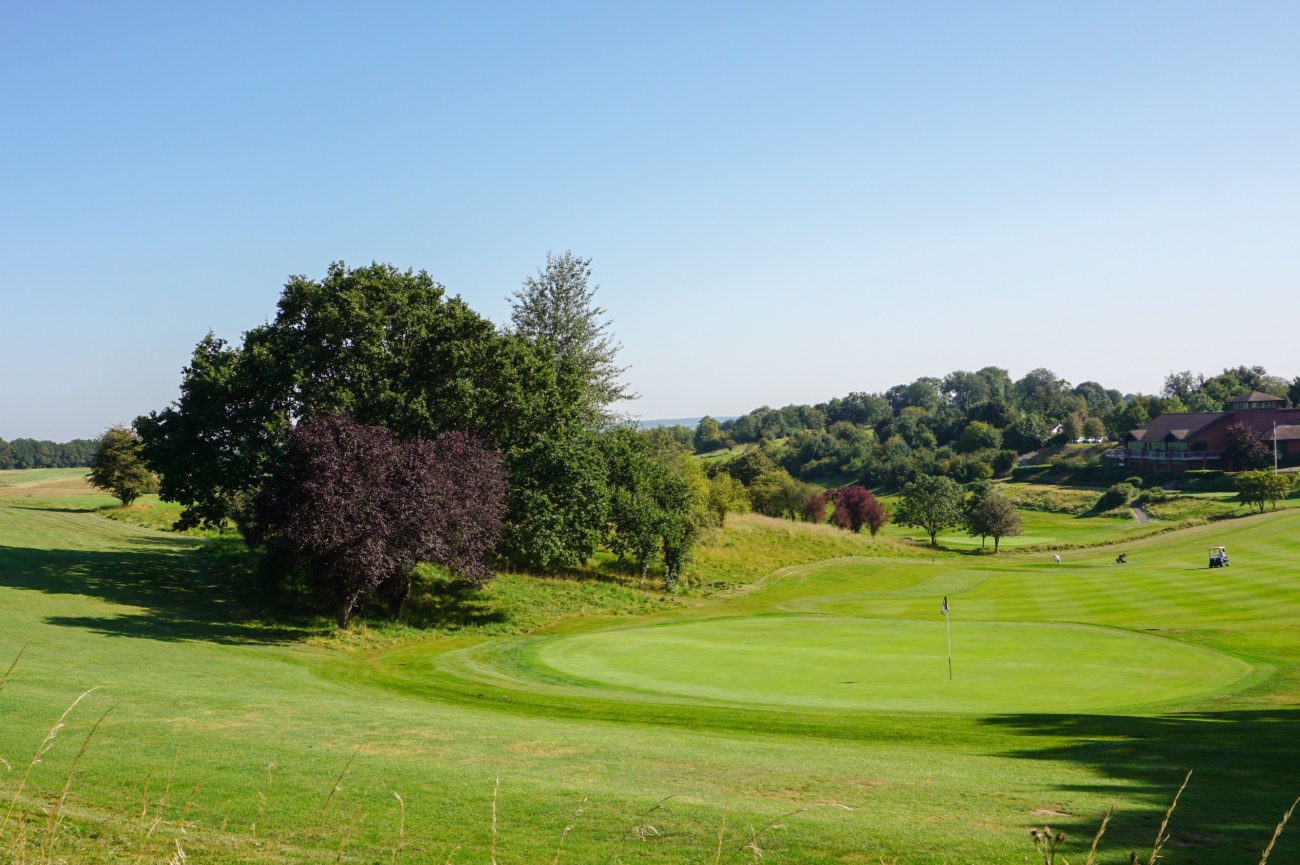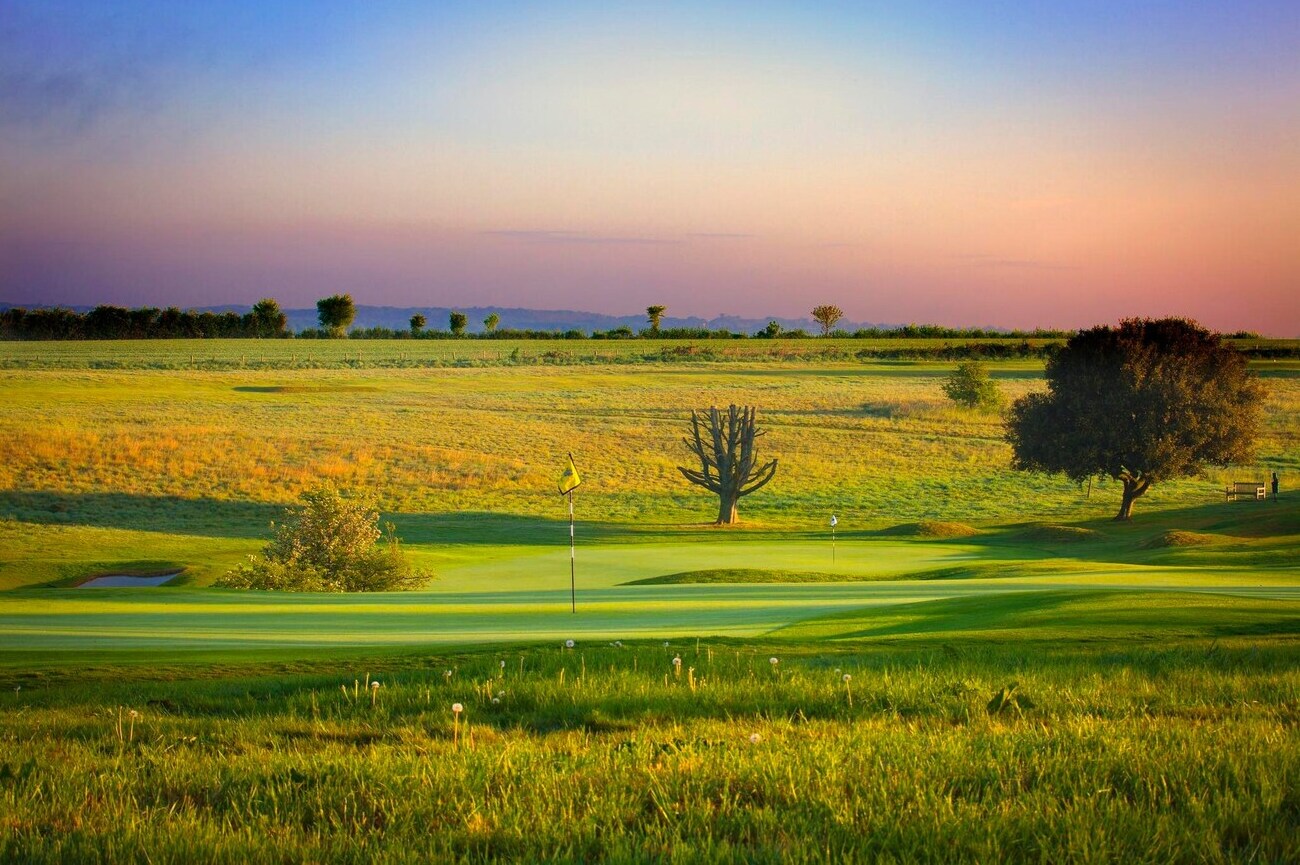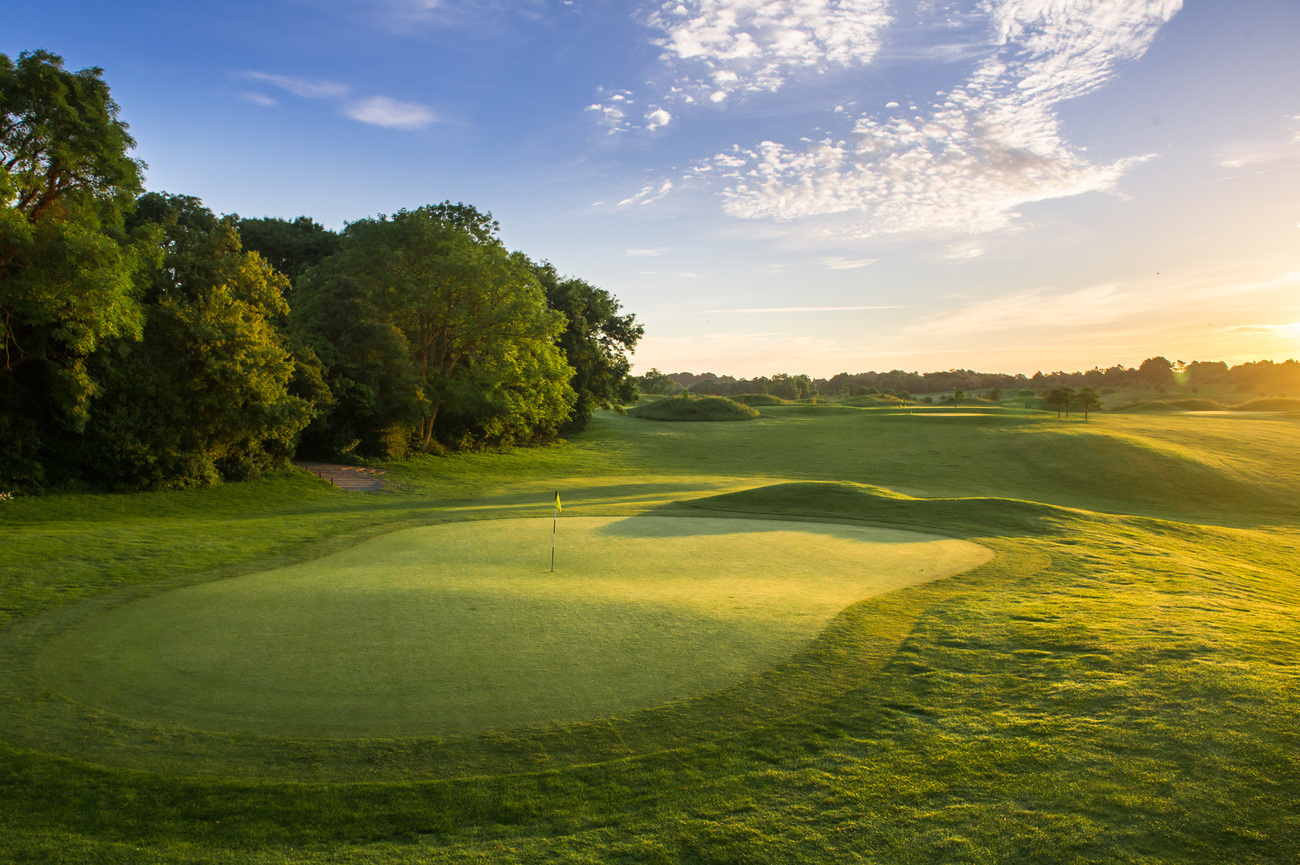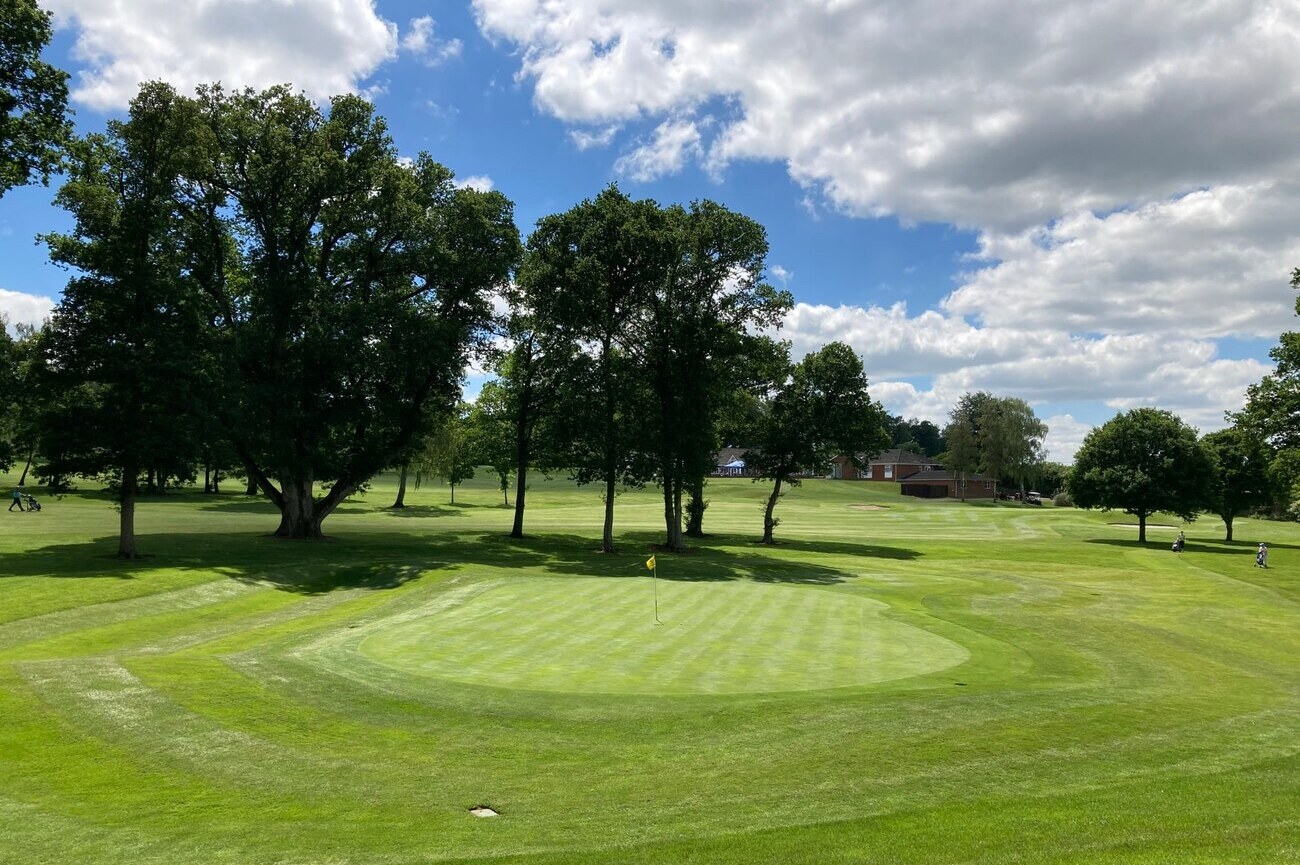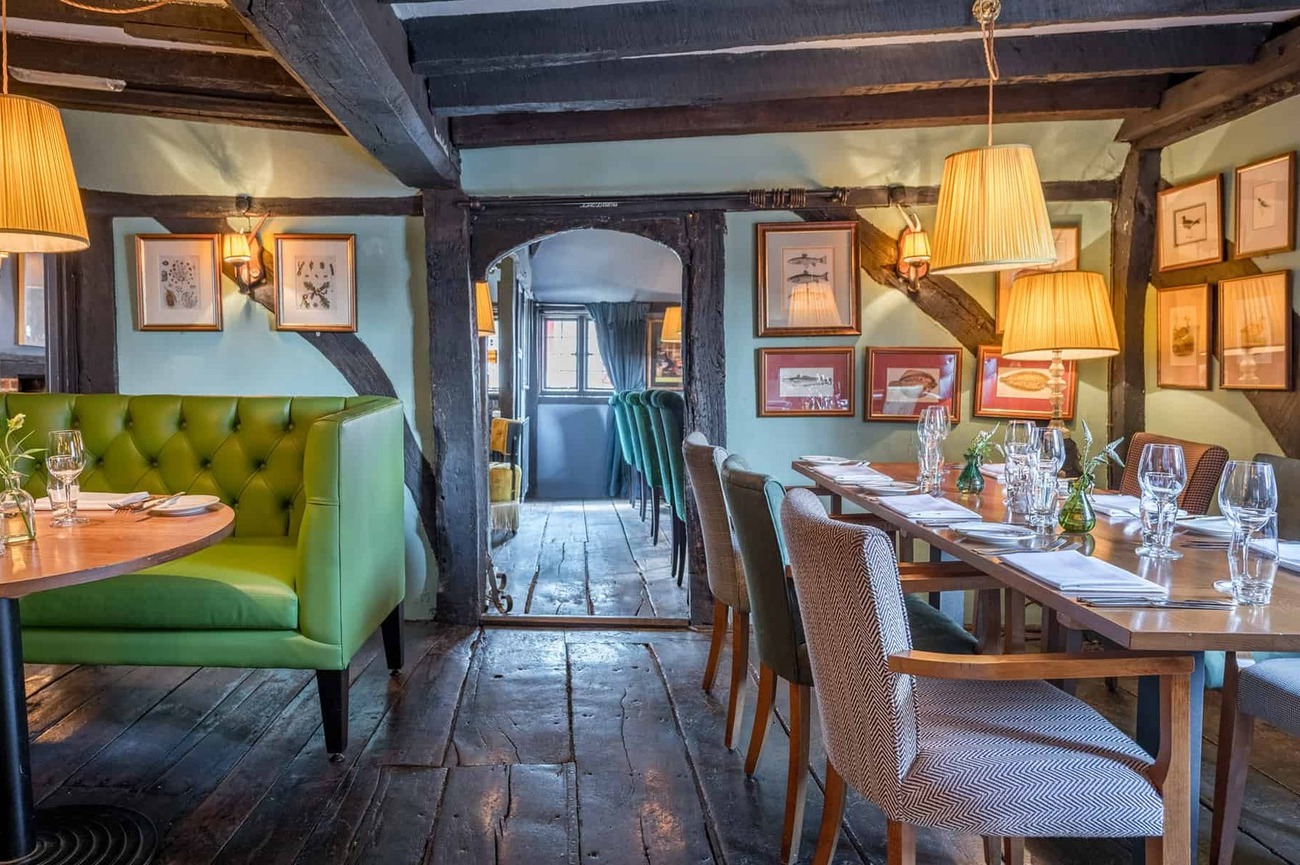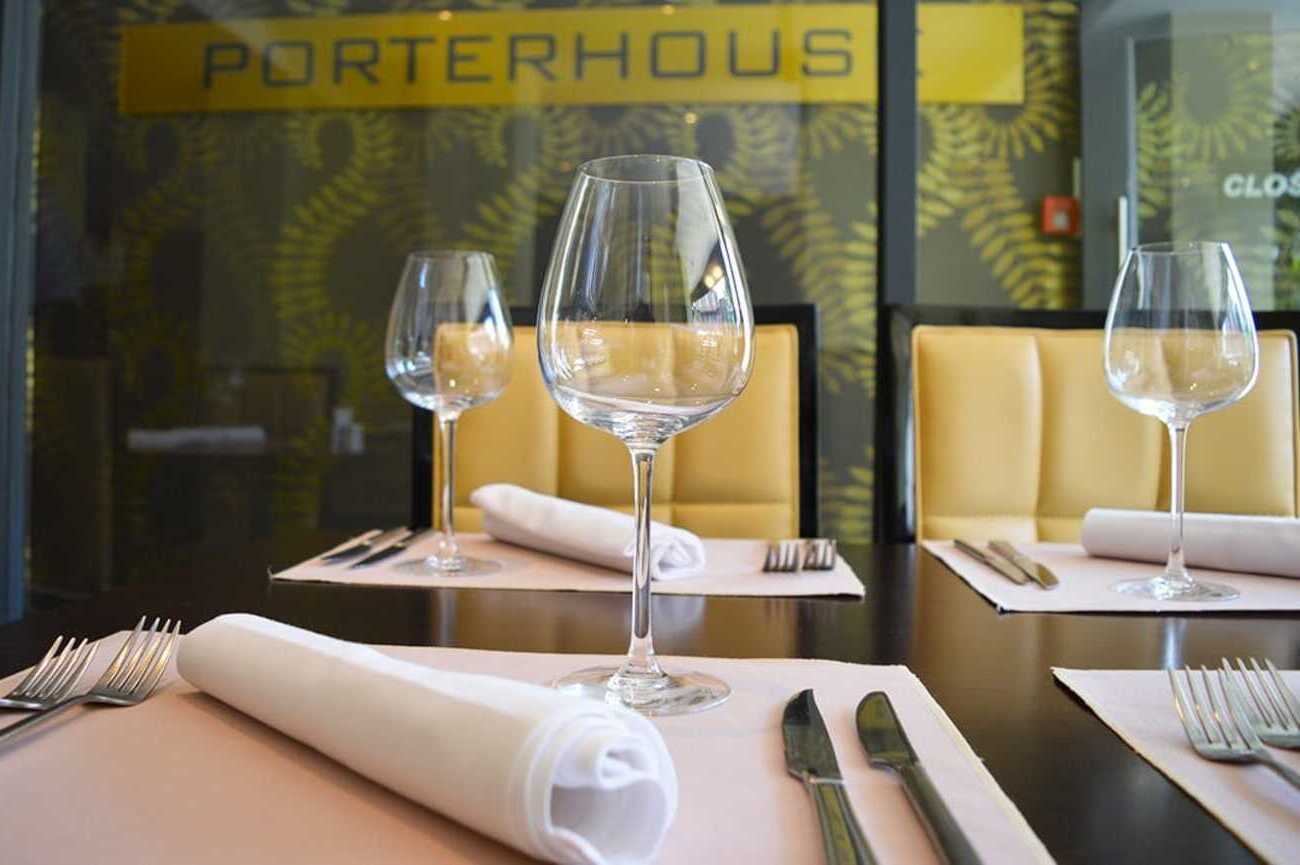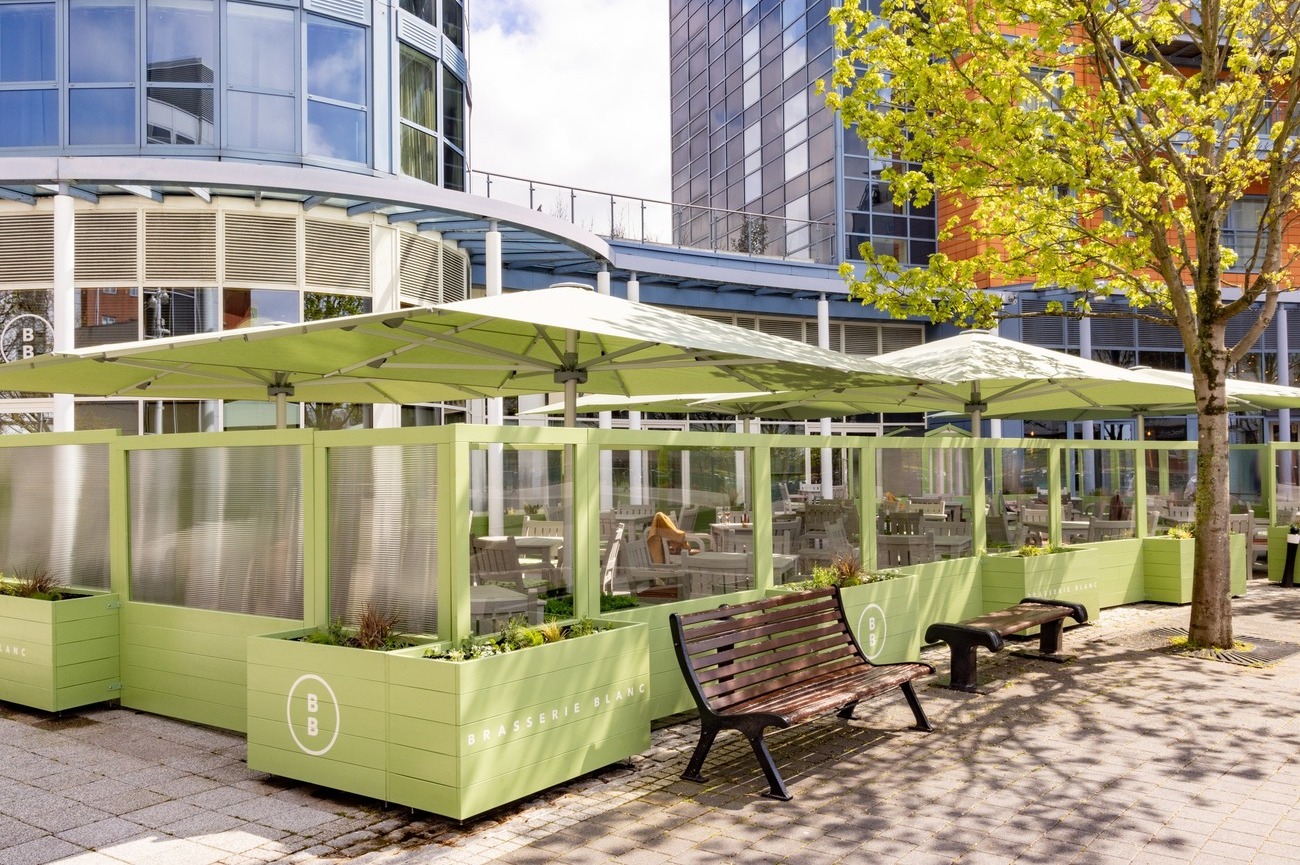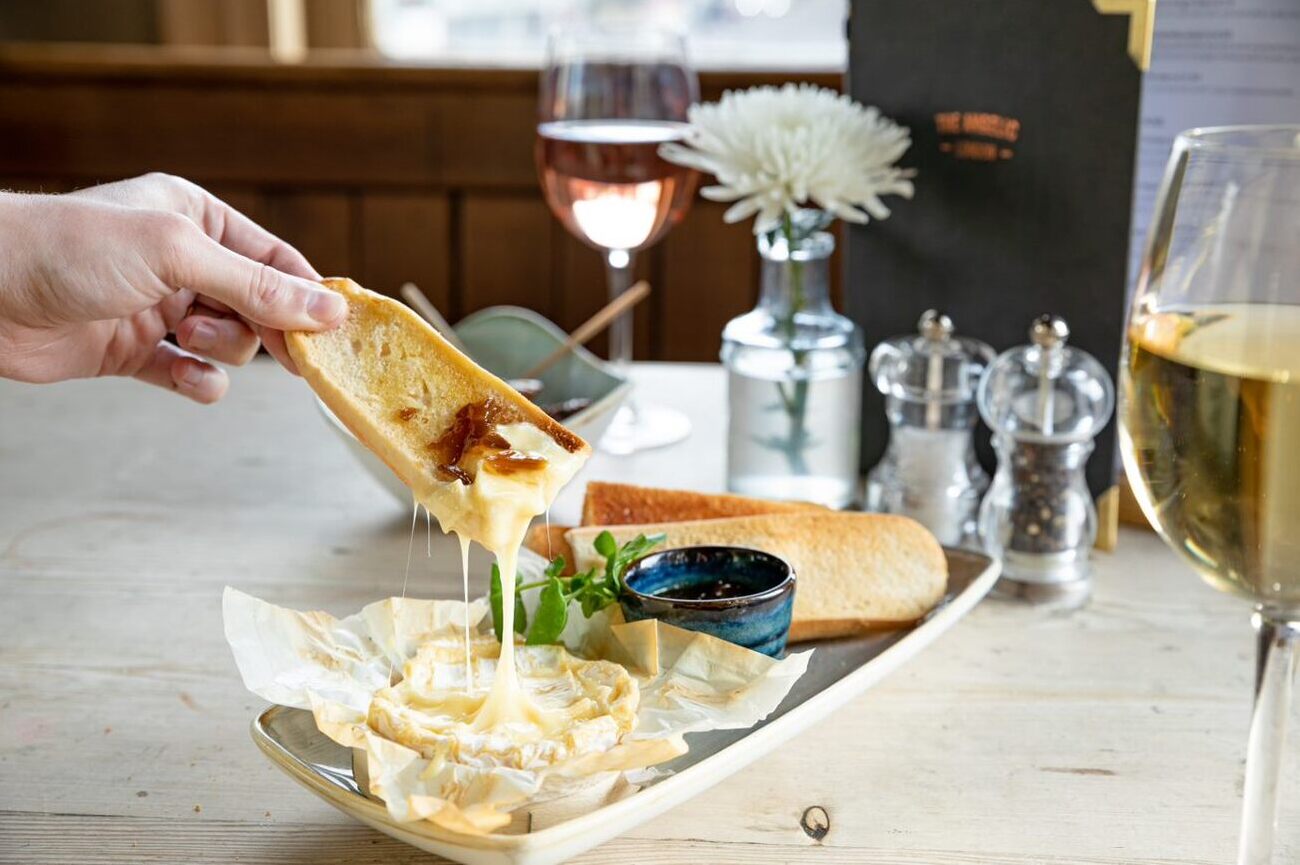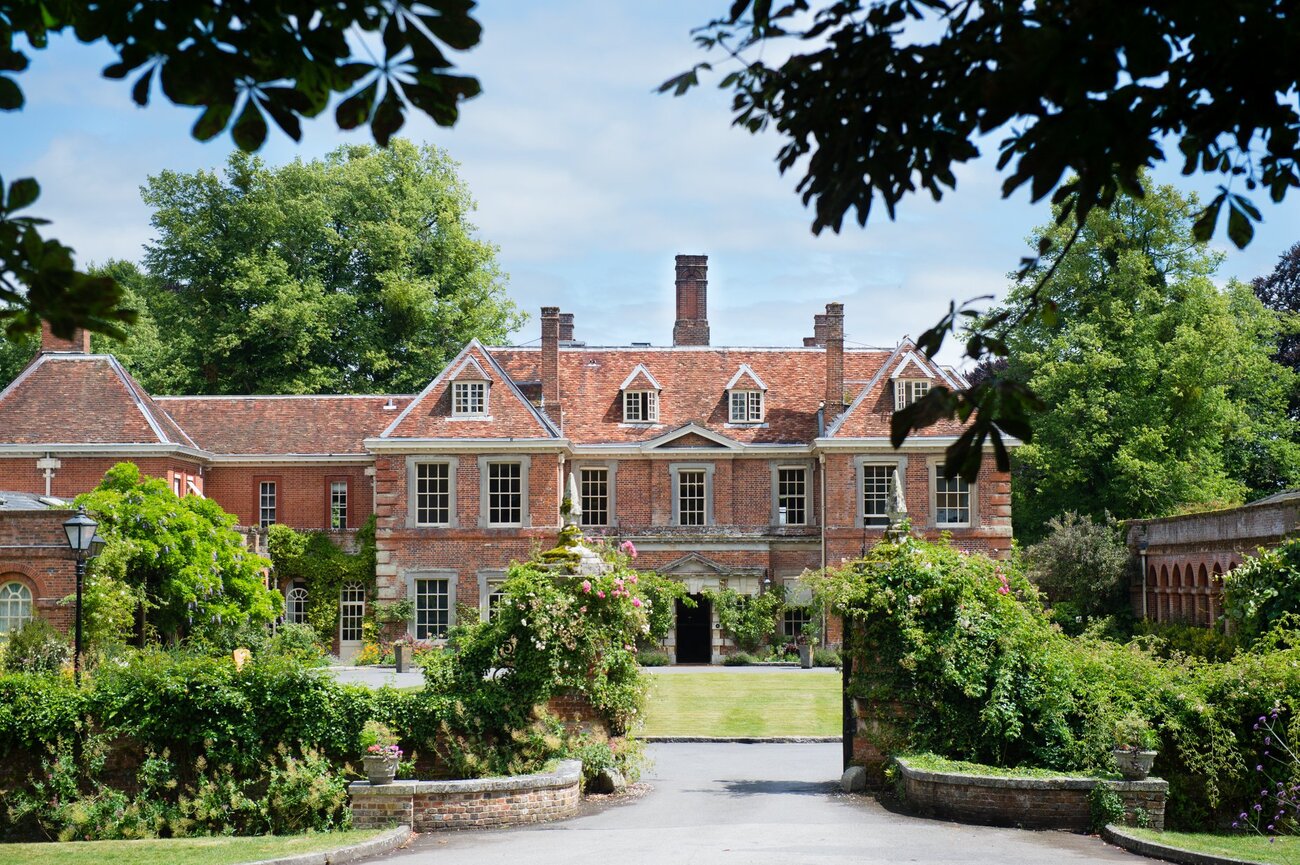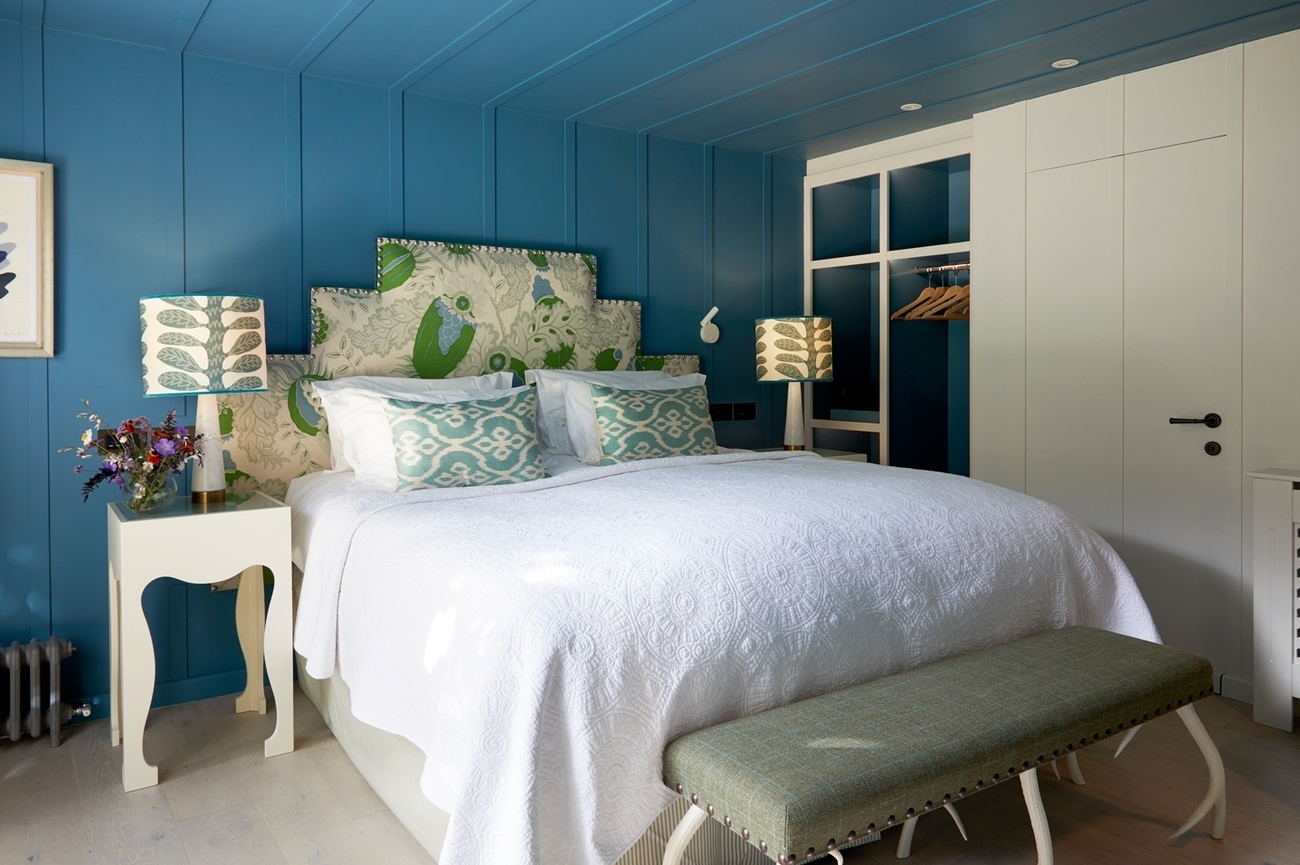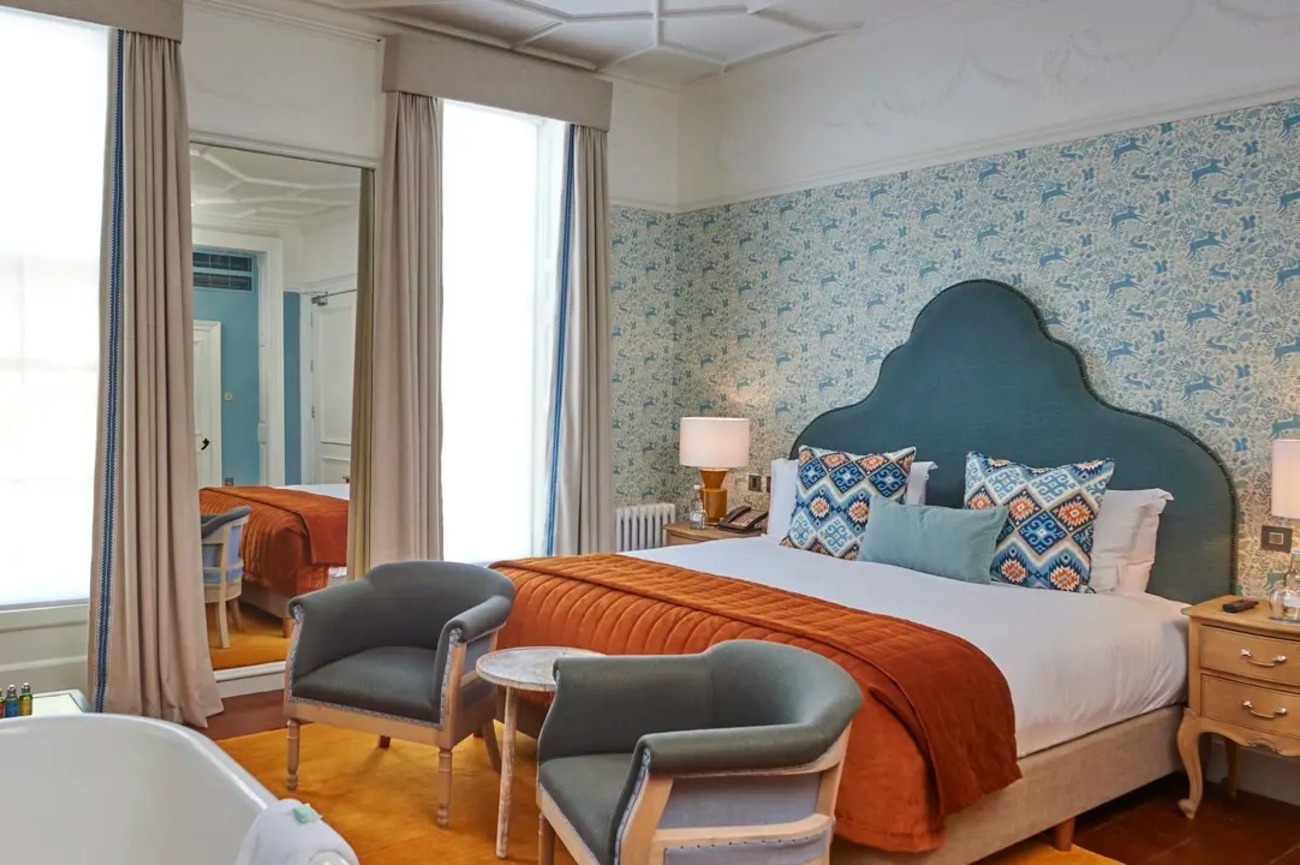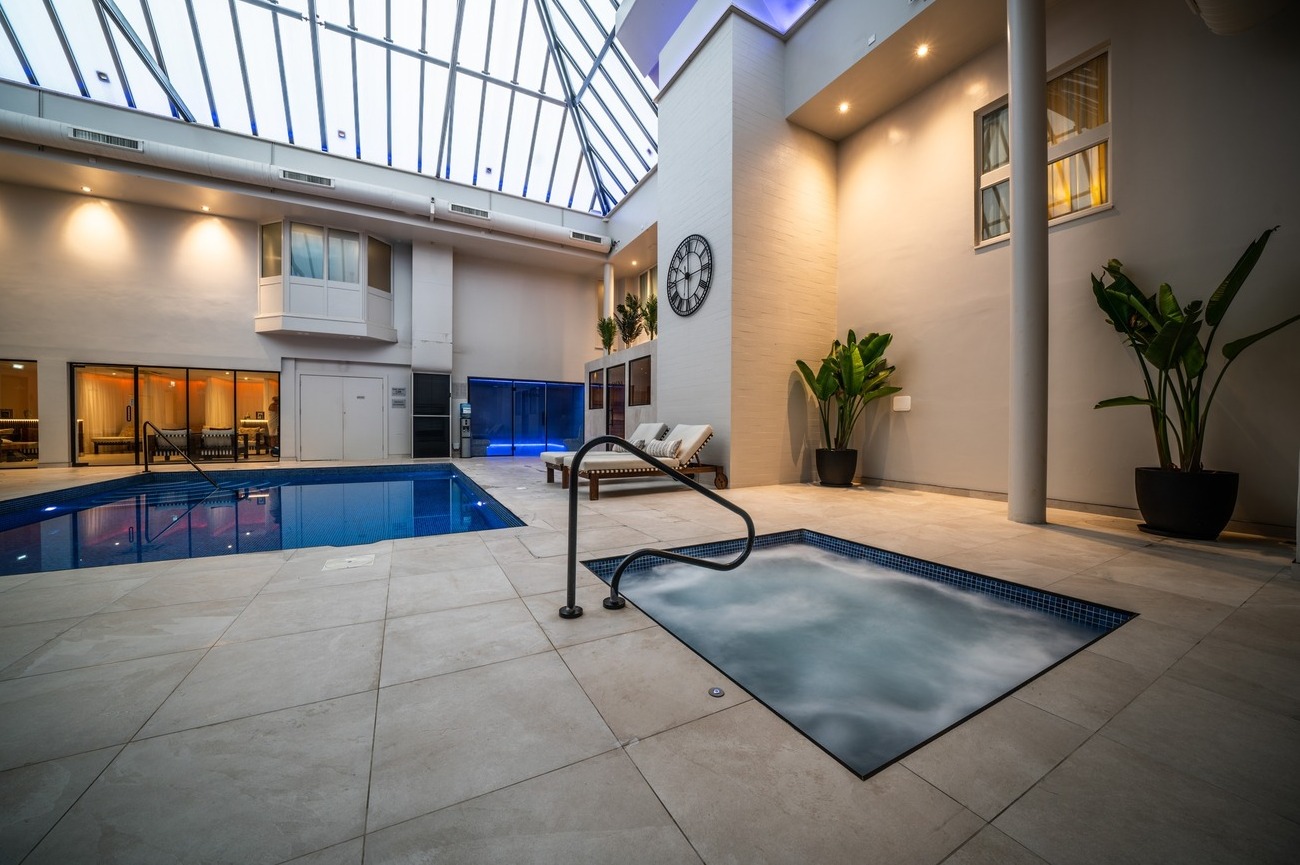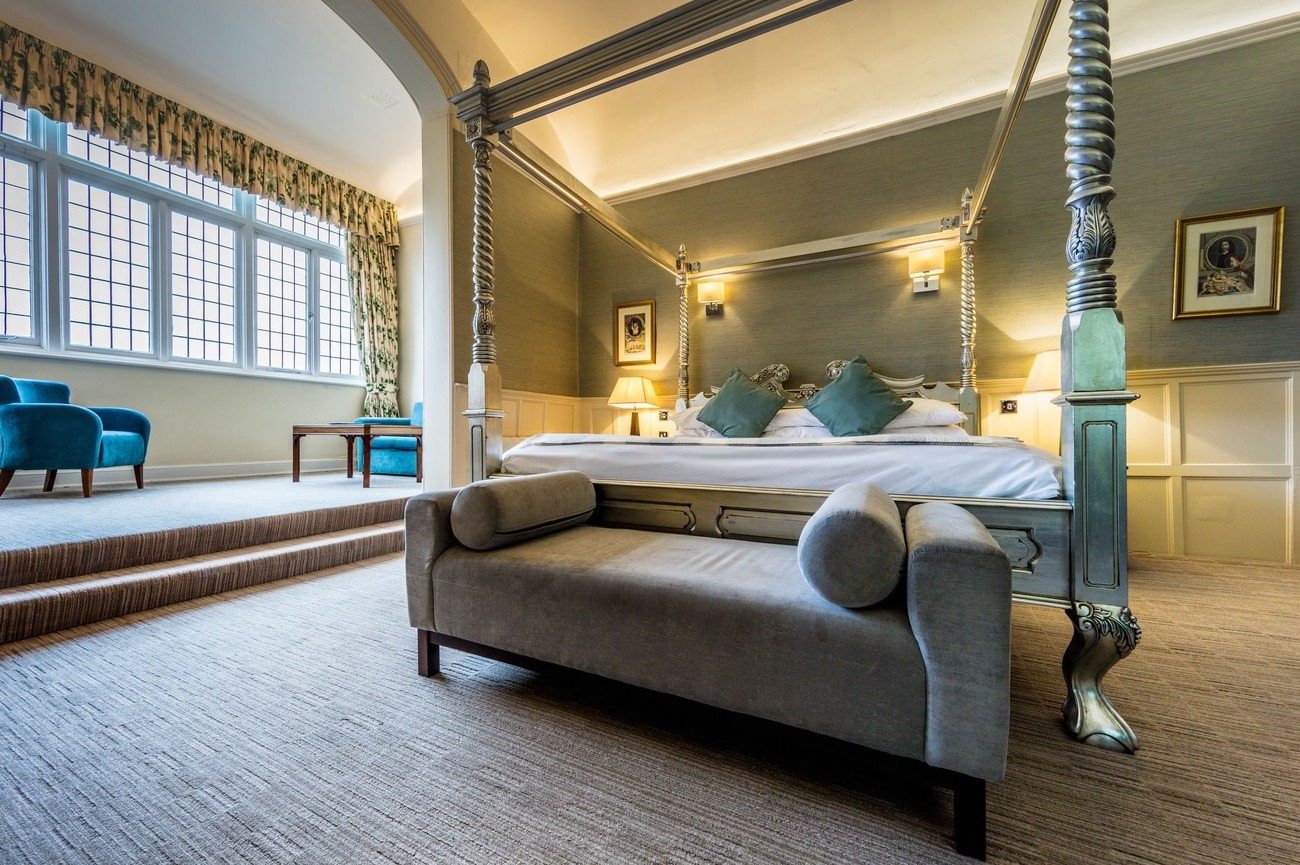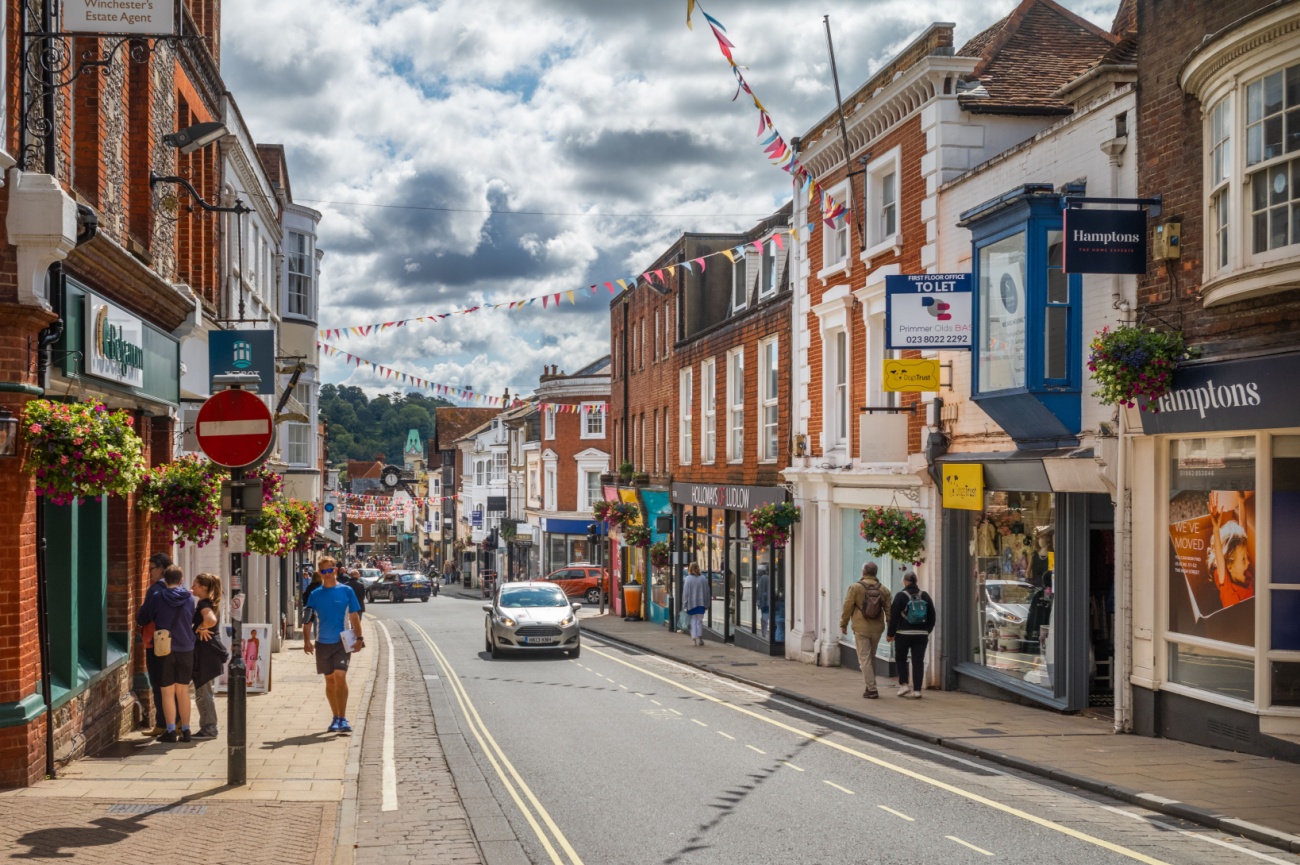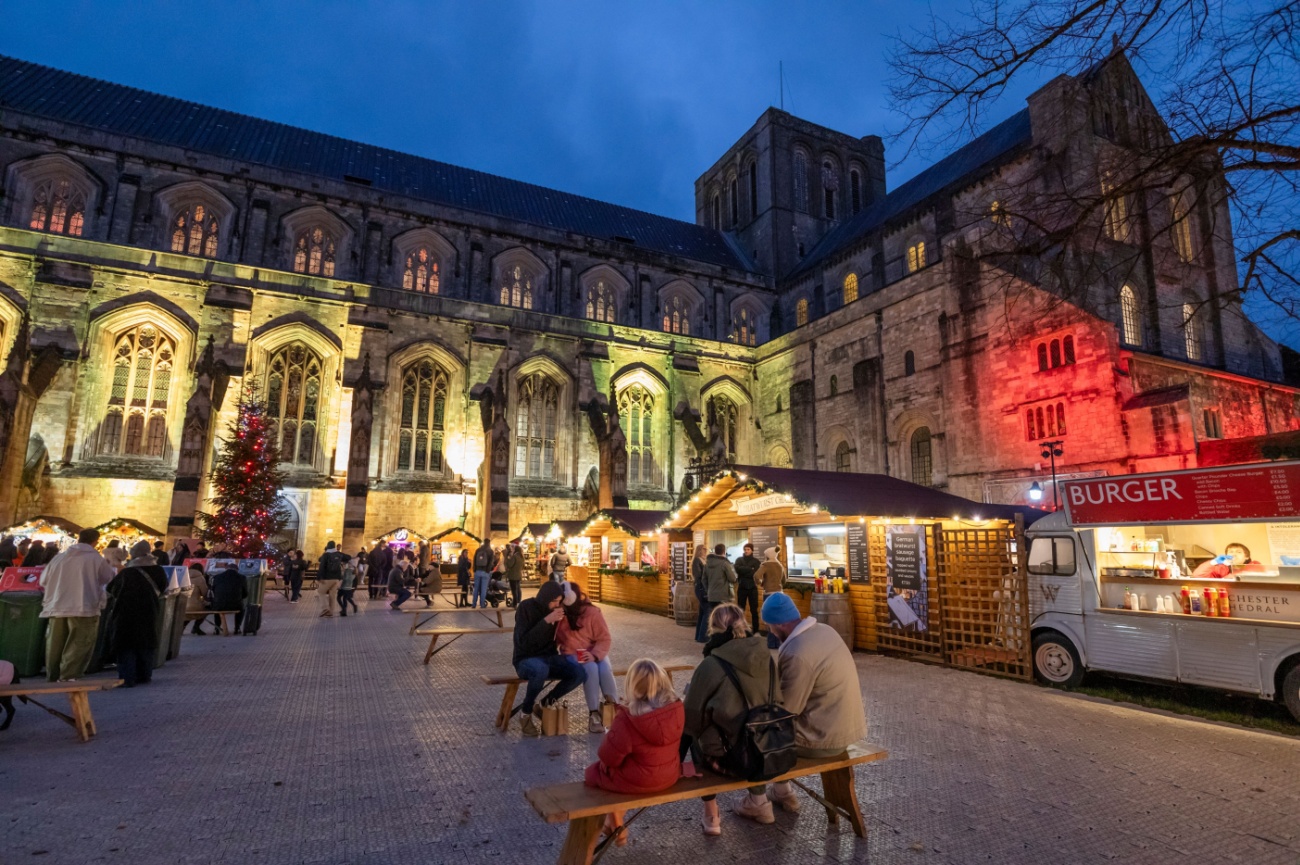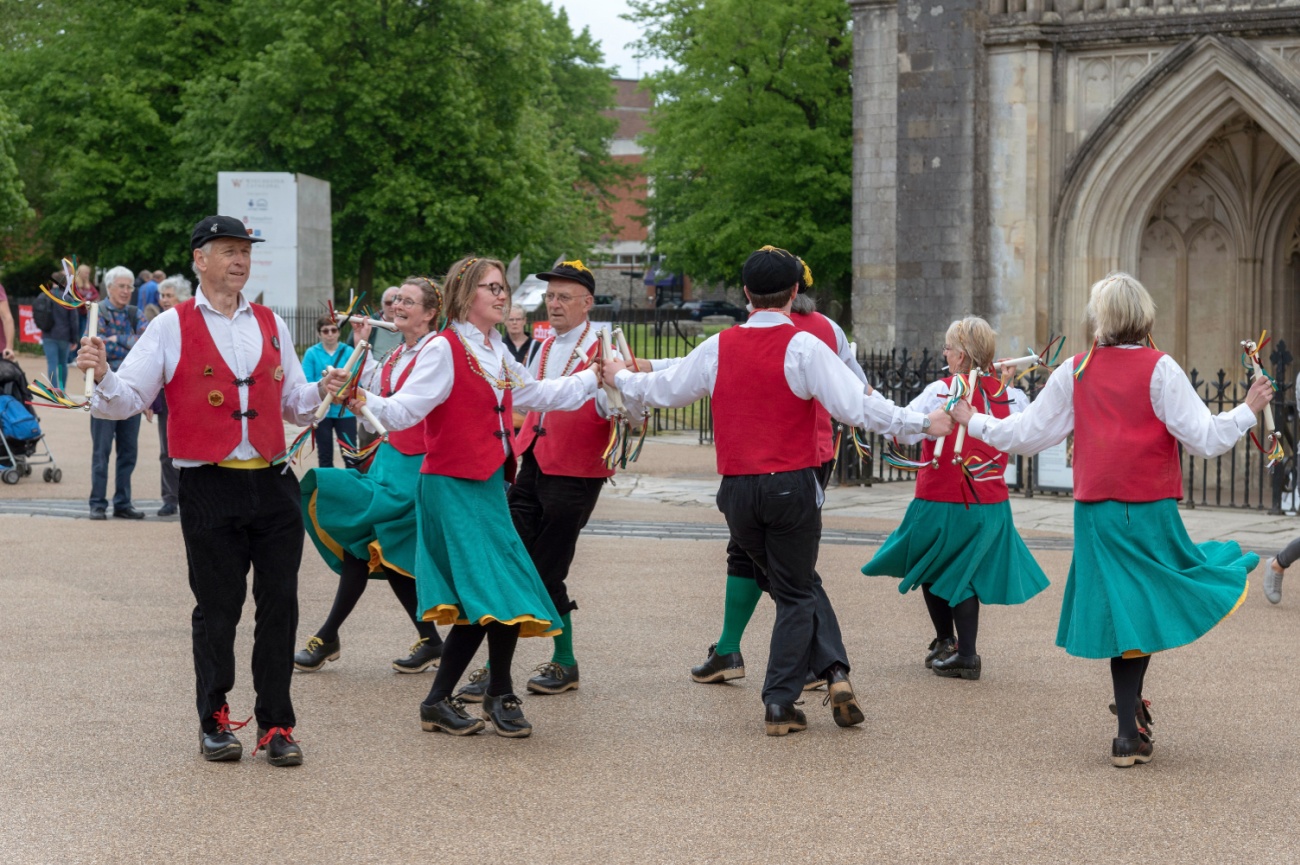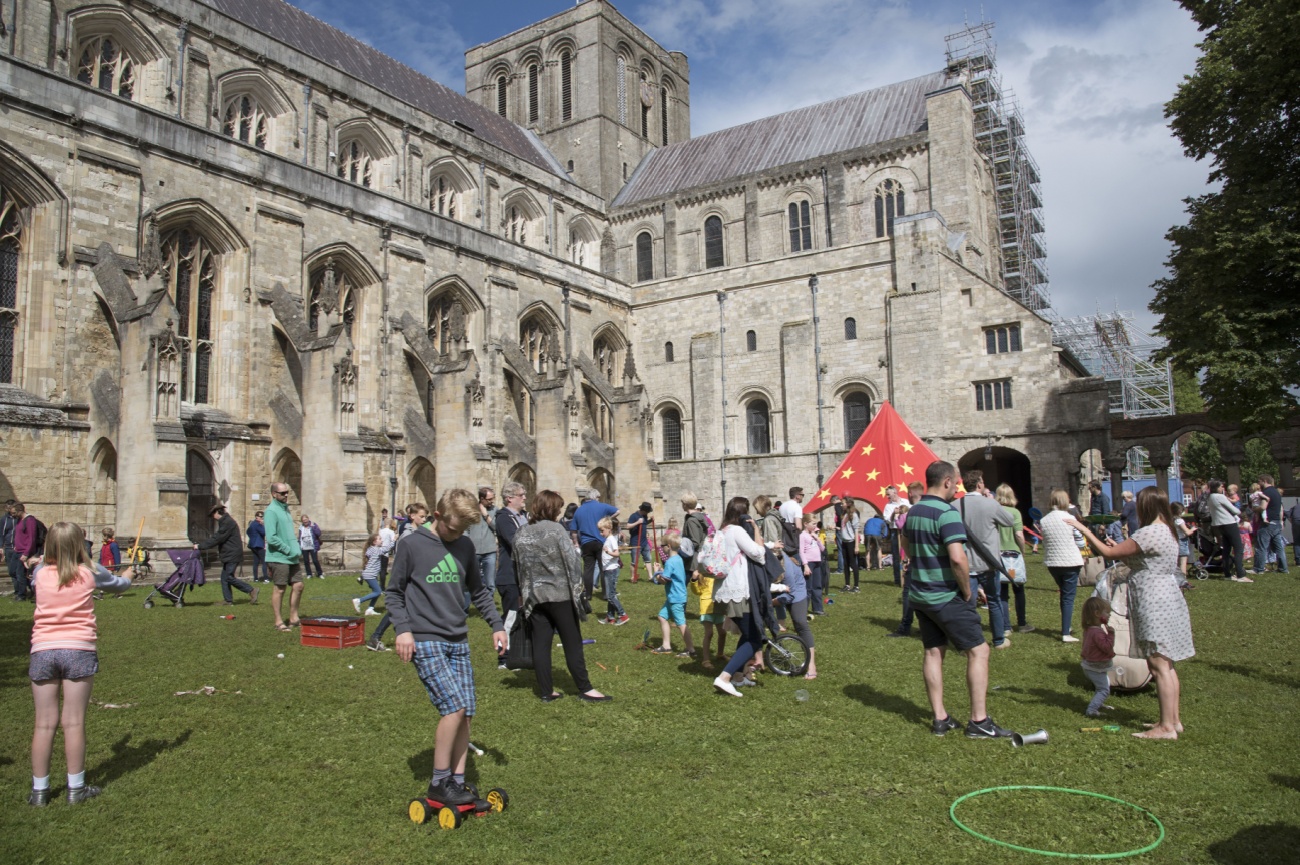Things to Do in Winchester: 2-Day Itinerary
The ancient Medieval city of Winchester is steeped in history, once the royal capital of England, and connected to legends of long ago. From this place, King Arthur and his Round Table convened in the Great Hall and King Alfred the Great began uniting the counties of Anglo-Saxon England. Today, it is one of the country's best-preserved Medieval towns, Hampshire's foodie capital, and the stage for too many arts and music festivals to count.
Day 1

Morning: Westgate Museum
Start your trip at the top of Winchester High Street by visiting the Westgate Museum in a Grade I listed monument. Built in the 12th century, the museum is housed in one of only two surviving Medieval gateways to the city. With a grand stone entrance, heavy wooden doors, guard posts, arrow windows, and portcullis gates, it defended Winchester from invaders and served as a tax booth. When the threat of invasion declined, the gatehouse was a debtor's prison for 150 years. Today, a popular museum inside explains its history over the centuries. There is also a fine-painted ceiling, Tudor costumes to try on, and stunning city vistas from the rooftop.
The Great Hall
Opposite Westgate Museum is the famous Great Hall, built in the 13th century. It is the last remains of the grand Winchester Castle, commissioned by William the Conqueror in 1067 and the seat of the British government for over a century. Today the castle is now reduced to rubble but the Hall is something special. Step inside the imposing Great Hall, which really does live up to its name, to experience one of the most impressive Medieval halls preserved in time. According to legend, it was a meeting place for King Arthur's Round Table. Marvel at the Round Table hanging at one end, vivid stained glass windows depicting coats of arms, a beautiful high vaulted timber ceiling, the intricate steel marriage gates dedicated to Princess Diana and Prince Charles, and a bronze statue of Queen Victoria. Stroll the connecting Long Gallery with interesting displays, historical information, and paintings.
Queen Eleanor's Garden
Just outside the Great Hall is Queen Eleanor's Garden. Walk along the stone paths that skirt flower and herb borders, bay hedges, and turf walls to reach a Purbeck stone fountain, vine arch, and hazel pergola. This quaint garden is a modern recreation of a 13th-century Medieval herbarium, featuring plants and materials that would have been used in gardens of the period. It is named after Queen Eleanor of Provence, the wife of King Henry III, who is said to have been fond of growing herbs for medicine.
Peninsula Barracks
Across the way from the Great Hall are the Peninsula Barracks. A military base to house troops until the 1960s, the Barracks were built on the site of King's House, a 17th-century palace designed by Christopher Wren for King Charles II. In 1894, the original palace was gutted by a fire. Today, the Barracks have been renovated into six military museums including The Gurkha Museum, The Royal Green Jackets Museum, The Adjutant General's Corps Museum, and Horsepower (The Museum of the King's Royal Hussars).
Winchester City Museum
Walk past the Great Hall towards the centre of Winchester to find the City Museum. The museum is one of the oldest museums in the UK, constructed in 1903. Inside, three galleries tell the story of Winchester from its Roman and Saxon roots to its status as Alfred the Great's seat. Make sure to see the Victorian model of Winchester, created when the city was only a third of what it is now.
Day 1, Morning - Winchester Tour Map
Afternoon: Winchester Cathedral
Discover over 1,000 years of history at Winchester Cathedral, the longest cathedral, and one of the largest in Europe. Originally a Saxon church, the cathedral was constructed in the 11th century with Norman and Gothic architecture. Learn about the legend and cult of Saint Swithun, whose bones were said to heal the sick, and sought after by droves of pilgrims. The crypt often floods, transforming into an eerie lake with a part-submerged life-size sculpture of a solitary man. Guided tours are highly recommended, which allow you to climb the tower's spiral staircase to the cathedral rooftop and explore the crypt below.
Winchester Guildhall
Further down from the cathedral, you will find the impressive Winchester Guildhall with its Gothic architecture. Originally, the Guildhall was built in 1873 to serve as a multi-purpose space to house the police department, jails, the fire brigade, a library, courts, a museum, a public exhibition hall, offices, and meeting rooms. The building facade depicts both legends and real history of Winchester including King Arthur, William the Conqueror, King Alfred the Great, and Florence de Lunne. Despite the museum, library, police station, and fire brigade all leaving the Guildhall for larger venues, the Victorian building has stood fast with numerous renovations. Today, there is a popular cafe, conference and functions rooms, and a tourist information centre - all showcasing original Victorian features.
King Alfred the Great Statue
Continue along Broadway to reach the statue of legendary King Alfred the Great. It was constructed in 1899 to commemorate the millennium of King Alfred's death in 899 AD. He is shown with a sword in his right hand and a scroll in his left. This signifies his accomplishments for the country - he began uniting the Anglo-Saxon kingdoms that later created England, defended the country from Viking invasions, and promoted literacy and education.
Abbey Gardens
Opposite the statue of King Alfred the Great are the Abbey Gardens. Walk around the beautiful rose beds, a scented garden, and children's play area. Once the site of King Alfred's Nunnaminster from 903 AD, the monastery was destroyed in 1539 by King Henry VIII. In 1751, a Georgian house and a Doric-style temple were built on the site, which still stands today. Abbey House is now the official residence of the Winchester mayor, although interestingly, the mayor doesn't live in the property, but uses it for entertaining guests.
Day 1, Afternoon - Winchester Tour Map
Day 2

Morning: 878 AD
Head to the Brooks Shopping Centre to time travel through history. Visiting the 878 AD attraction sets the stage for uncovering the importance of Winchester during the Anglo-Saxon period. Developed by Ubisoft and the makers of Assassins Creed, 878 AD is an immersive experience that takes you back to when Winchester was Wessex's important royal and religious capital in one of the most powerful Anglo-Saxon kingdoms. There are live performances by skilled actors telling tales and replicating events from a time of Vikingthreat. Take a look at ancient artefacts, interactive displays, and captivating audio-visuals. There is also an augmented reality app to download and follow as you tour Winchester.
National Trust Winchester City Mill
Walk along the High Street and then Broadway to reach the Winchester City Mill, which sits on the bank of the Itchen River. It is one of the oldest mills in the UK with ancient roots as a Roman and Saxon mill. The original mill became derelict but was rebuilt in 1743 around the 14th and 15th-century structural timbers, which is how you see the mill today. The National Trust took the watermill after WWI to bring it back to its former glory and eventually to function in flour production. Learn about the mill, spot river otters, and visit the delicious cafe.
Winnall Moors Nature Reserve
A short walk north along the river leads to the Winnall Moors Nature Reserve, 84 acres of protected wetlands full of wildlife, chalk streams, rare wildflower meadows, reedbeds, and pastures. There are trails to follow around the reserve and through the woodland. Birds such as reed warblers, chiffchaffs, herons, and kingfishers reside among the flora. Graceful, reddish-colour roe deer are often seen here, grazing in the undergrowth. Dark brown and round-bodied water voles can be spotted swimming in the waters or hurrying around the bushes. The site used to belong to Hyde Abbey during the medieval times with a chapel, which is no longer there. Learn about the reserve and its habitats in the visitor centre.
St Gile's Hill Viewpoint
Walk back towards Winchester Mill and then east to climb up St Gile's Hill. At the top, you will be rewarded with majestic panoramic views over the city including Winchester Cathedral and the Abbey. St Giles Church, a medieval chapel, once stood proudly atop the hill, which has long since been demolished. Historically, the Romans and Anglo-Saxons have used this hill as burial grounds.
Day 2, Morning - Winchester Tour Map
Afternoon: Keats' Walk
Start the afternoon with a tranquil stroll along Keats' Walk that takes you from the city centre and south along the River Itchen. The Walk is named after John Keats, a romantic poet who stayed in Winchester in 1819 and was influenced by the area's natural beauty. He is said to have taken this daily walk, from the Cathedral, past the ruins of Wolvesey Castle, and ending at the water meadows at St Cross Church. It is one mile long and takes around half an hour to walk one way.
Hospital of St Cross and Almshouse of Noble Poverty
The finishing point of Keats' Walk is St Cross Church and the Hospital of St Cross, south of the city centre. The Grade I-listed hospital site includes a Norman church and a medieval almshouse founded in 1132 by Henry of Blois, the grandson of William the Conqueror. Its establishment was to provide shelter, food, and care for poor and needy men. Unlike a monastery, the hospital is a Christian charity foundation run by the Brothers of St Cross, not monks. It is the oldest almshouse still used in England and provides accommodation, a barber, and lunch for elderly men. The original 12th-century hospital no longer exists but was replaced by an almshouse in the 17th century with a charming design.
Prebook a guided tour with one of the resident Brothers in his traditional attire. The tour will take you around the 12th and 13th-century church, the 14th-century Brethren's Hall and the Minstrel's Gallery, the Tudor ambulatory, and the Georgian kitchen and bread room. Hear about the Hospital's medieval history, legends, and tales.
The Hundred Men's Hall tea room serves a splendid array of refreshments including morning coffee and afternoon tea. There is also the carefully maintained Master's Garden, Compton Garden, and bowling green, which feature spectacular flowers, a lily pond, medieval herbs, rosebeds, and hedgerows. The Porter's Lodge Gift Shop offers handmade pottery and wares emblazoned with the hospital cross emblem.
St Cross Church
The church is marvelled for its late Norman architecture and stonework. The high-vaulted ceilings, one-metre-thick stone walls, intricately carved wooden pews, and 20th-century stained glass windows are especially intriguing. Every Thursday a lunchtime "Perfect Pitch" concert is held in the church with a performance by young music students from nearby music academies. Daily services are still held at the private chapel, which can be visited on Sunday services or as part of a pre-booked tour. You may also request to partake in the longstanding tradition of the "Wayfarer's Dole," a small horn of beer and a morsel of bread given to weary travellers. It is a testament to The Hospital of St Cross' foundation in charity and hospitality, dating back to the Middle Ages.
Day 2, Afternoon - Winchester Tour Map
Other Things to Do in Winchester
- Tank Driving: One of the most top-rated outdoor activities is tank driving. Companies such as Juniper Leisure (The Tank Driving Company) allow visitors to sit in the driver's seat and navigate one of their heavily armoured combat vehicles, including the Chieftain, a 55-tonne tank with 700 horsepower. Friendly and experienced instructors lead the tank driving course, some of whom served in the Falklands and Gulf Wars.
- Clue Capers Escape Room: A fun group activity for 2-48 people on the lookout for an exhilarating puzzle-solving experience should try the Clue Capers Escape Room. Decipher codes, hunt for clues, find keys to unlock boxes, and answer riddles during a one-hour challenge. It's perfect for families, groups of friends, or escape room fans who want a break from sightseeing.
- Winchester Farmers Market: For visitors who are in Winchester on the second or the last Sunday of the month, be sure to stop by the award-winning Winchester Farmers Market. From 9am until 2pm on the High Street and Middle Brook Street, stalls are full of fresh locally-grown produce.
- The Gallery at The Arc: Regular exhibitions at Winchester's hub feature award-winning nationally and internationally-recognised artists and photographers. The Arc offers art classes, theatre shows, comedy shows, music concerts, and a library in a stunning Grade II-listed building on Jewry Street. In the 19th century, the building started life as the Corn Exchange, where farmers sold and bought goods.
- Theatre Royal Winchester: Also on Jewry Street is the local theatre which boasts a range of live drama, music, dance, and comedy performances and cinema shows. The building was originally the Market Hotel in the 1850s for farmers on the way to the Corn Exchange. By 1912, it had been converted into a cine variety theatre, bringing live theatre to the stage as well as silent films. It became a permanent cinema for over fifty years before the building was extended and it was converted once again to a reputable theatre. There are also backstage tours to learn more about its fascinating history.
- Winchester Buttercross: Adorning the High Street is the ancient and protected 14th-century Winchester Buttercross, also known as the High Cross. It is a tall Catholic stone cross sitting atop a stepped octagon platform. The cross has multiple pinnacles and carvings of saints, Alfred the Great, an early mayor of Winchester, and the Virgin Mary. Goods were once sold on the steps of the cross such as butter, cheese, and eggs, as this cross was used to mark the place of commerce. It managed to survive King Henry VIII's dissolution of the Catholic Church and underwent restoration by the Victorians.
- St Catherine's Hill: A 40-minute walk south of the Winchester centre is the grassland nature reserve of St Catherine's Hill. It covers 143 acres of chalk downland, with the remains of an Iron Age hill fort and a Norman chapel. The 230-foot hill is covered in wildflowers and popular with many species of butterfly. There is a steep climb to the top, which is worth it for the magnificent views of the city below.
Day Trips from Winchester
- Stonehenge: One of the UK's most mysterious prehistoric sites is the megalithic Stonehenge structure. A circle of 13-foot huge standing stones weighing 25 tonnes each, Stonehenge has stumped archaeologists, experts, and visitors for centuries. Construction of the circle began around 3,000 BC but its purpose remains unknown. Stonehenge and itsvisitor centre are 30 miles drive from Winchester. You can also take the train from Winchester to Salisbury, and an hourly bus from Salisbury to the site.
- Jane Austen’s House: Literary lovers will enjoy a trip to Jane Austen's House in the picturesque village of Chawton, 16 miles east of Winchester. The Grade I-listed cottage is where Jane Austen lived for eight years from 1816 and the birthplace of her six novels. The museum has been fully restored to showcase the house as it would have looked when Jane and her family lived there, including her writing table, and period wallpaper and furniture. See her jewellery, letters, and first editions of her books. Try on Regency costumes and play garden games on the lawn. Drive 25 minutes to the house or take the number 64 bus from Winchester.
- The Watercress Line: Travel back in time with a ride through the South Downs National Park on a steam train. The Watercress Line is a heritage railway with locomotives rescued from a Welsh scrapyard and returned to pristine condition. Today, visitors can book fine dining, cream tea, and Sunday lunch aboard the trains, which start at Alresford and stop at Ropley, Medstead Four Marks, and Alton stations. Walk in the footsteps of Harry Potter where he received his Hogwarts Express ticket, see the engineering sheds and workshops, or book a steam train driving experience. Alresford Station is a 14-minute drive, 50 minutes by bicycle, or 25 minutes via the number 64 bus from Winchester.
- Hensting Alpacas: For animal enthusiasts, put your hiking boots on and put Alpaca and llama walking on your Winchester itinerary. The Alpacas are extremely friendly and sweet fluffy creatures who adore socialising and walking with guests around the Hensting smallholding. To get there, head to the village of Otterbourne, only a twelve-minute drive from the city.
- Itchen Valley Country Park: For outdoor activities such as walking, orienteering, bird watching, climbing a Go Ape tree top course, and cycling, head to the Itchen Valley Country Park near Southampton. Just a 20-minute drive from Winchester, the park is a protected natural area with 440 acres of wild meadows, ancient woodland, a floating water meadow nature reserve beside the River Itchen, grassland, and 19th-century canals. There are also children's indoor and outdoor play areas and a barn cafe.
- Windsor Castle: The oldest and largest castle in the world, which is still lived in today, is Windsor Castle. It has been a royal residence for 1,000 years and it was William the Conqueror, the first king of England, who built the castle in 1070. Visit the grand state apartments, ceremonial rooms adorned in gold decor, St George's Chapel, and see Queen Mary's doll house. Windsor Castle is a one-hour drive north of Winchester in the town of Windsor outside London.
- Danebury Iron Age Hillfort: A half-an-hour drive northwest of Winchester brings you to one of the most studied Iron Age hill forts in Europe. Near Stockbridge, the hill fort was built by the native Danebury people 2,500 years ago, before the Roman Empire began. You can see the ring at the top of the hill, which is the remains of the defensive walls that once stood there. There are the ruins of roundhouses and rectangular buildings, pagan shrines and temples, and deep storage pits.
- Highclere Castle: North of Winchester in Highclere is Highclere Castle, a stately home owned by the Earls of Carnarvon and only a 30-minute drive away. Amidst 1,060 acres of landscaped parkland designed by Lancelot "Capability" Brown, sits a grand 200-room mansion, which was once a bishop's palace and later the home of the 5th Earl of Carnarvon, who discovered the tomb of Tutankhamun. It was also the setting of Downton Abbey.
- Bishop's Waltham Palace: The ruins of an abbey that once had strong ties to the Catholic Church lie 20 minutes south of Winchester on the edge of South Downs National Park. During the medieval period, these remains were a huge, impressive, and luxurious palace where the wealthiest churchmen in Europe lived. It was destroyed during the Civil War of 1642, however, the preserved ruins and a museum are open to visitors.
- Weald and Downland Living Museum: Not far from Bishop's Waltham Palace is an open-air museum offering the experience of rural working life in the Middle Ages. The site covers 40 acres in the South Downs National Park including 50 restored medieval timber-framed buildings that form a working medieval village, farmhouses, cottages, watermills, granaries, plumber and joiner's workshops, stables, and a school. Open-air theatre and events regularly take place.
- Whitchurch Silk Mill: A working silk mill established on land owned by Winchester Cathedral in 1813. The mill lies at Whitchurch town, just twenty minutes from Winchester. Over the years, the mill changed hands and at one time produced silk linings for Burberry raincoats in the early 20th century. There are restored Victorian machinery and the original waterwheel that powered the weaving looms over the years. The mill still produces pure silk, herringbone, and twill with traditional skills and techniques.
- Longstock Park Water Gardens: An internationally renowned water garden 25 minutes by car from Winchester. It began as a hobby project by John Spedan Lewis, the founder of the John Lewis department store, at his home on the Leckford Estate. It has been named “the finest water garden in the world” by the International Waterlily & Water Gardening Society. There are six acres of ponds with islands, 100 species of trees, and 40 species of water lilies.
- Sir Harold Hillier Gardens: 180 acres of award-winning gardens and arboretum near Romsey, twenty minutes by car from Winchester. There are 42,000 trees and shrubs including handsome oaks, camellia, magnolia, rhododendron, mysterious dawn redwood, Chinese fir, and Japanese maple arranged in themed valleys. Walk through meadows, around ponds, and visit the white gable-roofed 18th-century Jermyn's House.
- National Trust Mottisfont: Once a medieval monastery, Mottisfont became a beautiful mansion house in the 18th century. It still has vaulted ceilings, columns, and a brick floor in the Cellarium. Over time, the mansion became a Tudor palace, followed by Georgian refurbishments, and neo-classical improvements in the 20th century. There are art exhibitions and a large estate of woodland, wetland, a world-class rose garden, walled gardens, and waterways from the River Test. It is close to the Sir Harold Hillier Gardens.
- Salisbury: A small medieval city 20 minutes by car to Stonehenge and 40 minutes to Winchester. Take a guided tour of the 13th-century Salisbury Cathedral to climb into the rooftop and admire the view below. It has a 14th-century working clock and an original copy of the Magna Carta. Stop by a historic house that once belonged to a Prime Minister, Baroque townhouses, St Thomas' Church, and a playhouse.
- Portsmouth: 40-minutes south of Winchester is the seaside city of Portsmouth. Famous as an important sea port and a Royal Navy base since 1194. Take a guided tour of the Portsmouth historic dockyards to see ancient restored warships such as the HMS Victory and HMS Warrior 1860. Portchester Castle is worth visiting to learn about its role as a medieval fortress, Norman stronghold, and a prisoner of war camp during the Napoleonic Wars.
- Southampton: Another significant port rich in maritime history and only 20 minutes by car from Winchester. From Southampton, the renowned Mayflower set sail to the newfound Americas with the first English settlers. Aside from the harbour, other intriguing attractions include the meticulously restored Tudor House and Garden, SeaCity Museum, Solent Sky Museum, and walks along the Old Town Walls. You can also take a ferry to the Isle of Wight.
- Chichester: An hours' drive from Winchester is Chichester on the south coast. A small agricultural town with a history as a Roman and Anglo-Saxon settlement, and later a centre for the medieval wool trade, it is packed with character and charm. Stroll through Chichester Cathedral, West Dean Gardens, Goodwood House, and Bosham Quay.
- Ruins of Odiham Castle: Also known as King John's Castle, Odiham Castle is half an hour by car from Winchester, near Basingstoke. It is one of only three castles built by King John during his reign in the 13th century. The castle was built in 1207 and served as a powerful royal residence, endured a French siege and witnessed royal rebellion, before becoming a hunting lodge. It was reduced to ruins by 1603.
Things to Do with Kids in Winchester
- Winchester City Museum: The museum has hands-on activities just for kids such as a scavenger hunt called the "Museum Spotter Trail," Roman and Saxon costumes to try on, handling artefacts like an archaeologist, and participating in interactive workshops.
- The Winchester Treasure Trail: Produced by a leading treasure trail company, Treasure Trails, kids and adults can explore the city of Winchester with a self-guided treasure hunt. The story follows the thief Cat Berglagh, who stole a valuable item from Winchester Cathedral. Your task is to finish the walking trail and close the criminal case. The guide includes maps and clues to solve, available from the Treasure Trails website.
- Bella Crafts: The Bella Crafts arts and crafts workshop is an easy way to entertain children with activities for parents too. Choose from walk-in sessions such as glass painting, decoupage, silk and fabric painting, jewellery making, pottery painting, and preschool crafts. There's also a children's soft play area, a tea room, and a haberdashery shop. The workshop is close to the high street and Brooks Shopping Centre.
- Marwell Zoo: Step into the magical animal kingdom at Marwell Zoo – 140 acres of habitats and enclosures that protect 1,208 exotic and endangered creatures. Admire Amur tigers, clouded leopards, bearded monkeys, crocodiles, lemurs, zebras, penguins, ostriches, white rhinoceros, and pygmy hippopotamus. Stop by the cafes, outdoor picnic areas, adventure playgrounds, and gift shop. Learn about the conservation work and the animals that live there by watching the daily talks and shows. The park recommends at least four hours for your first visit to enjoy everything at the zoo. Get there by car (17 minutes), bus (37 minutes), or bicycle (39 minutes) south of Winchester.
- Winchester Science Centre and Planetarium: Family fun, interactive educational games, and live science are what to expect at the state-of-the-art Winchester Science Centre. Science comes to life with explosive shows, "don't try this at home" chair-gripping demonstrations, and full-dome 360-degree intergalactic film presentations. Crawl through a giant ear to see how it works, experience the acoustics of a sonic rocket, go on an outdoor scavenger hunt, and blast into space. Kids and adults will have a blast at every corner. Get there by car (7 minutes), walking (50 minutes), or cycling (17 minutes) east of Winchester.
- Bicycle Tour: Keep children entertained and active on a family cycling tour of the city. There are cycle rental shops that offer adult and child bicycles to rent, children's bike trailers, and tag-along bikes as well as guides if you'd like to follow a local expert. Winchester is also the gateway to the South Downs National Park, a serene landscape of chalk hills, grassland, woods, and farmland. Cycling from the city and through the national park is easy and safe. Follow the South Downs Way, King Alfred's Way, one of many car-free bridleways, old railway trails, and country lanes.
- Legoland Windsor Resort: The world of lego awaits at this theme park in Windsor, an hour from Winchester. There are 55 rides and attractions for all the family including Flight of the Sky Lion, Haunted House Monster Party, Pirate Falls Treasure Quest, and Viking River Splash. 40 million Lego bricks were used to create Miniland – miniature model scenes from around the world.
- Peppa Pig World: Paultons Park home of Peppa Pig World. There are nine Peppa Pig-themed roller coasters and attractions in the Peppa Pig section of Paultons Park. Little ones who love the pink pig cartoon will love this magical world. The amusement park is in the New Forest National Park where there are over 70 other family rides.
- Finkley Down Farm: Just 20 minutes by car north of Winchester is an award-winning farm and adventure park in Andover. The ultimate place for kids to let off steam, there are wooden fortress climbing frames, a massive indoor play barn, zip wires, trampolines, a Little Farmer's Driving School, animal feeding, crazy golf, go-karts, sandpits, and rocket slides.
- Twyford Waterworks Museum: A preserved Edwardian clean water pumping station and waterworks at Twyford, 10 minutes by car from Winchester. It was first opened in 1898 for water extraction and to supply water to the surrounding area by use of steam engines. Later, the site used diesel engines, all of these mechanical pieces you can see in the museum. The station still provides clean water today by bringing up water from deep holes in the chalk downland.
- Eastleigh Lakeside Steam Railway: 17-minutes driving north of Winchester is a steam railway in Lakeside Country Park. The mini steam-powered locomotives take passengers on a 25-minute ride covering 1.25 miles across Hampshire. See a selection of 19 steam and diesel locomotives including the No. 1001 The Monarch 10¼ built in 1932, No. 1002 The Empress 10¼ built in 1933, and No. 2005 Silver Jubilee 10¼. There is also a Lakeside cafe for refreshments.
Golf Courses in Winchester
- Leckford: The old and new courses at Leckford Estate are well-formed with beautiful green complexes, owned by the John Lewis Partnership. The old course was originally built in 1929 by the design of Harry Colt. The layout has largely been preserved since pre-war times on chalky downland, which offers excellent drainage, remaining playable even after heavy rainfall, and firm fairways. Players remark that the course features lovely contours andvexing runoffs. There is a charming clubhouse, practice areas, and a pro shop. Leckford is 20 minutes drive north of Winchester.
- Hockley: Another top-rated golf course is at Hockley, beside the River Itchen. It was founded in 1914, once a silver wedding anniversary gift of landowner Horace Trimmer to his wife who loved the sport. Since then, the course was re-aligned by the design of James Braid. The challenging 18-hole course is set in the downlands with picturesque views of Southampton and if you're lucky, the Isle of Wight. There is a clubhouse, restaurant and bar, golf academy, and pro shop.
- Royal Winchester: A private golf club with over 800 members, Royal Winchester offers a friendly atmosphere and a long history, founded in 1888. JH Taylor designed the course, later modified by Harry Colt, on undulating downlands. The fairway turf is springy all year around and the course is very well maintained. The club gained royal recognition in 1893 by the Duke of Connaught and again in 1913 by King George V, authorising the prefix in the club's name. An extensive menu is available at the recently refurbished clubhouse, which can be enjoyed on the spectacular outdoor balcony in the summer.
- South Winchester Golf Club: An 18-hole faux links-style golf course, South Winchester Golf Club was designed by Peter Alliss and Dave Thomas in the 1990s. It is part of the Crown Golf Group. The long and challenging course sweeps around 23 acres of terrain with wide fairways, lakes, ponds, and streams. Practise on the covered driving range, buy equipment at the pro shop, and relax in the lakeside hunting lodge clubhouse featuring a log fire and delicious food.
- Alresford Golf Club: Sitting beside the market town of Alresford is the Alresford Golf Club, established in 1890. The downland 18-hole course on the hills of the Tichborne Down offers a tranquil setting in the Hampshire countryside. It provides a good challenge for both beginners and experienced players. There is a short game area, covered practice bays, putting greens, a modern and welcoming clubhouse, and a pro shop.
Where to Eat in Winchester
- Chesil Rectory: Featured in the Michelin Guide, the Chesil Rectory in the centre of Winchester serves classic British dishes with new and unexpected flavours using seasonal local produce. The candlelit atmosphere is unique, as the restaurant is housed in a crooked 600-year-old Grade II-listed building, with 15th-century heavy timber beams and vintage chandeliers. The delicate cooking style has earned it two AA rosettes.
- Rick Stein: Celebrity chef Rick Stein's restaurant in Winchester specialises in Cornish seafood dishes including Dover sole, Jersey oysters, salt cod fishcakes, and chilli garlic mussels. Fresh fish is delivered daily from Cornwall to bring the taste of the south-west coast to Hampshire.
- The Porter House: Lying on the old Jewry Street is the Porter House, a superb steakhouse earning a Tripadvisor Travellers' Choice Award in 2023. The interior is humble and unassuming, but the food is showstopping. All the steaks are 100% grass-fed, naturally-reared British beef alongside wood-smoked salmon, pan-fried jumbo prawns, and fresh sea bass.
- Brasserie Blanc: Celebrated French chef, Raymond Blanc owns the much-loved Brasserie Blanc on Jewry Street. The warm and welcoming service is a hit with diners as is the French cuisine menu, bursting with locally-sourced fresh and seasonal ingredients. Mediterranean fish soup, seared scallops, duck confit with citrus sauce, and chalk stream trout are favourites to try.
- The Ivy Winchester Brasserie: A sophisticated and luxurious dining experience awaits at The Ivy on Winchester's high street. One of the sisters to the original The Ivy in London opened in 1917, the Winchester restaurant promises the same glamorous style. The Art Deco design of the interior makes a lasting impression with a grand onyx bar, plush seating, elegant padded booths, and lush green palms. The lobster linguine, pan-fried sea bass, and gold-dusted chocolate bomb are particular dishes that delight guests.
- St James Tavern: For the authentic British pub experience, tuck into dinner at the St. James Tavern on Romsey Road. Established in 1859, it's a traditional and cosy tavern steeped in history with old town photos and witty signs fighting for space on the walls. The food is simple yet divine. Sunday roast dinners are recommended, as are the crab arancini, homemade pot pie, and sticky toffee pudding.
Where to Stay in Winchester
- Lainston House (5 stars): Within 63 acres of parkland lies a 17th-century country house hotel with a mix of Tudor, Georgian, and Victorian architecture. The house has 50 individually styled and well-appointment bedrooms, a three-AA rosette restaurant, a gym, tennis courts, and a kitchen garden. It is a ten-minute drive to Winchester.
- The Grosvenor Stockbridge (5 stars): Just 12 minutes driving from Winchester, in the neighbouring village of Stockbridge. A gorgeous and sumptuous luxury hotel in a restored Georgian country house. It was featured in the Sunday Times 100 Best Hotels in 2023. Highlights are the brasserie, drawing room, and walled garden.
- Hotel du Vin Winchester (4 stars): Right in the heart of Winchester, the Hotel du Vin is only a six-minute walk from Winchester Cathedral. The elegant 17th-century building is full of character with 24 distinctive rooms. A brick-paved courtyard and fountain provide a tranquil dining area in the warmer months.
- Winchester Hotel & Spa (4 stars): A short ten-minute walk into town with all of Winchester at your feet. The hotel is set in a peaceful location with spacious and comfortable suites, tastefully designed, and a luxury feel. The spa has a jacuzzi, steam room, sauna, and compact pool. Beauty treatments are also available.
- Winchester Royal Hotel (3 stars): 81 cosy bedrooms within a historical 16th-century house once a private residence to Lady West, later a convent, and eventually a hotel from 1857. There's a mix of standard rooms and royal four-poster bed suites. There is a welcoming restaurant and a walled garden.
Best Time to Visit Winchester
- June until August: The hottest British months of the year are best for visiting Winchester. Not only are all the attractions open for longer hours, but the parklands, Itchen River walks, and outdoor activities are more pleasurable without getting soggy or muddy in the rain. Most of Winchester's festivals take place from July to August plus many other special events and shows in the city's historical venues. Winchester doesn't experience the woes of high tourism such as packed streets, cramped restaurants, and sold-out tickets as with other larger cities during the summer.
- Winter closures: As with most places across the UK during the winter, the hours are shorter at most of the attractions due to the colder temperatures and smaller crowds of visitors. Marwell Zoo is closed from November until February, the Winchester Science Centre is closed over Christmas and New Year, and the Itchen Valley Country Park has shorter daily opening hours. However, there is a Winchester Christmas Market and festivities at many of the city's historical places of interest.
Winchester Festivals
- Winchester Mayfest: For one day in mid-May, Winchester celebrates a traditional folk event with music and dancing native to Hampshire. There will be clog, Morris, Appalachian, and sword dancing. Folk and jazz bands perform alongside the dancers at the Great Hall, Winchester Cathedral, the Buttercross, and outside the Winchester City Museum. Maypole dancing, ceilidh, choirs, and orchestras will also take place.
- The Cheese and Chilli Festival: The North Walls Recreation Ground hosts the annual two-day event in June to test chilli spice tolerance, delight the taste buds of cheese fans, and showcase the best local foodie products around Winchester. A family day out wouldn't be complete without children's entertainment, bouncy castles, wrestling displays, live music, and crazy golf.
- Winchester Hat Fair: Arguably the most anticipated festival of the year. It is the UK's longest-running outdoor arts festival (with absolutely nothing to do with hats). Street theatre, circus performances, storytelling, stunts, a 13-foot puppet, a giant wheel performance, singing, and dance are free to watch in the city centre.
- The Grange Festival: One month from June to July is dedicated to a world-class opera, jazz, ballet, and theatre festival at an English country house, The Grange, in Alresford. Led by artistic director Michael Chance, the festival promises dramatic and moving performances to leave you completely in awe of the talent and discipline of the artists.
- A Taste of Winchester and Winchester Food Festival: Foodies need to stop by to taste local delicacies for one week during early July. A Taste of Winchester is a week celebrating food and drink in the run-up to the Winchester Food Festival. There are workshops, talks, masterclasses, themed menus, chefs, and producers to meet.
- Wickham Festival: Live music on four stages, walkabout entertainers, circus shows, and spoken word narrators provide family amusement for four days in August. The festival is held in the village of Wickham.
- Boomtown: A theatrical and musical immersive experience across four days in August. The event showcases electronic, house, afrobeats, reggae, punk, blues, hip hop, and jungle music at the Matterley Estate in the South Downs National Park. The large-scale sets to create town buildings and live actors make it a unique and creative concept.
Our offices:
